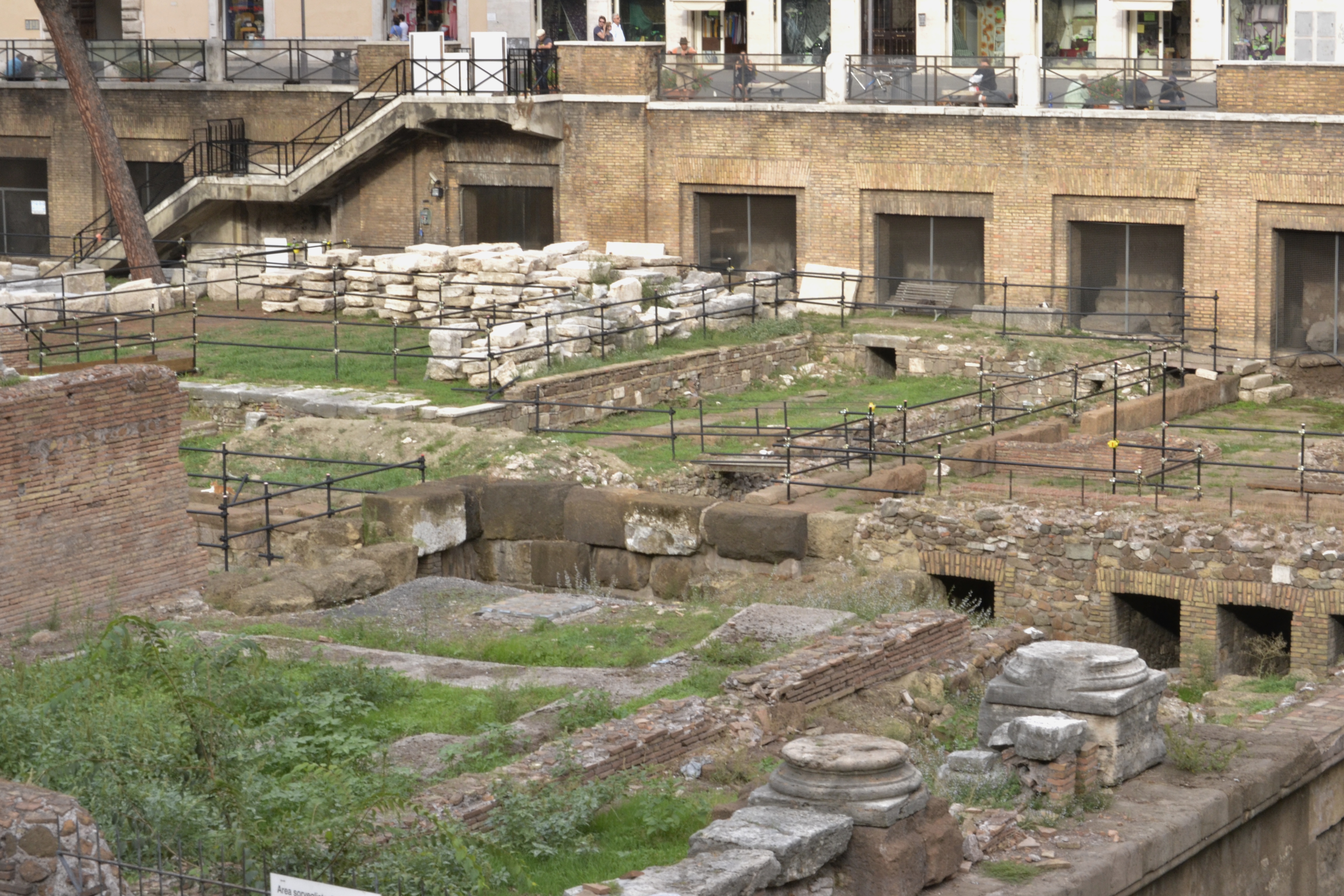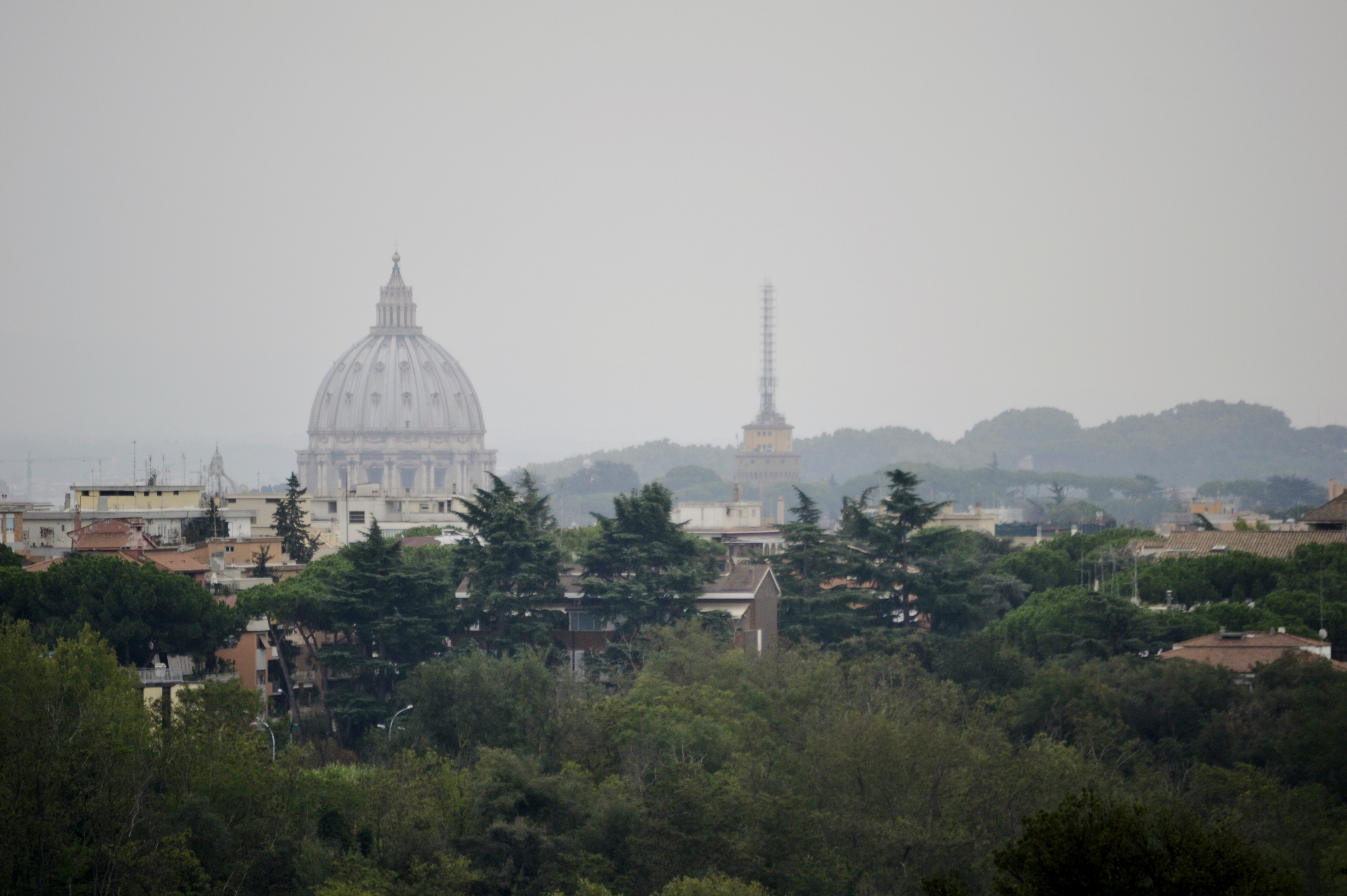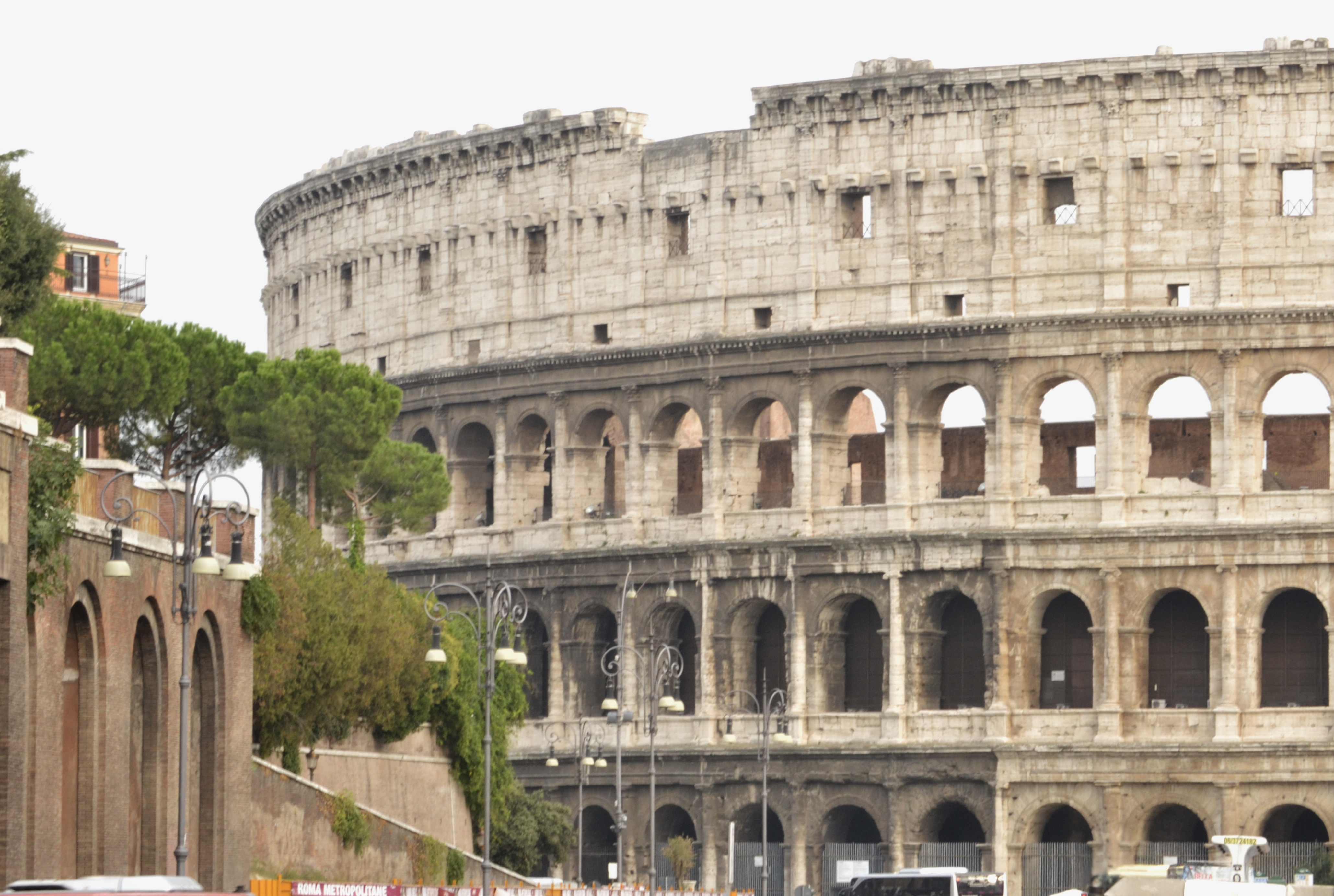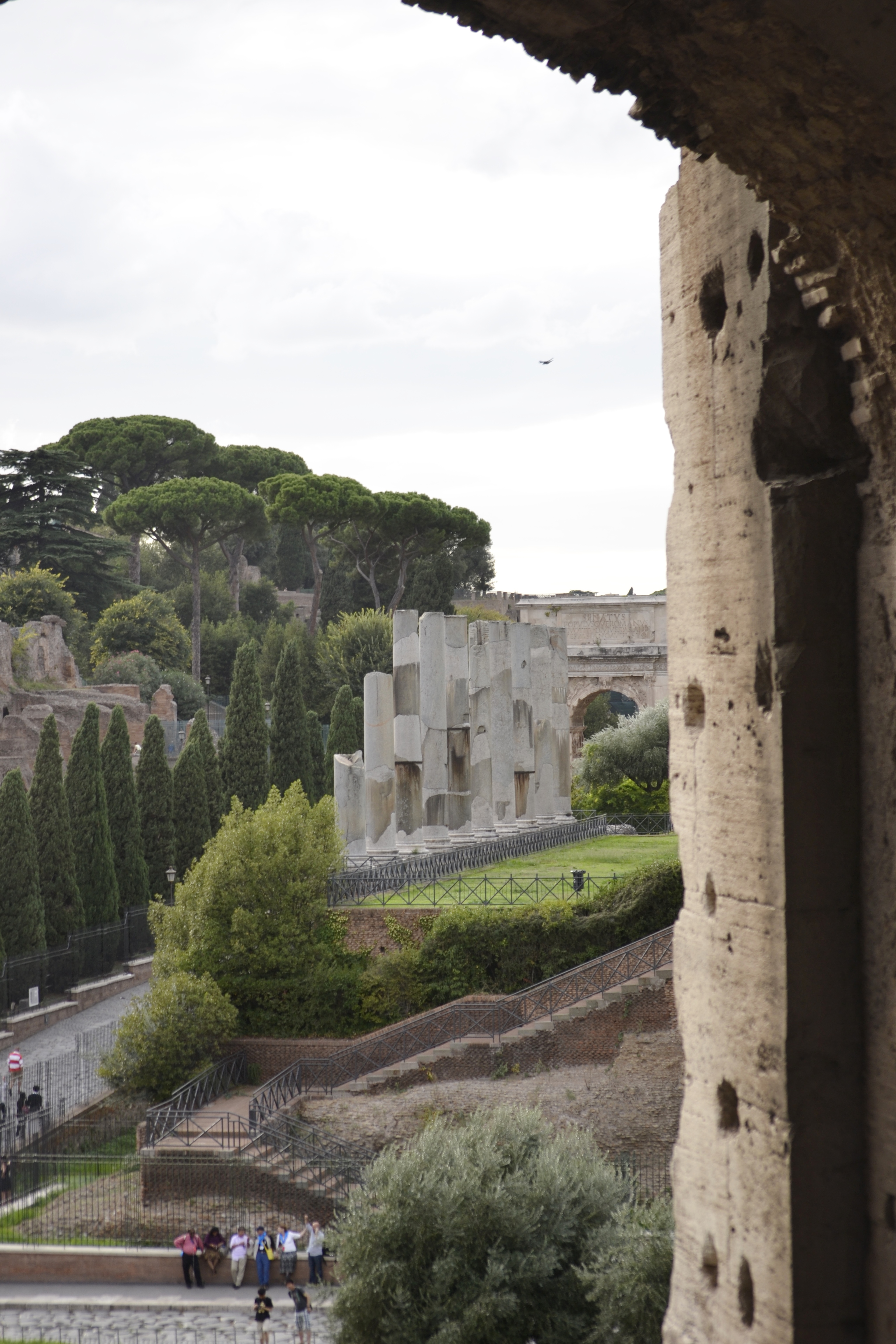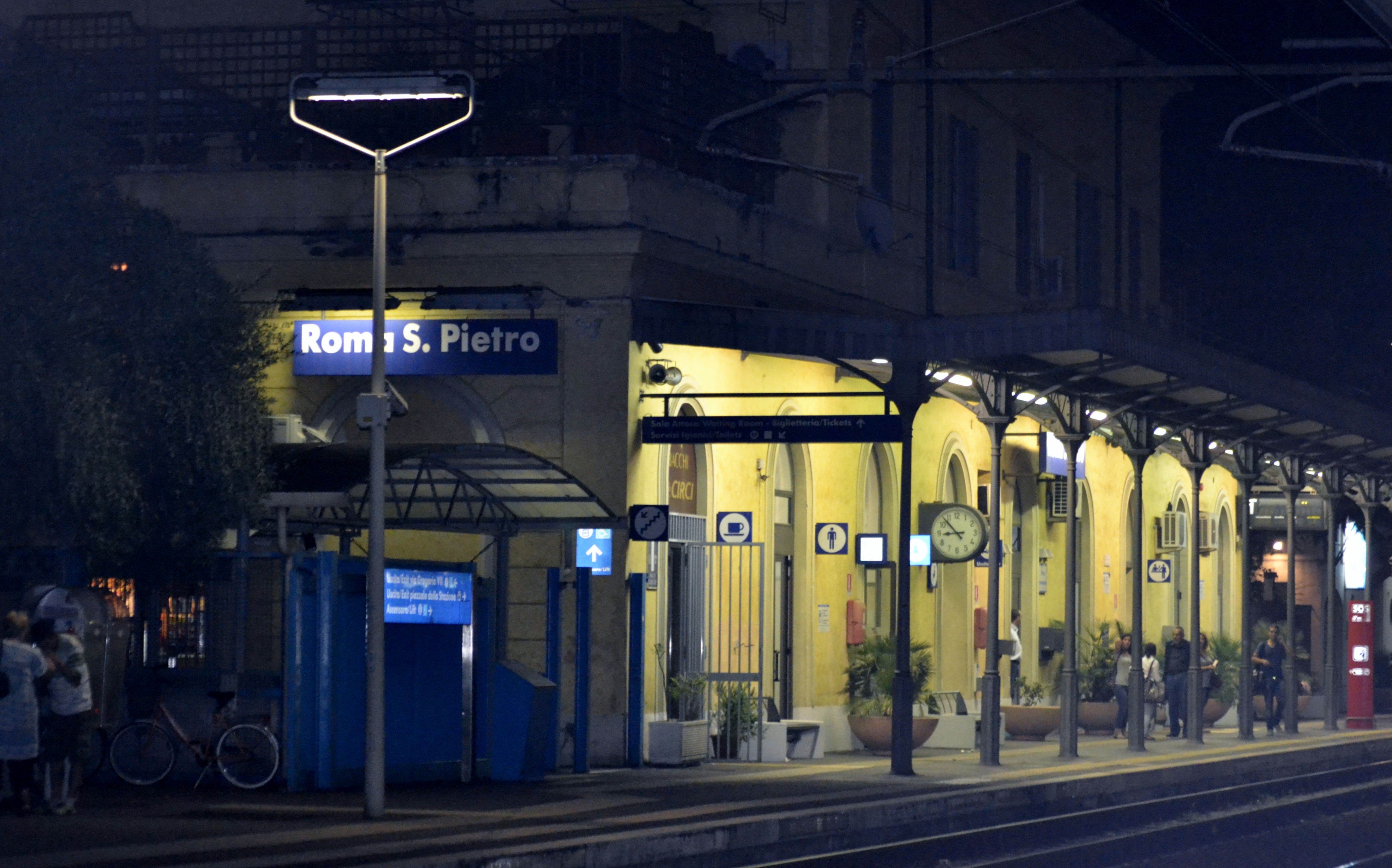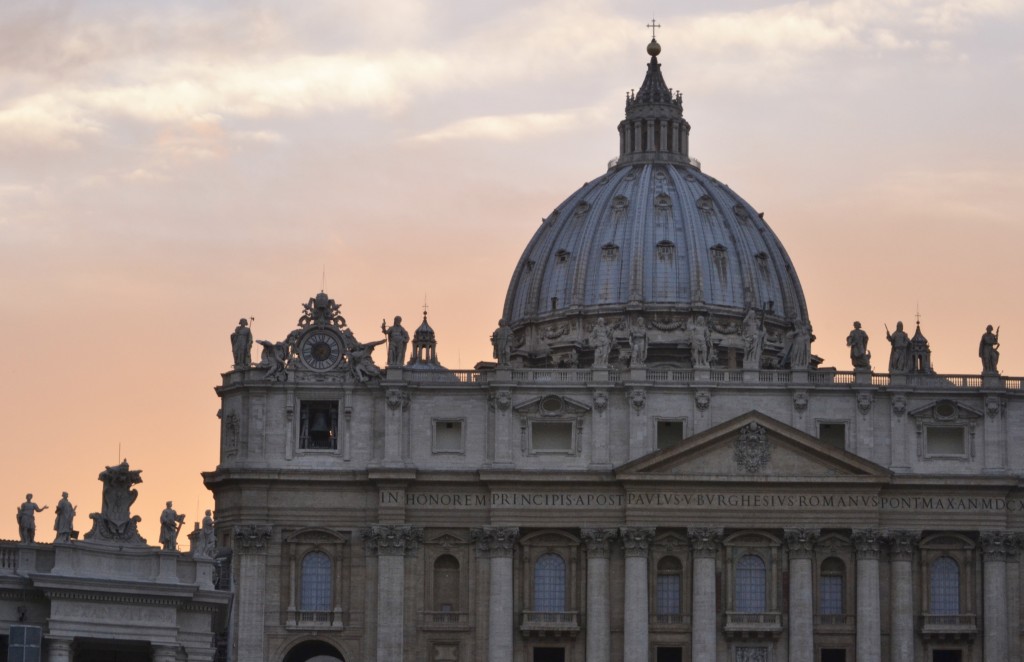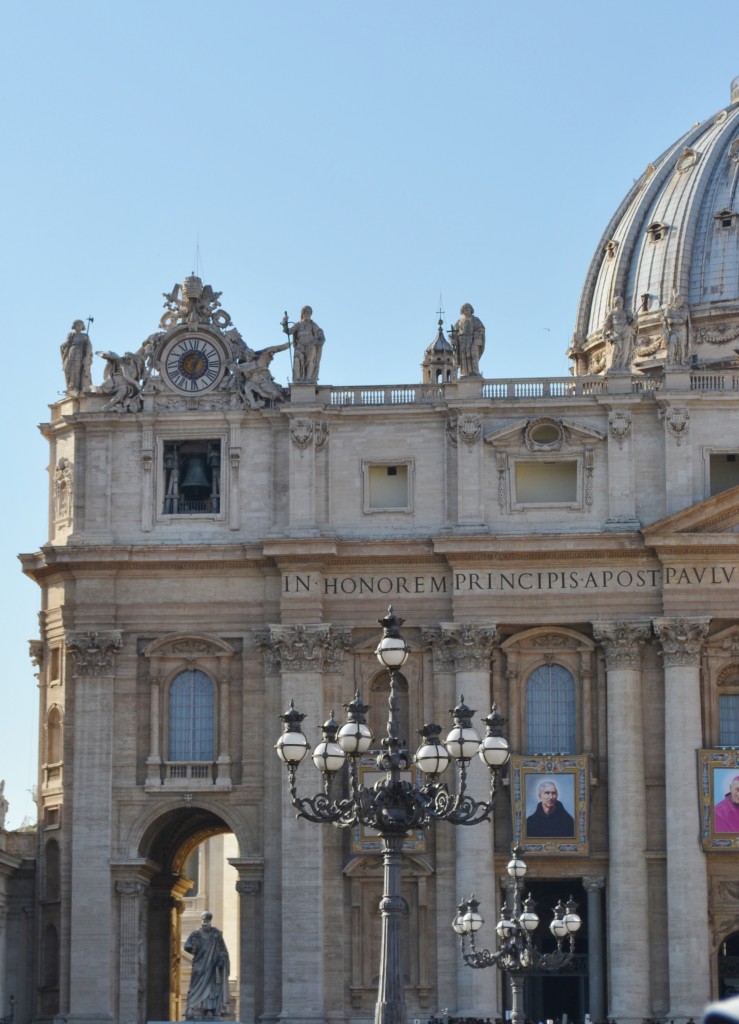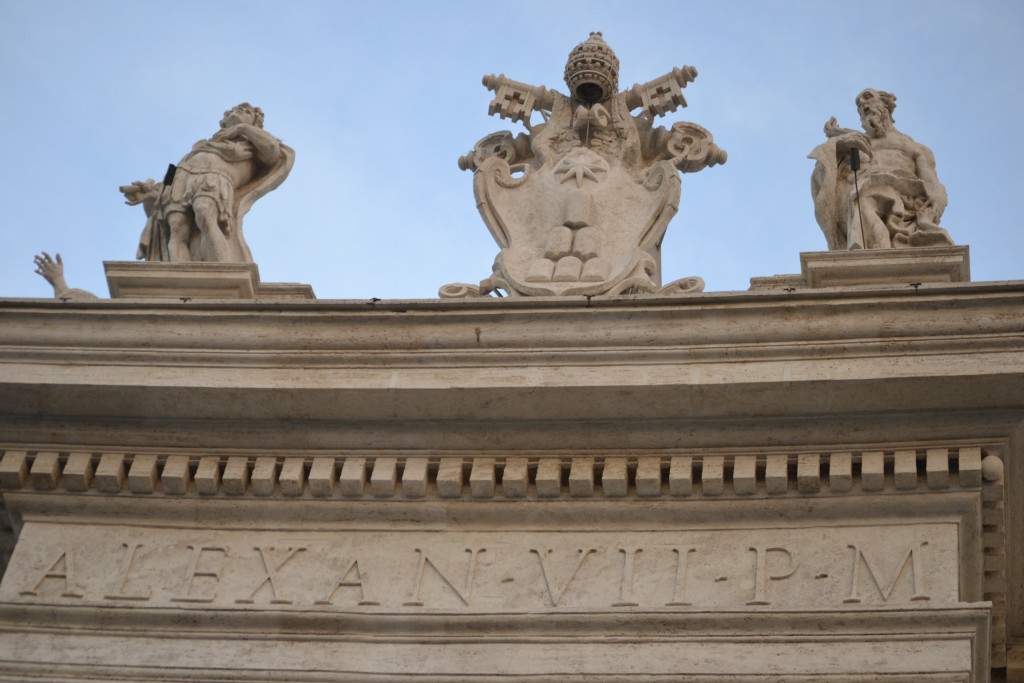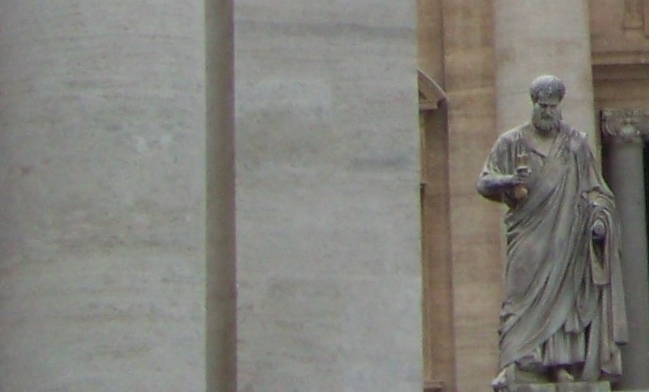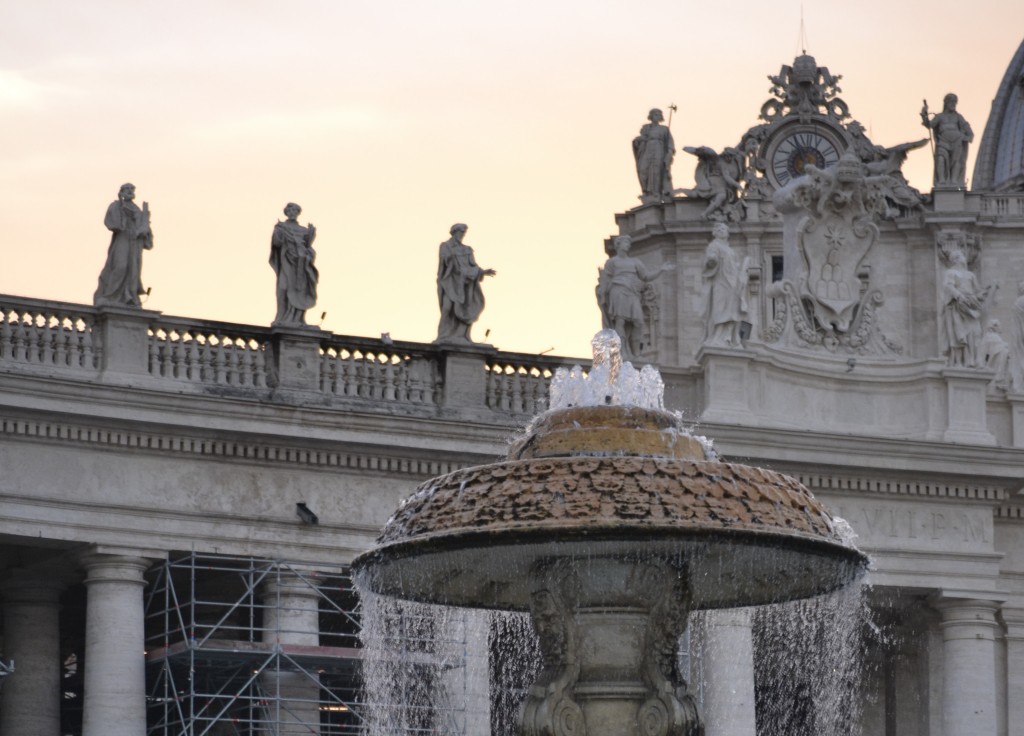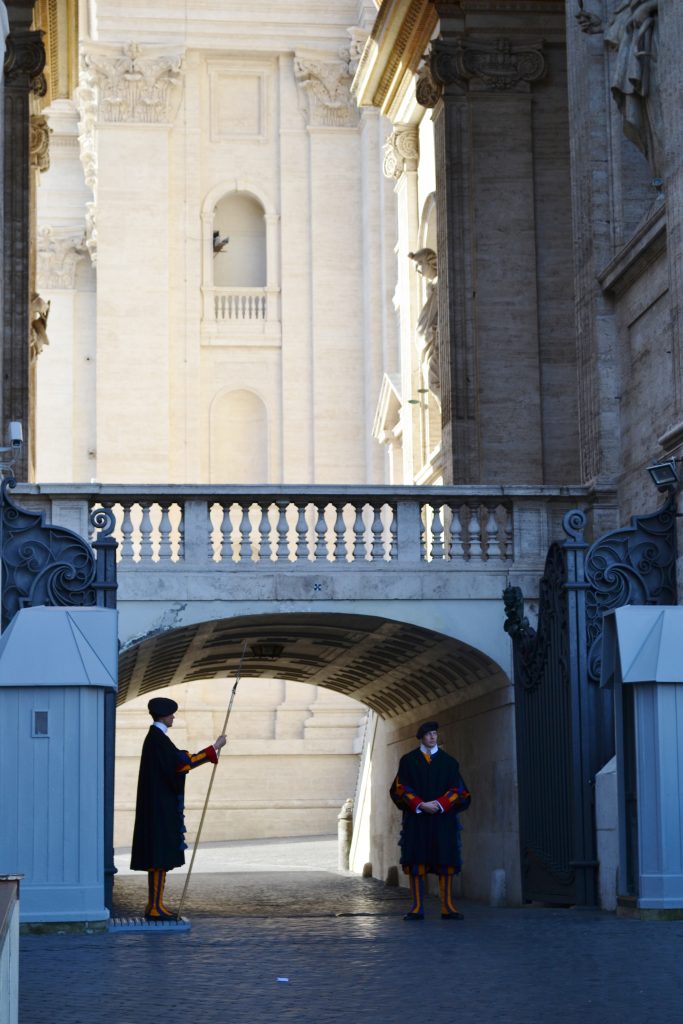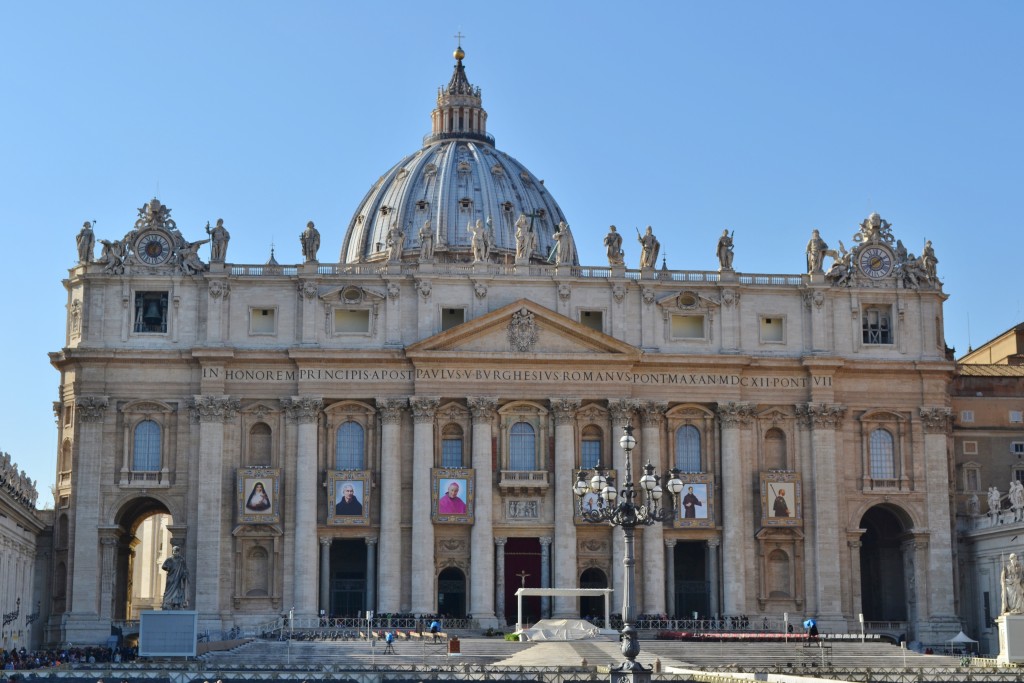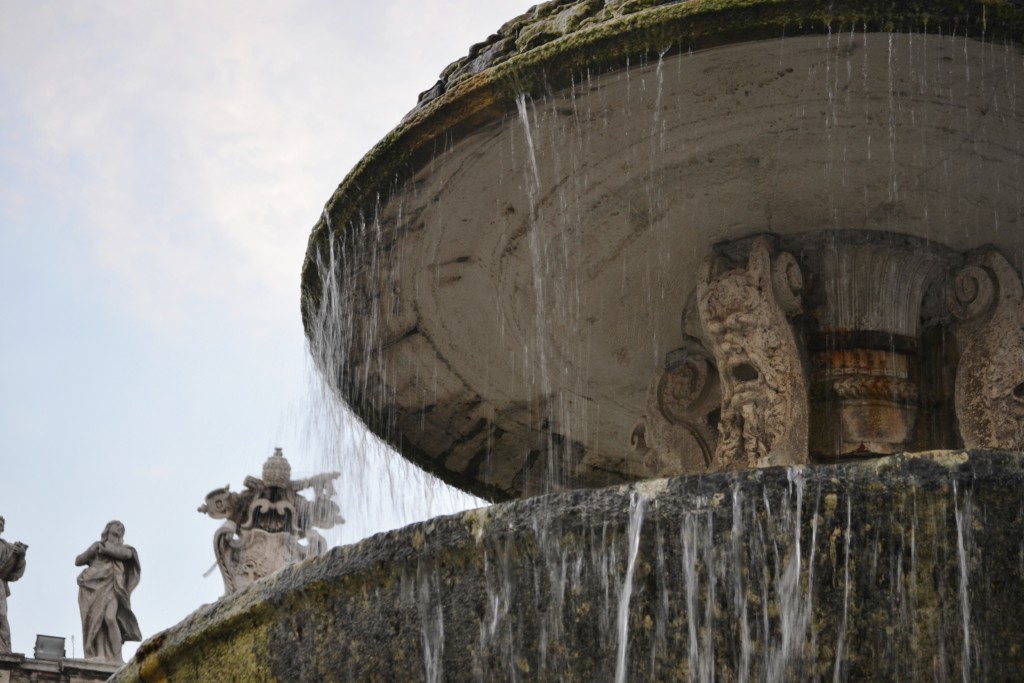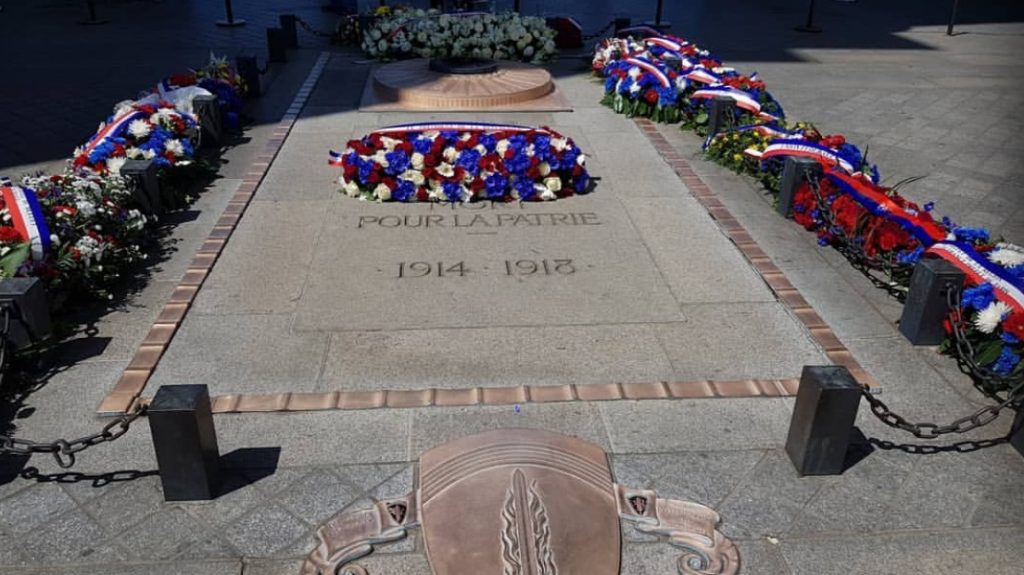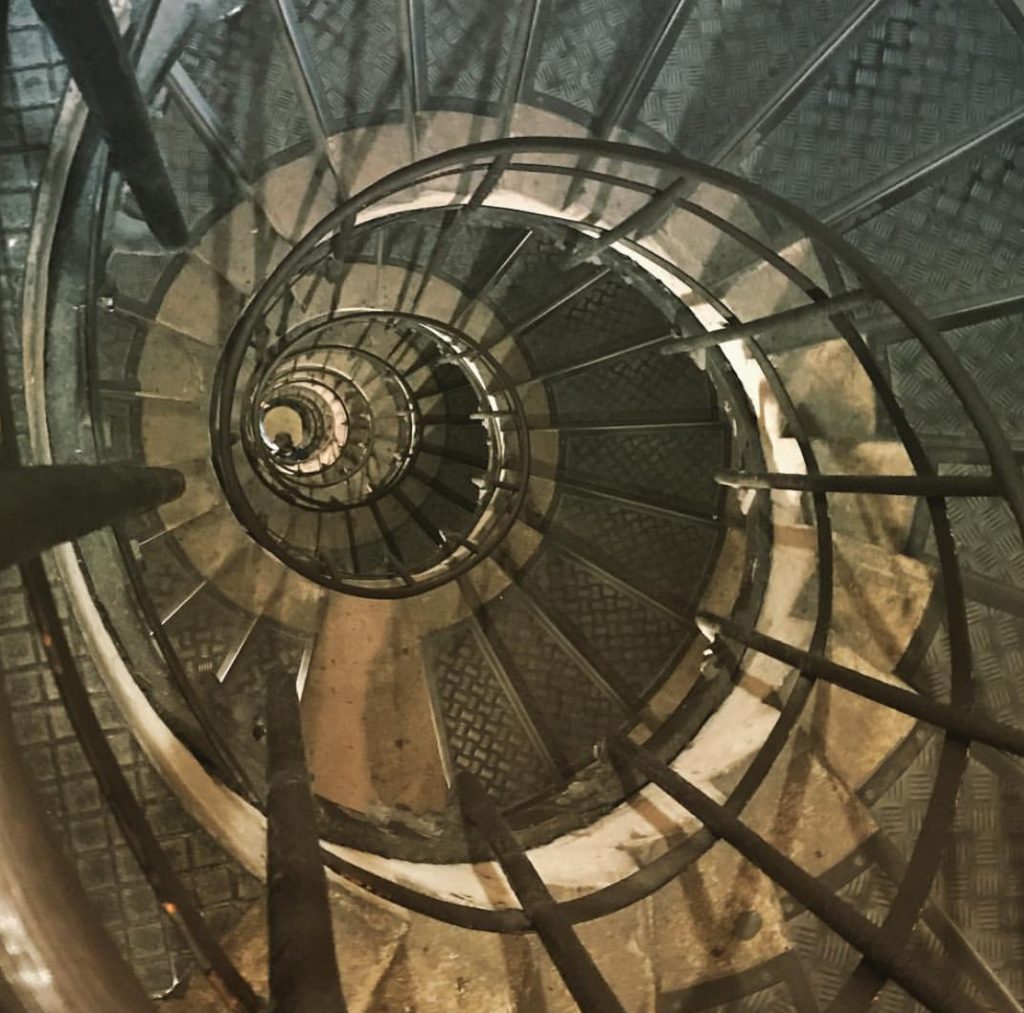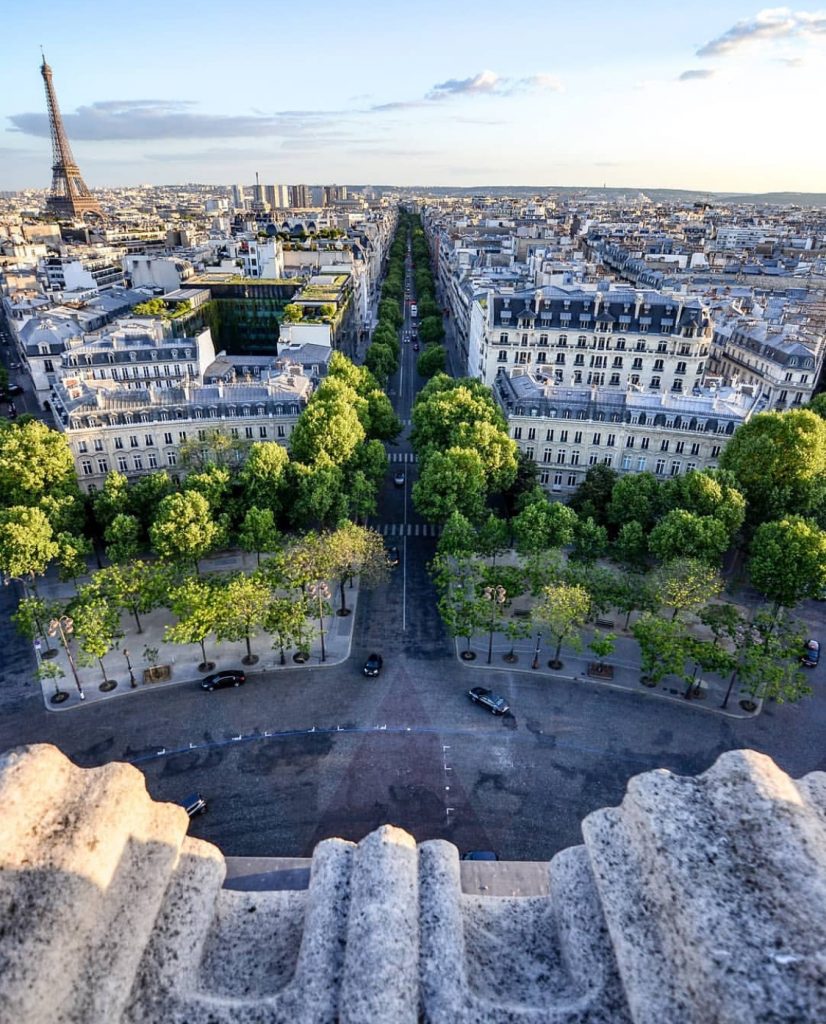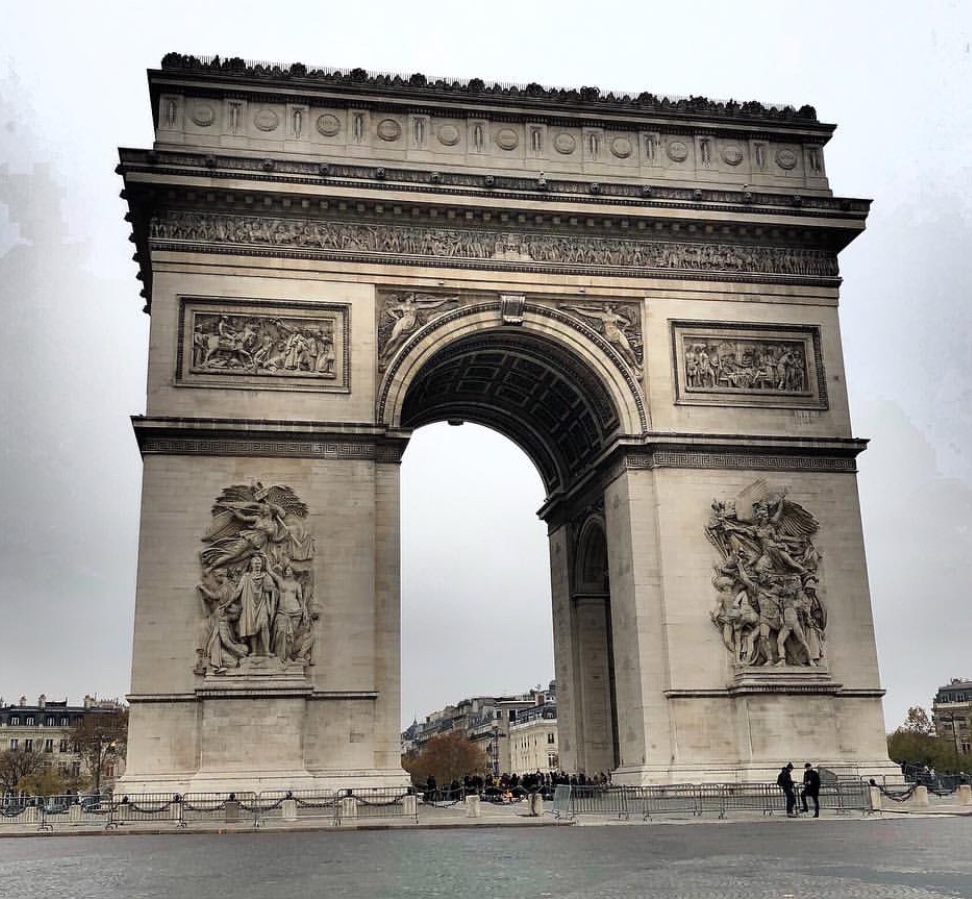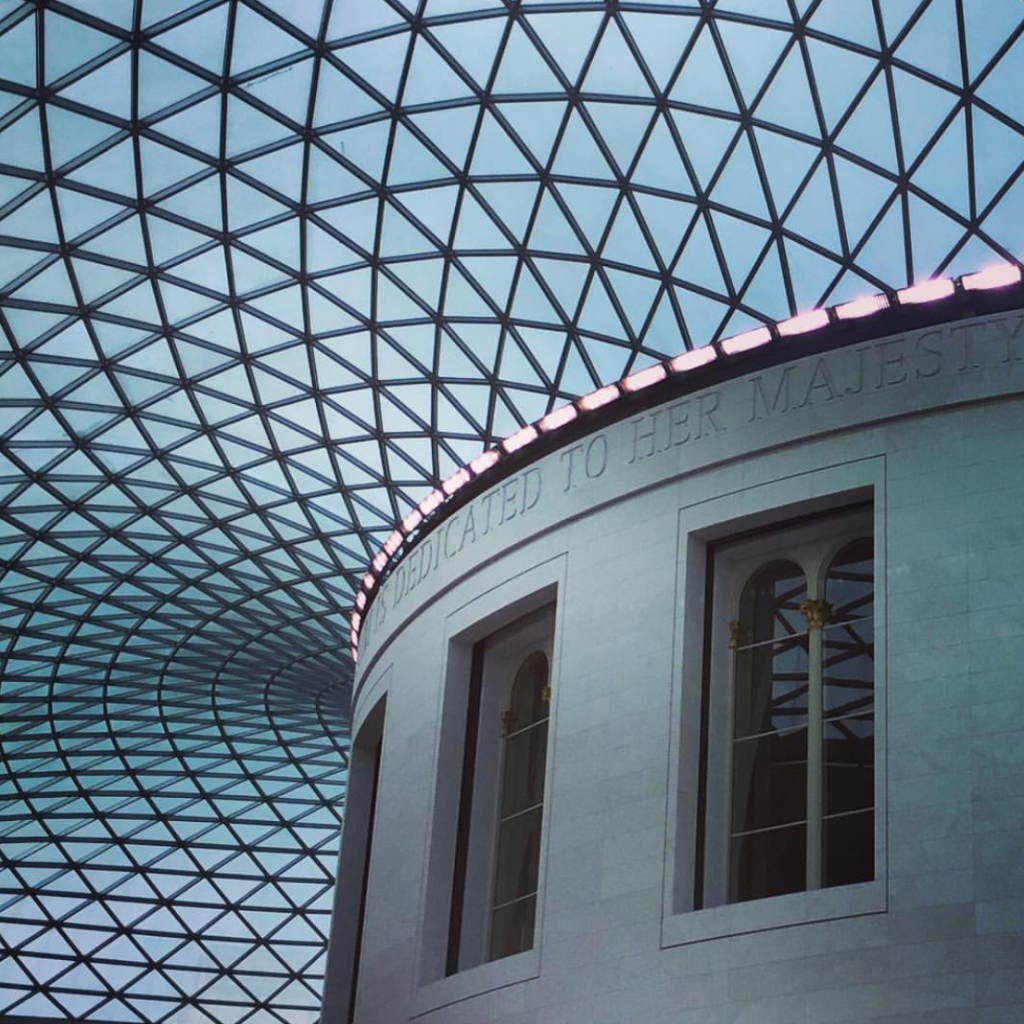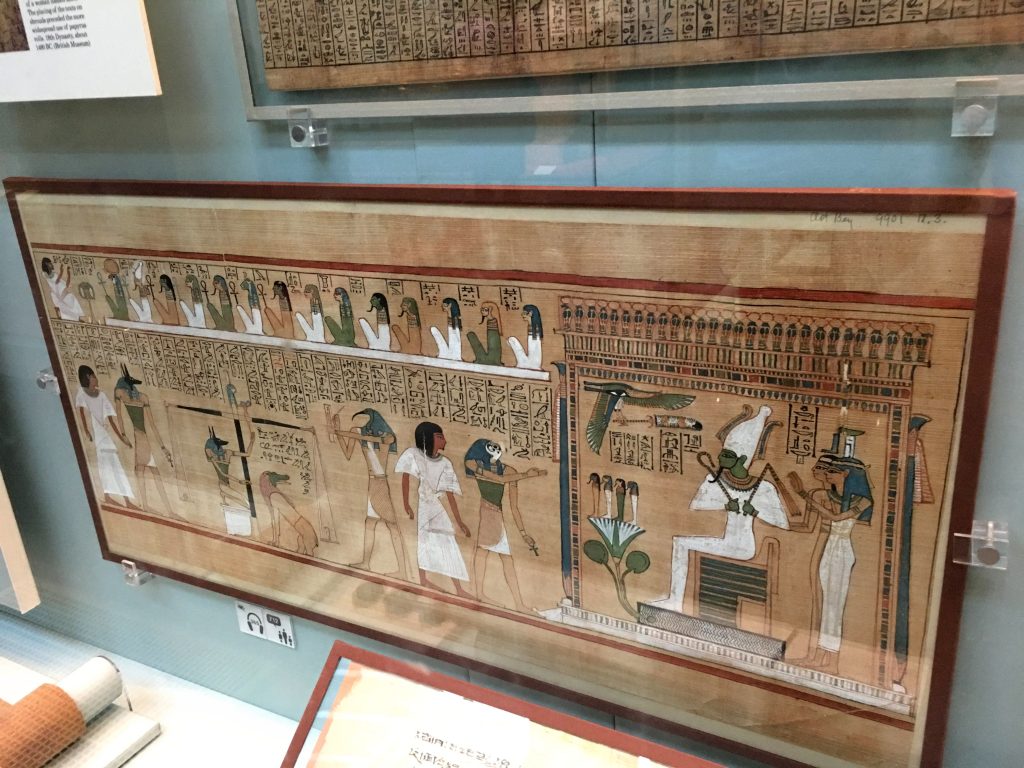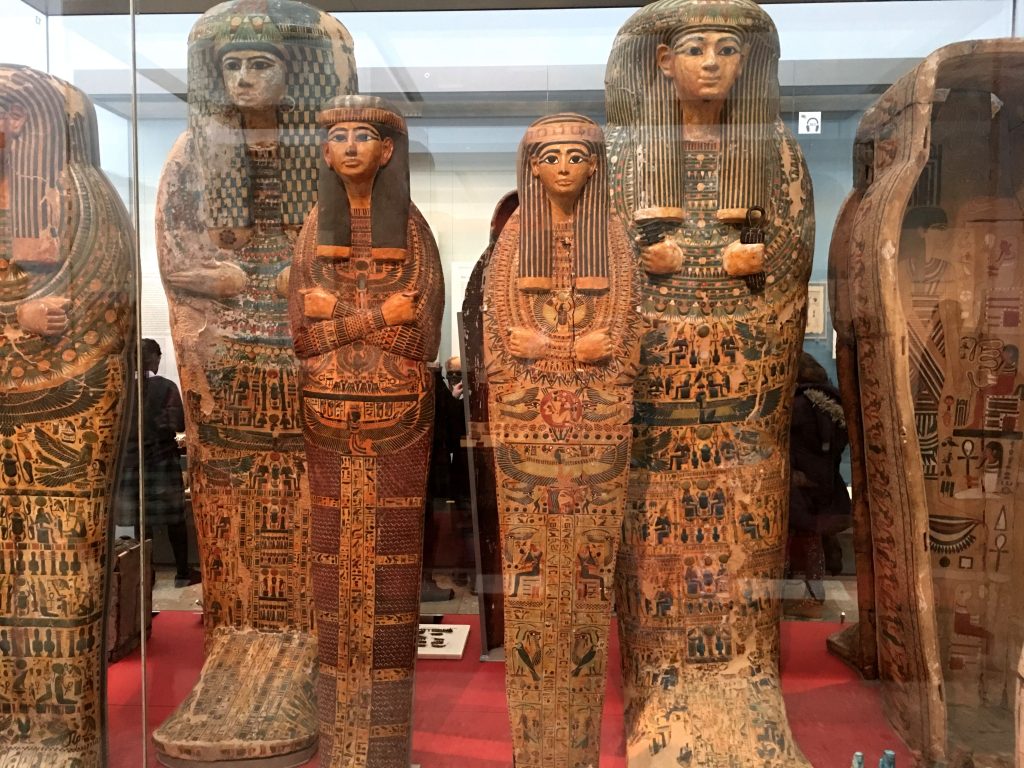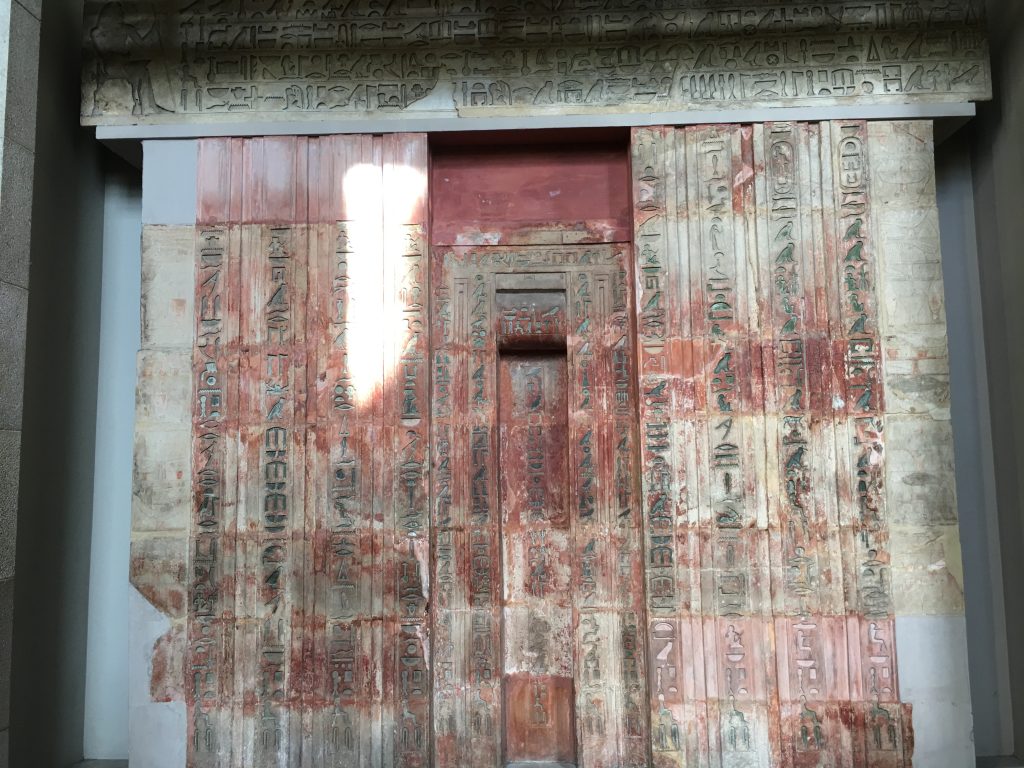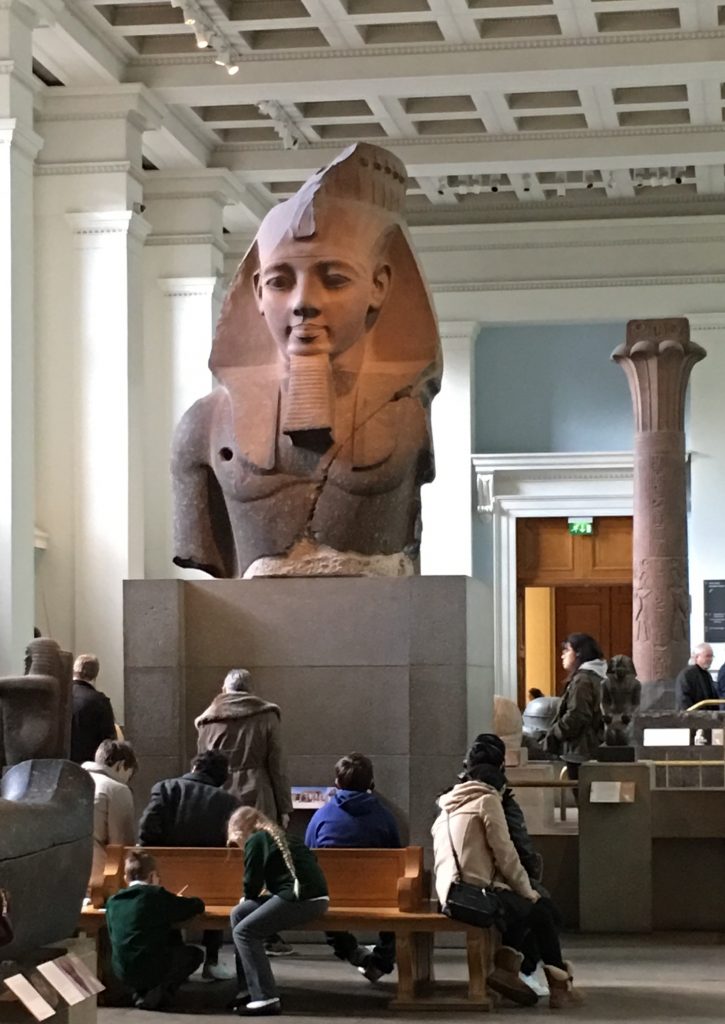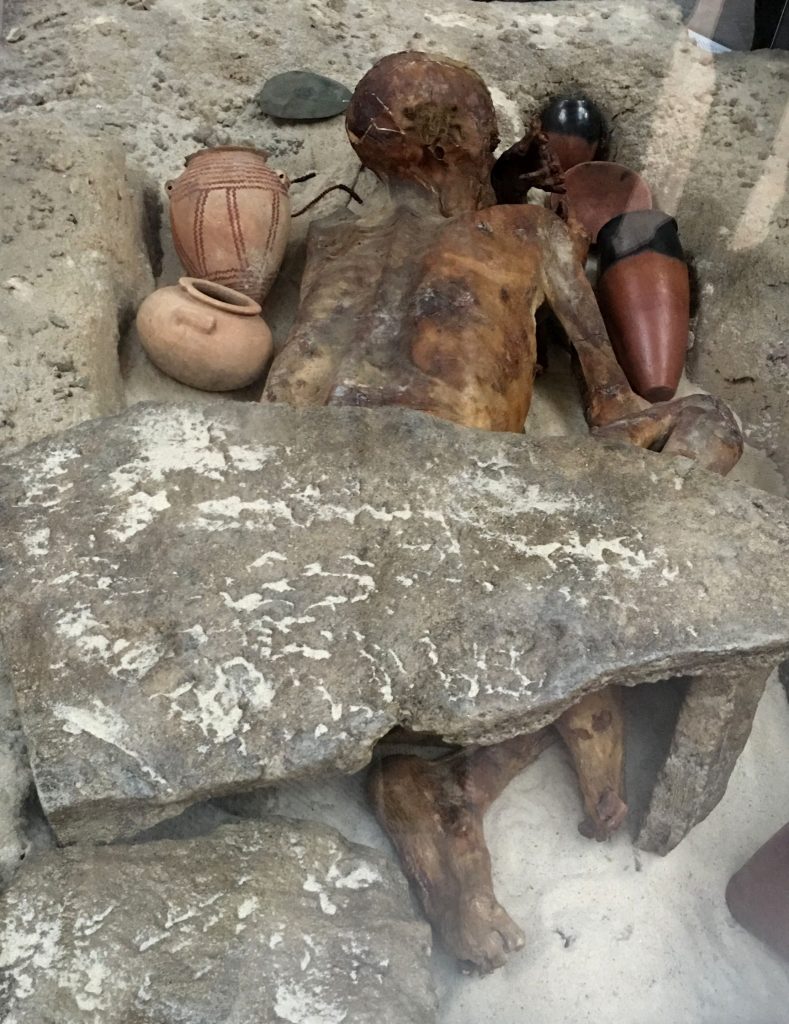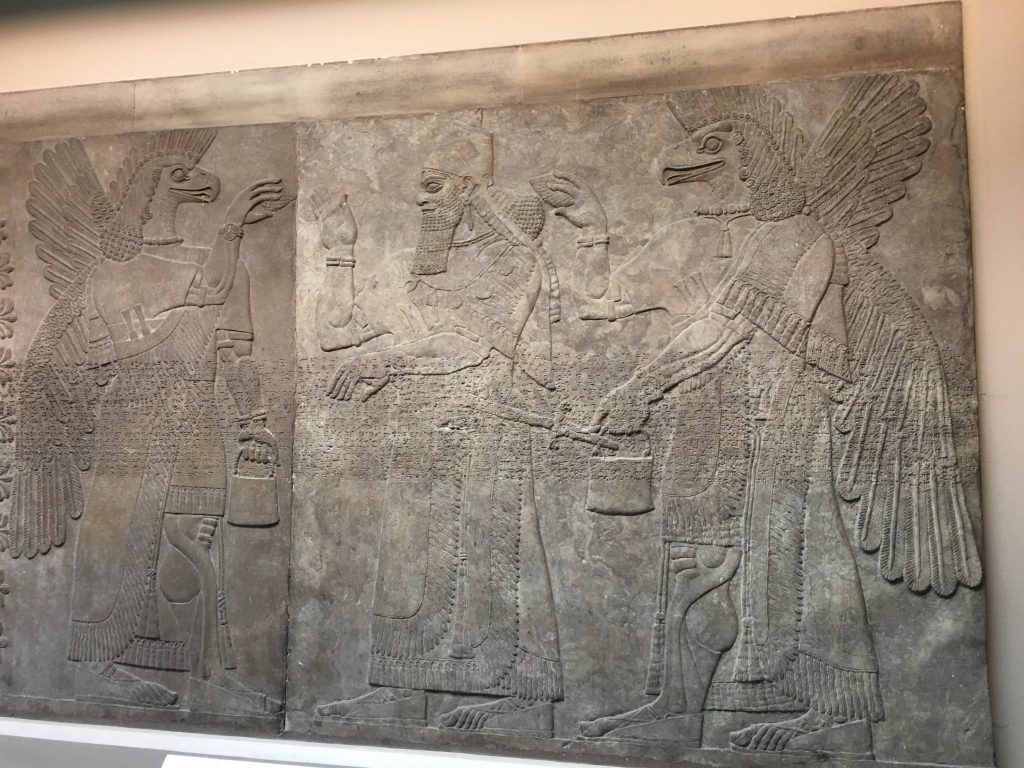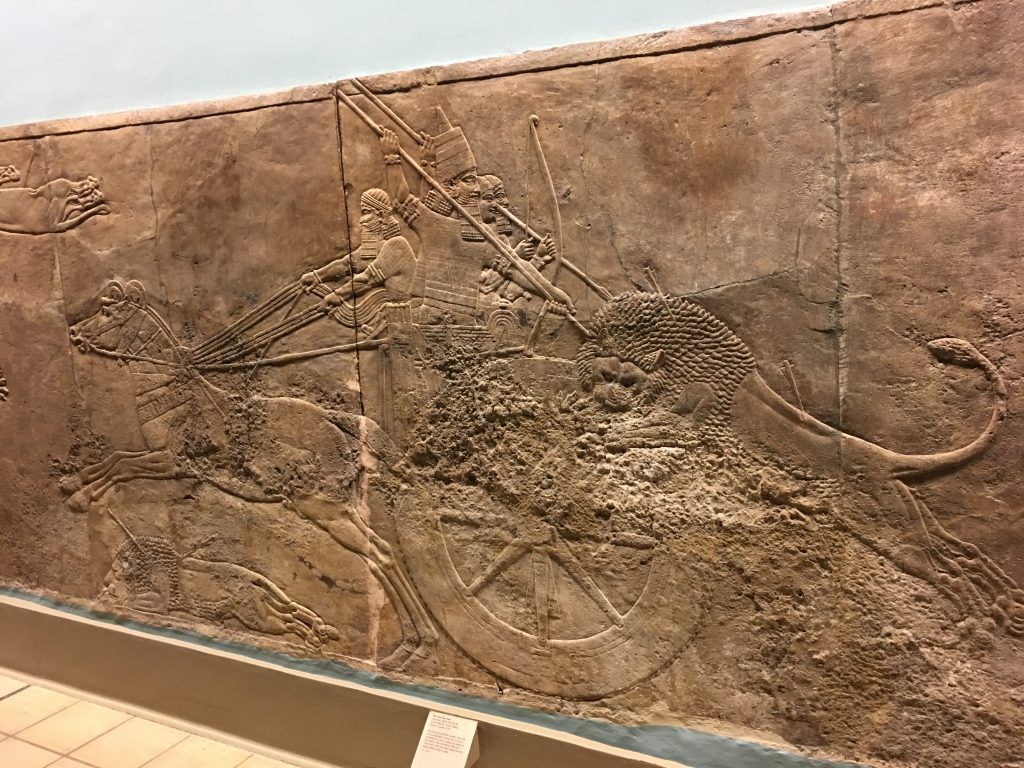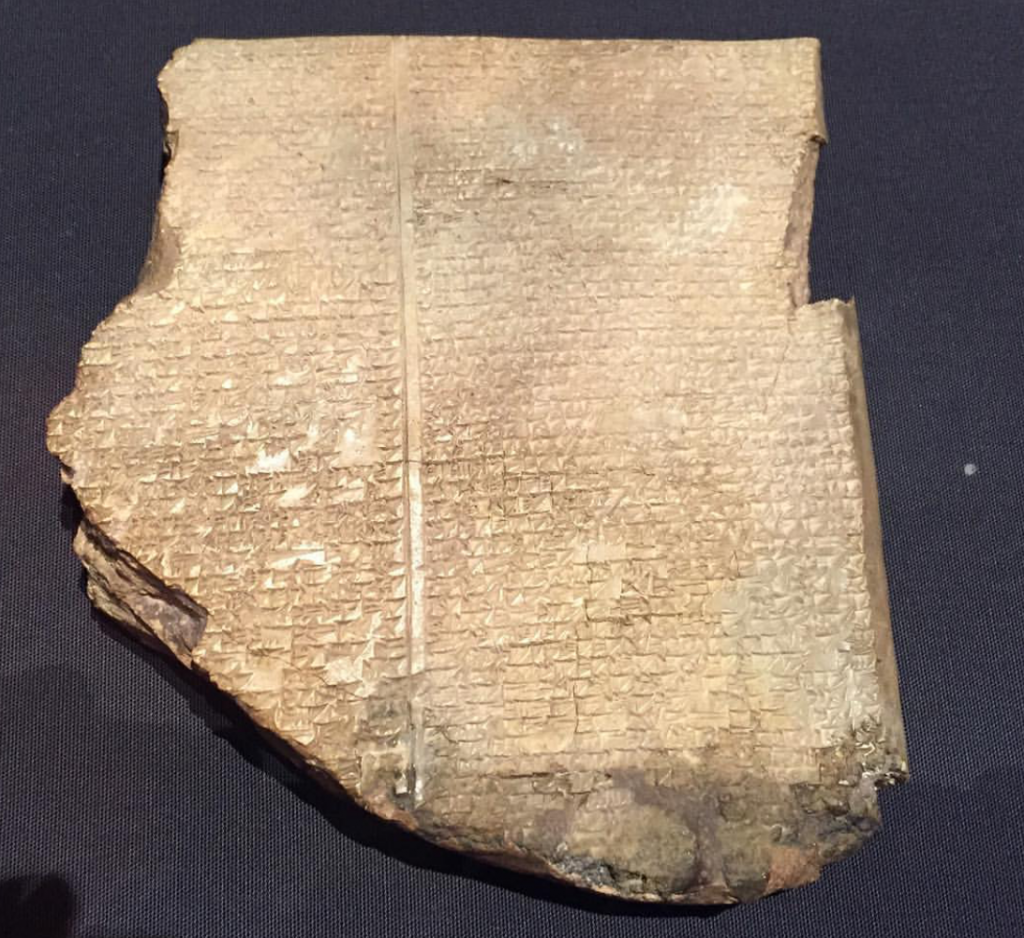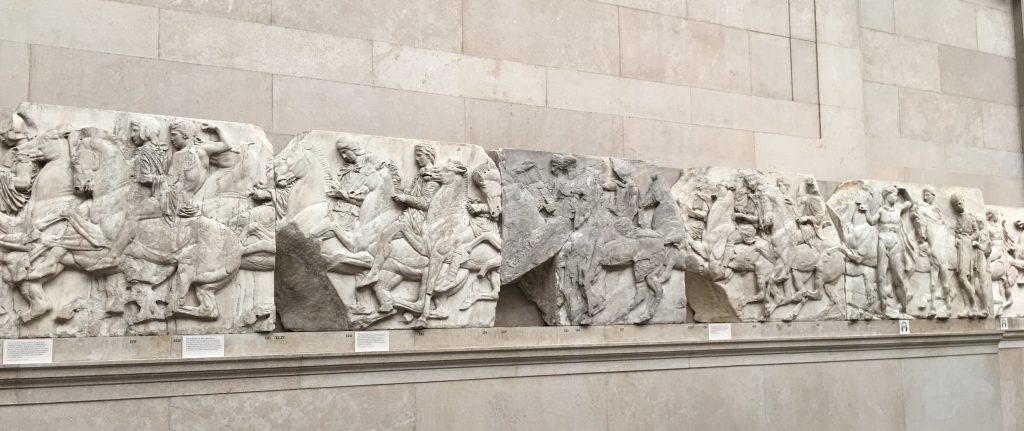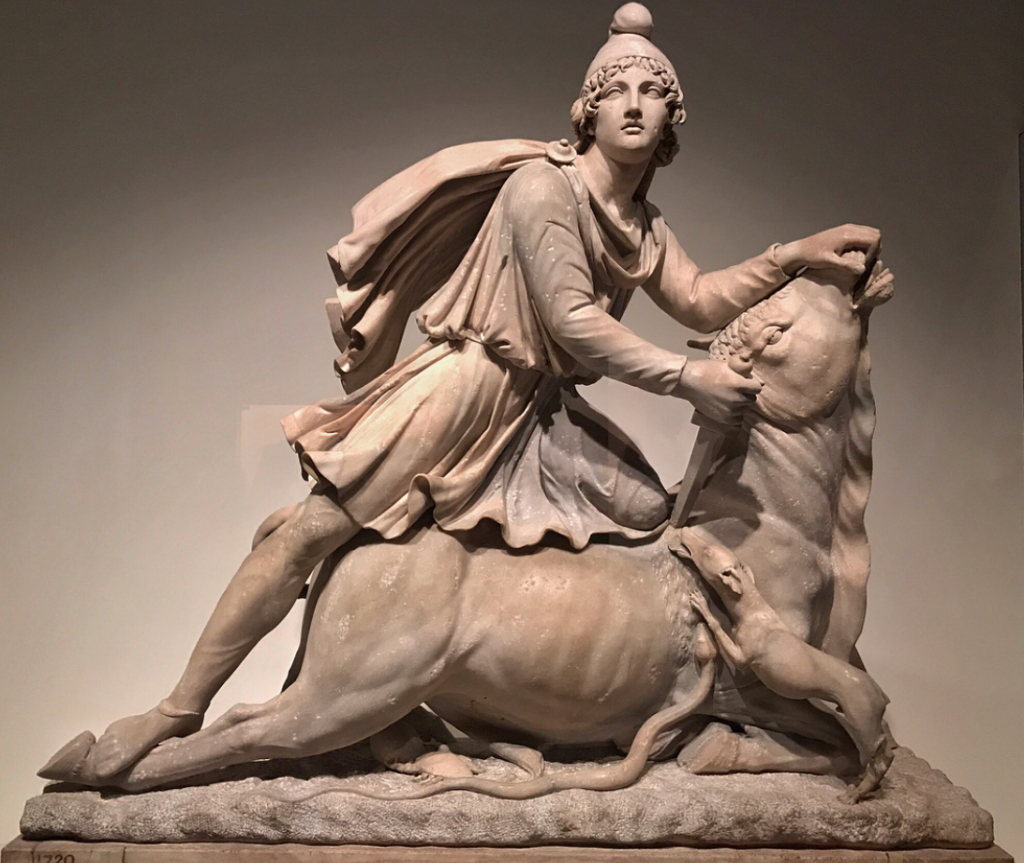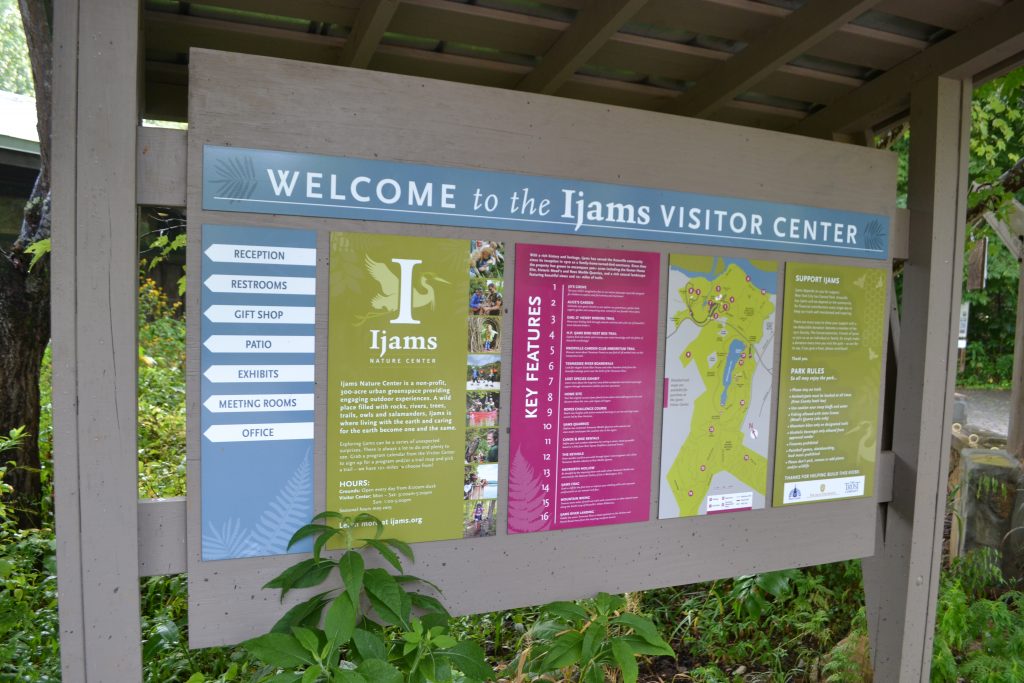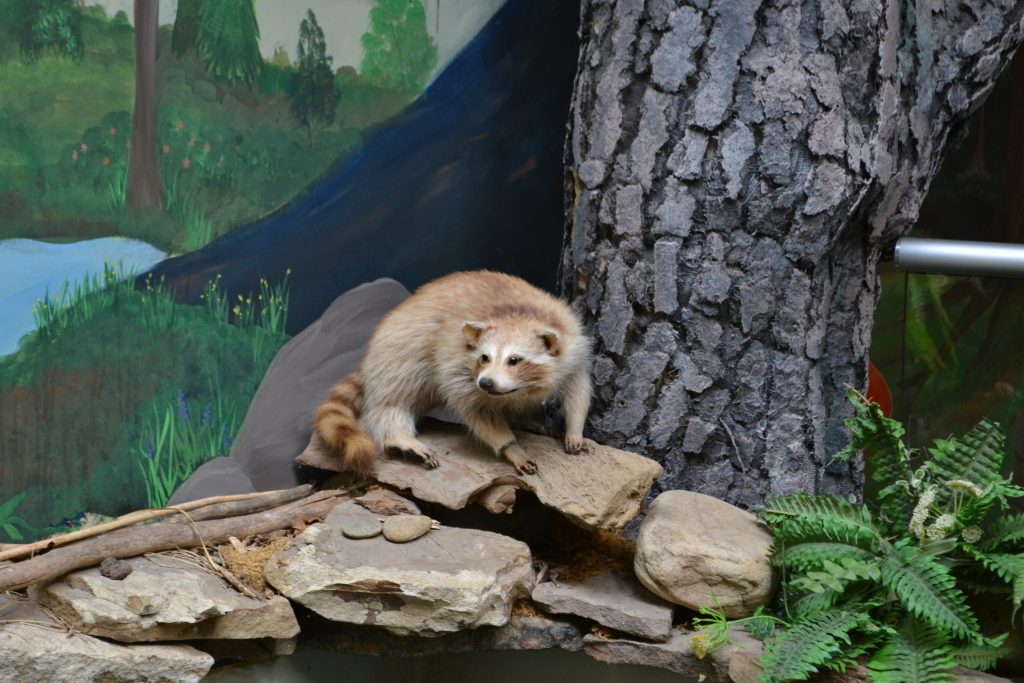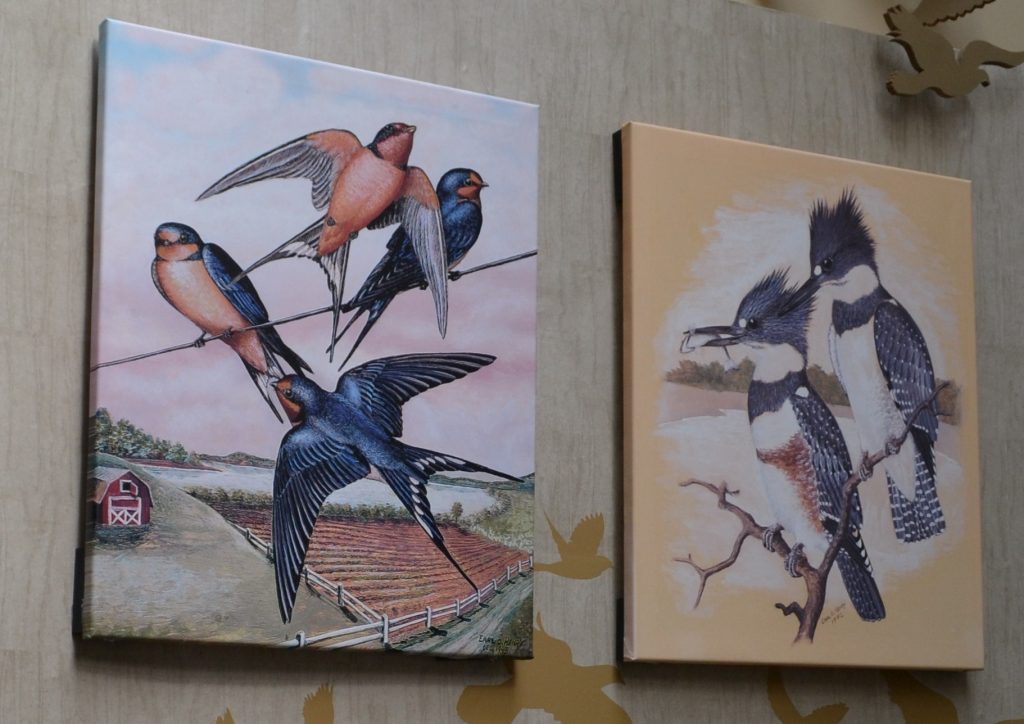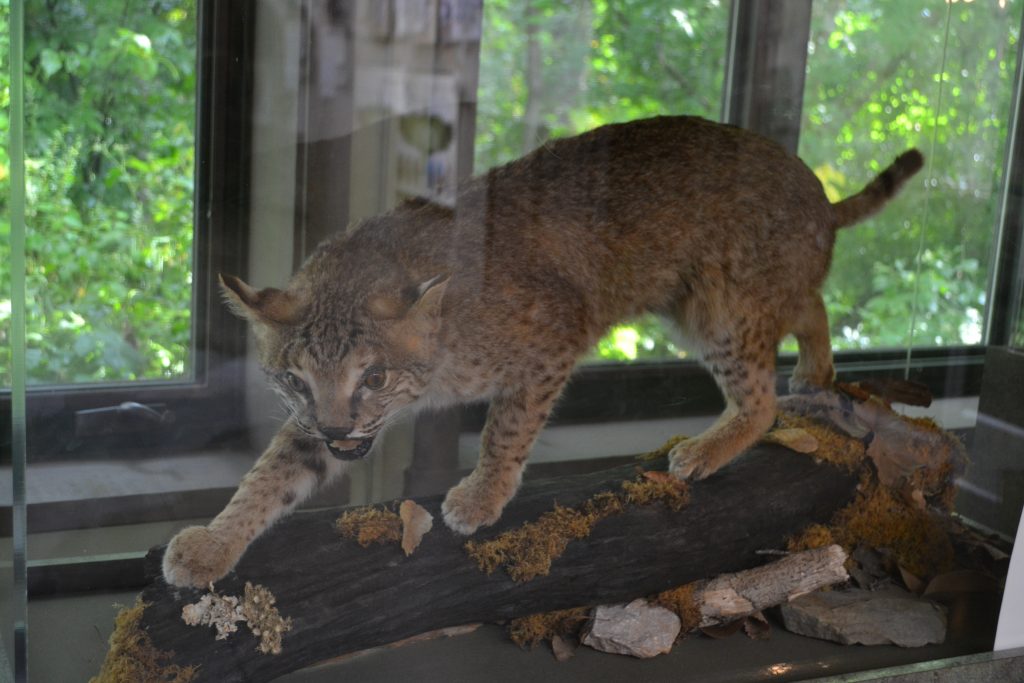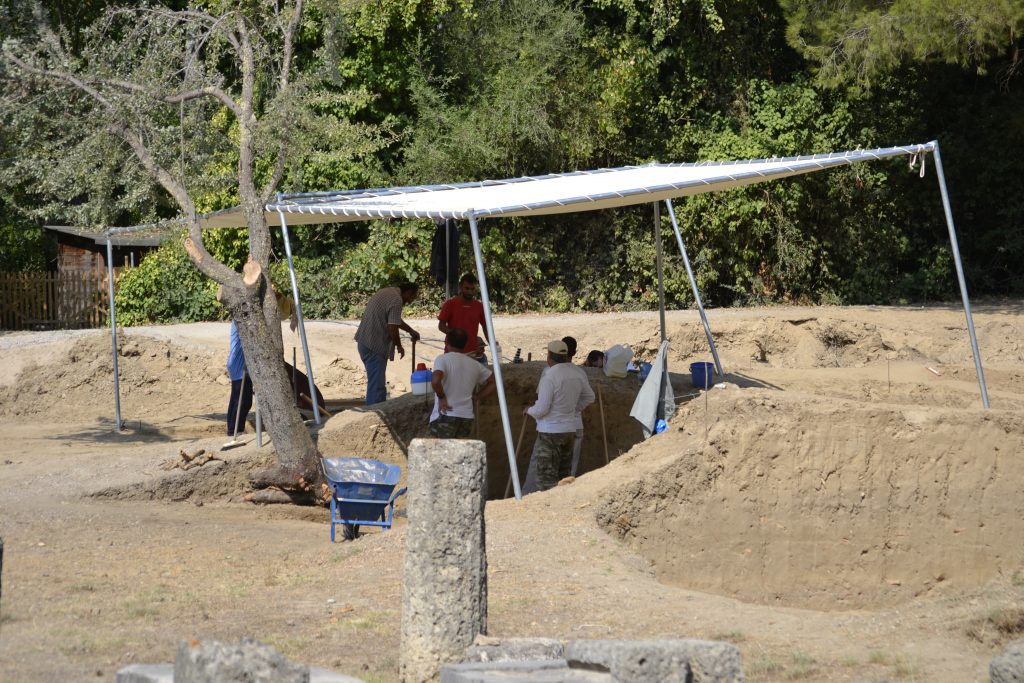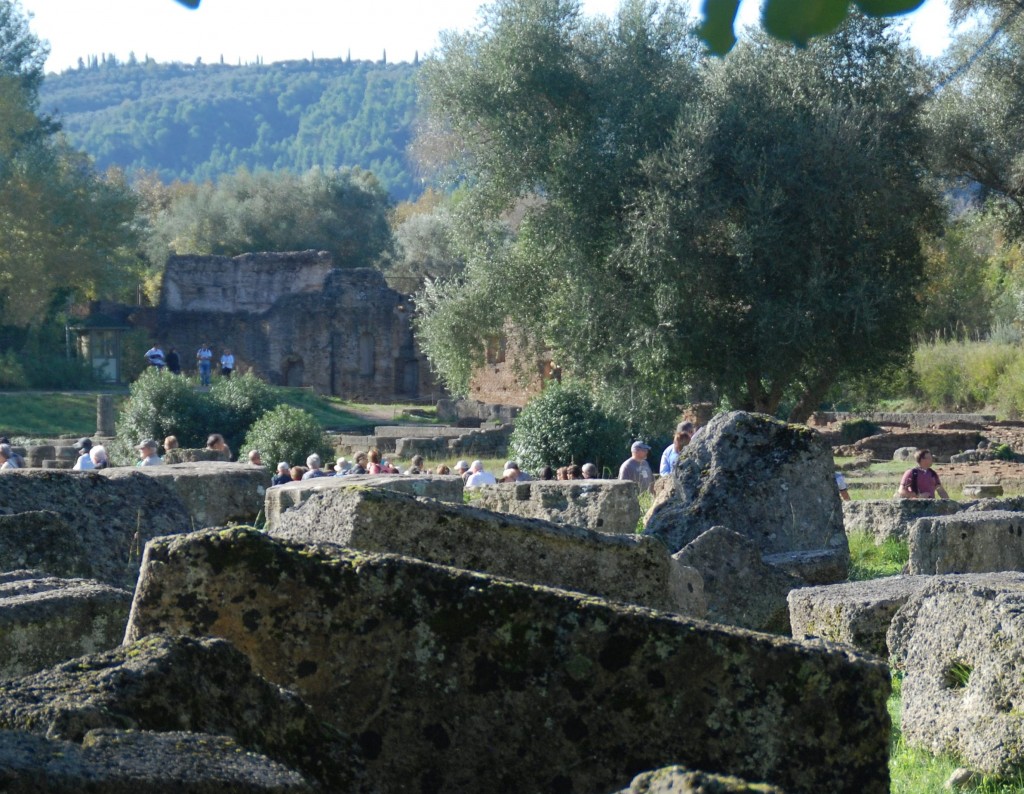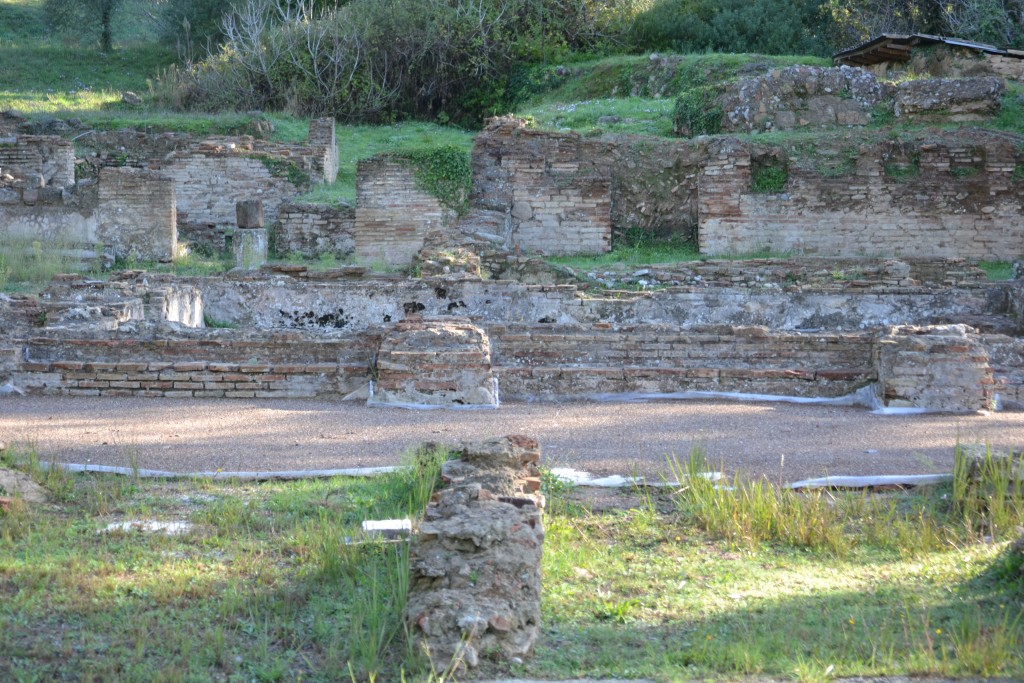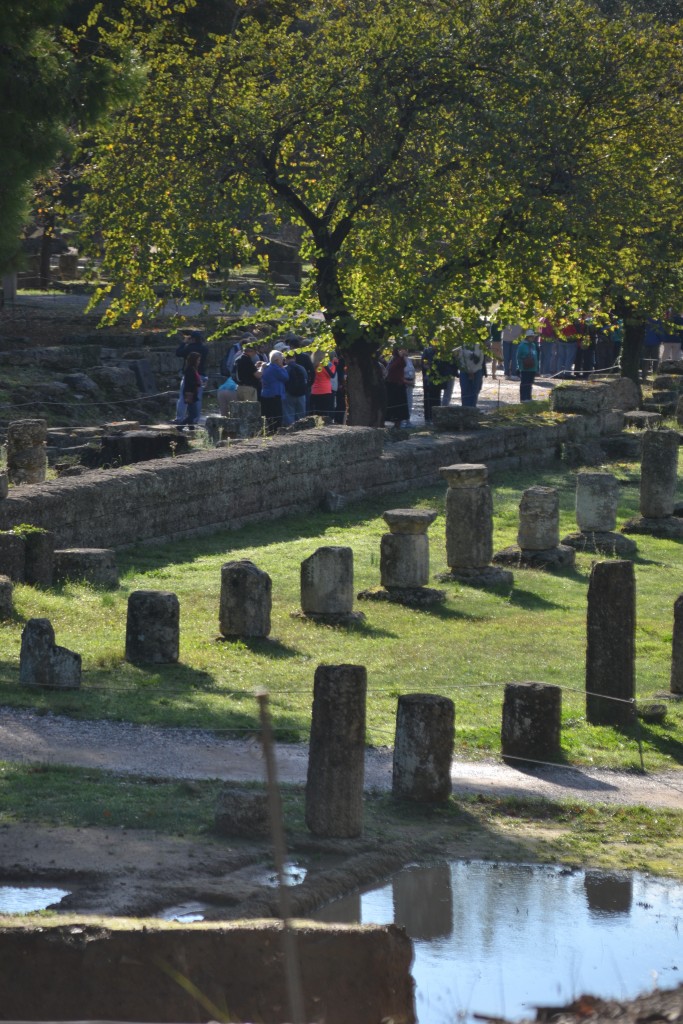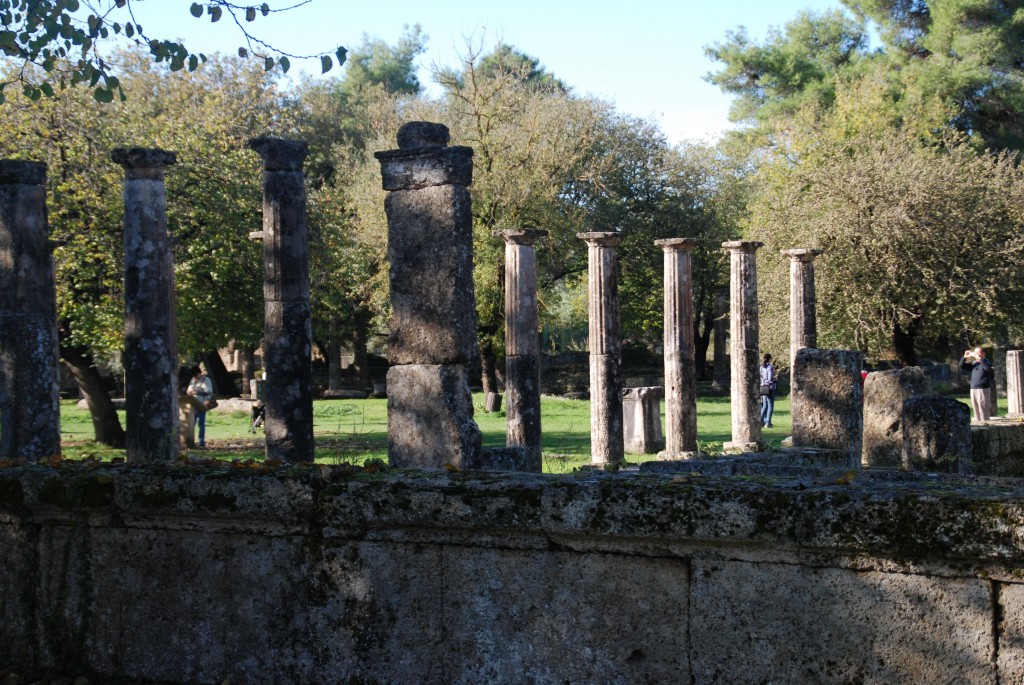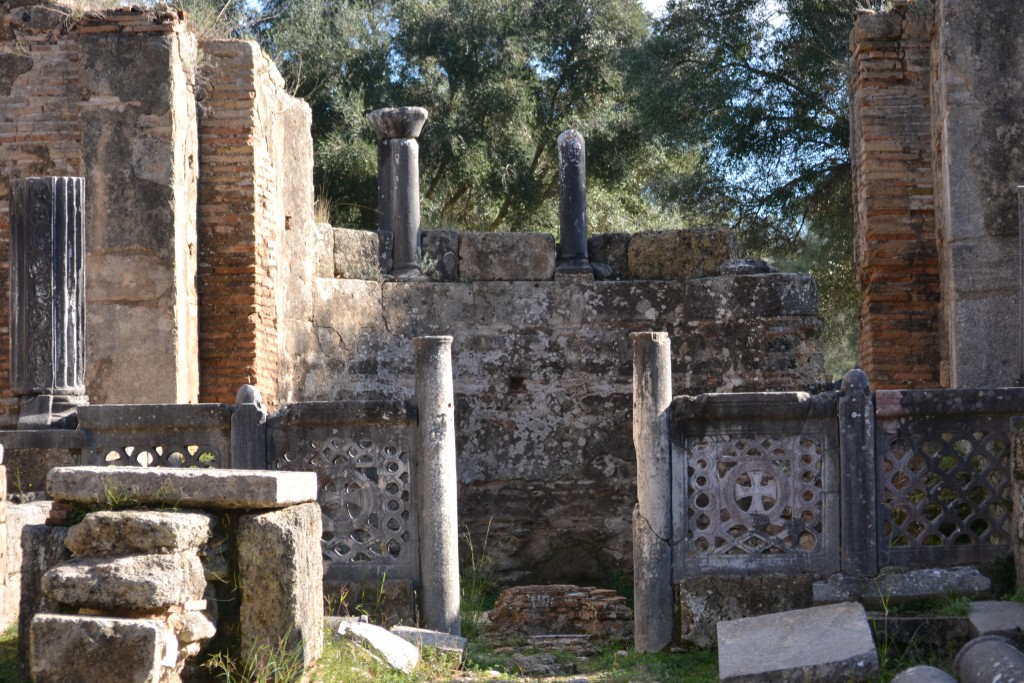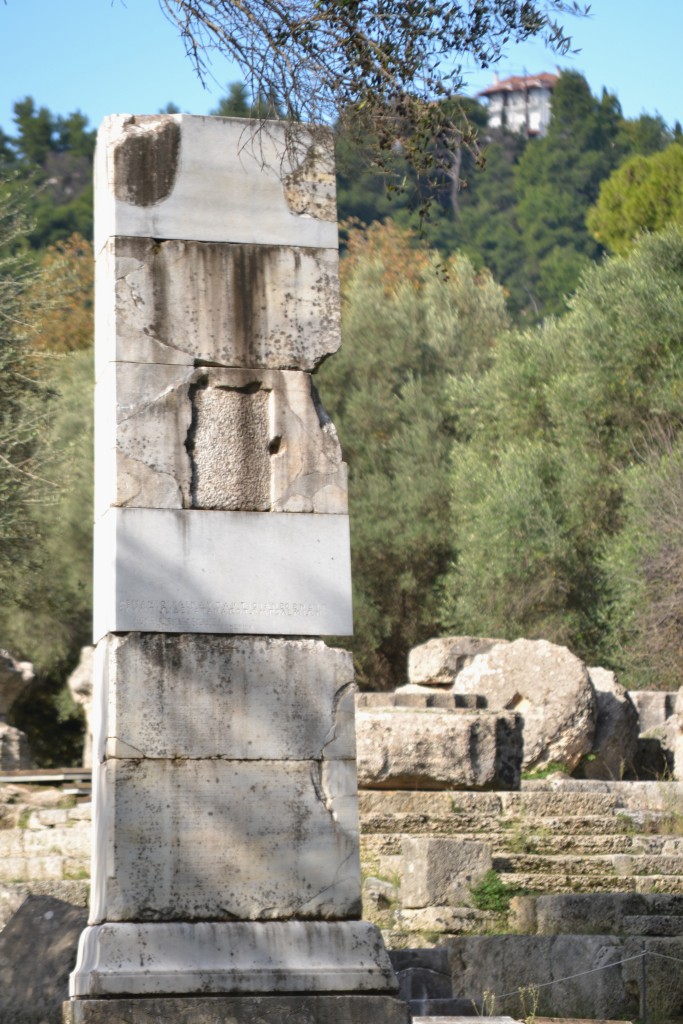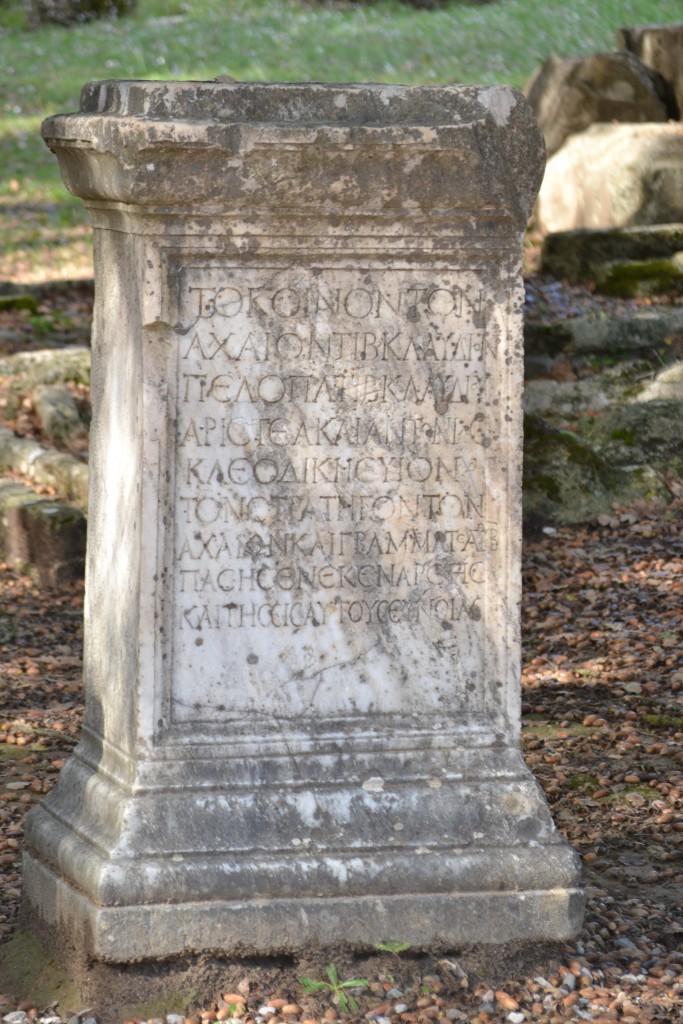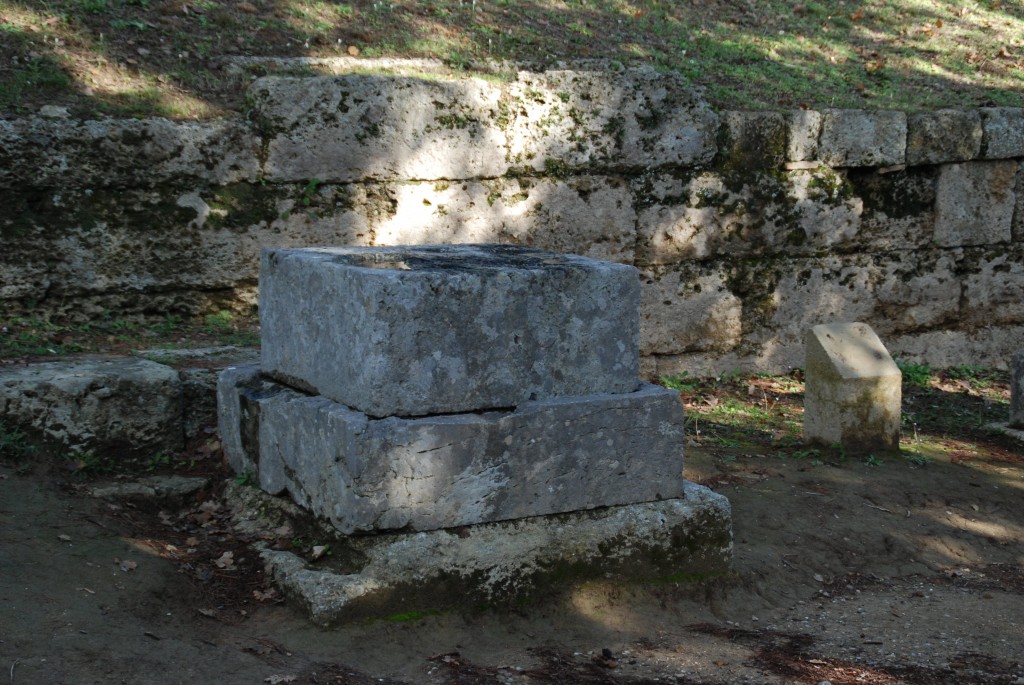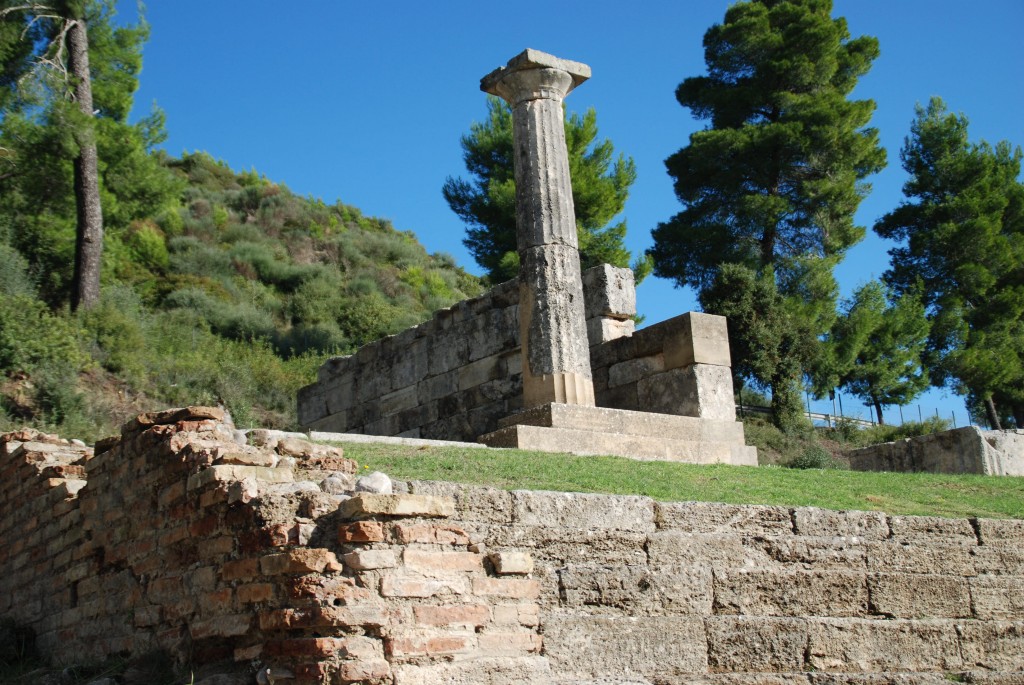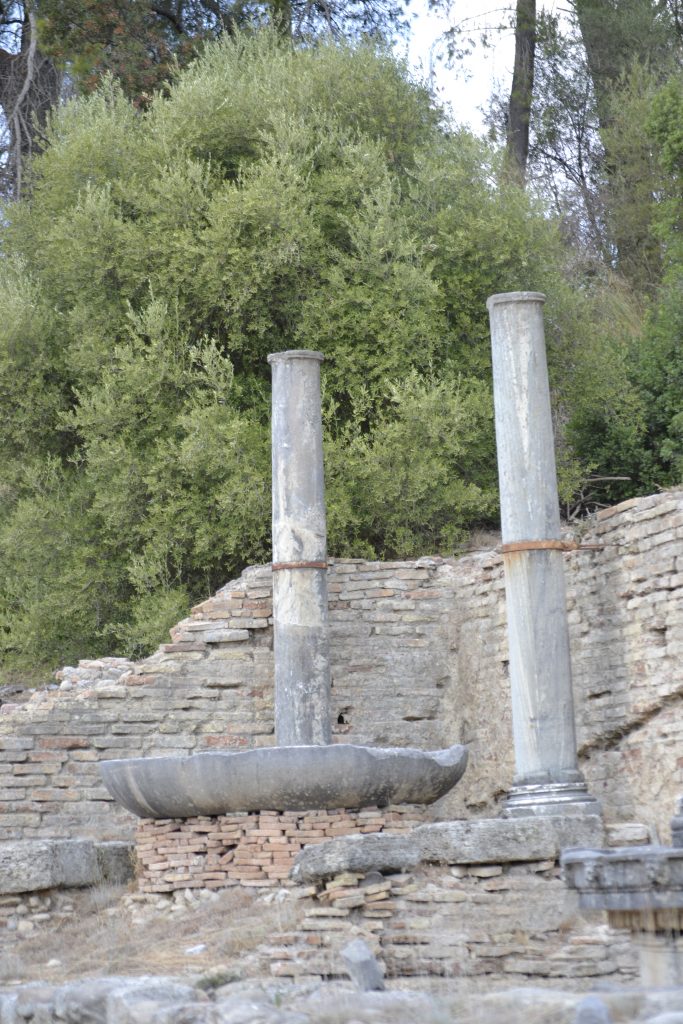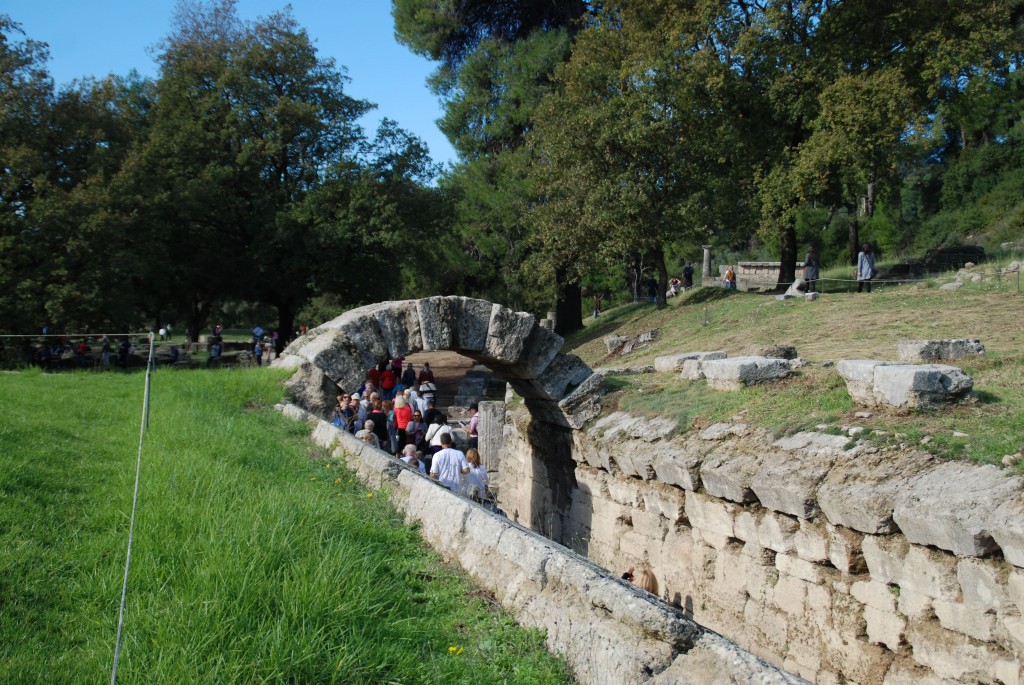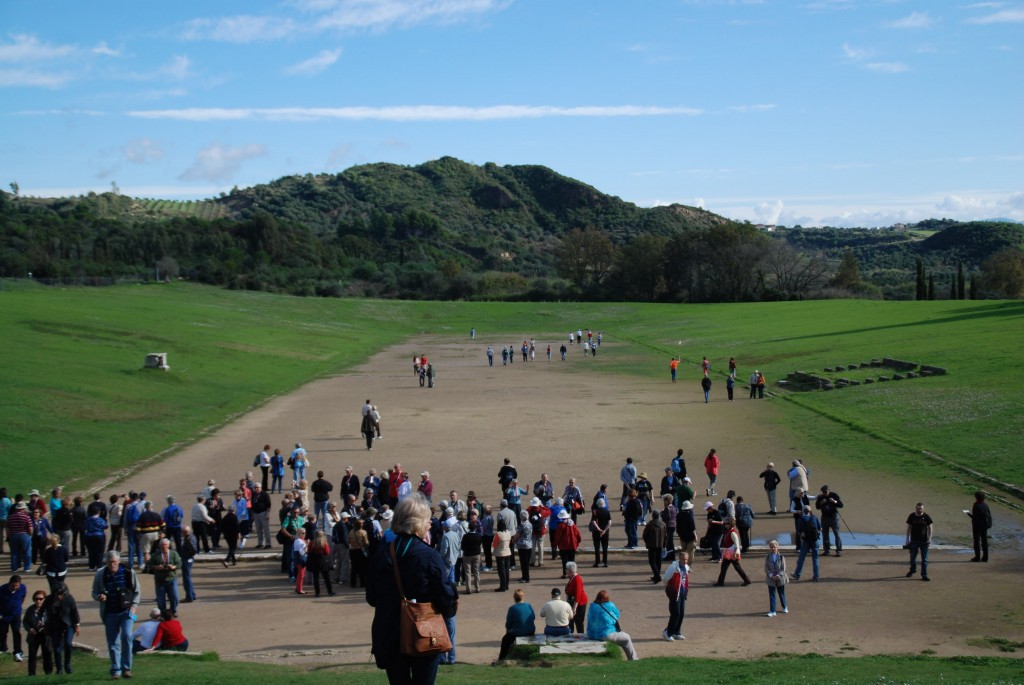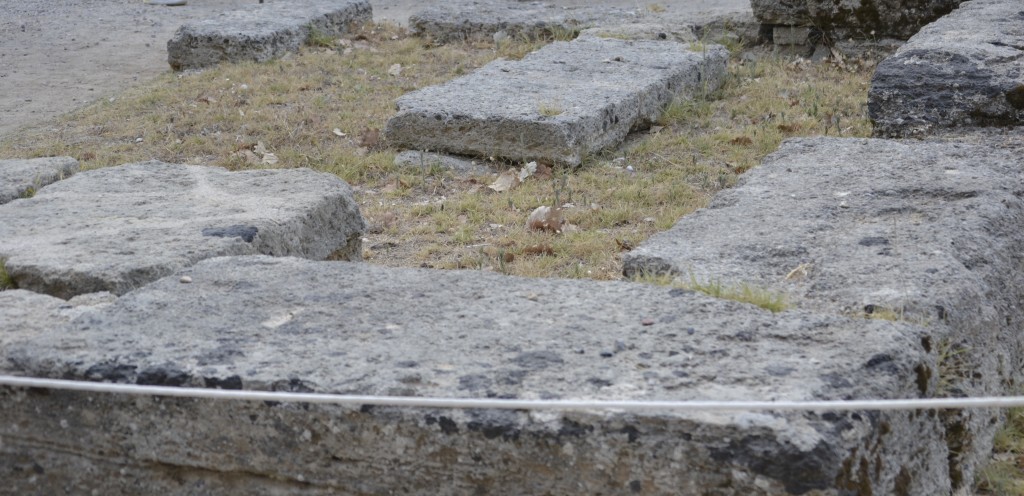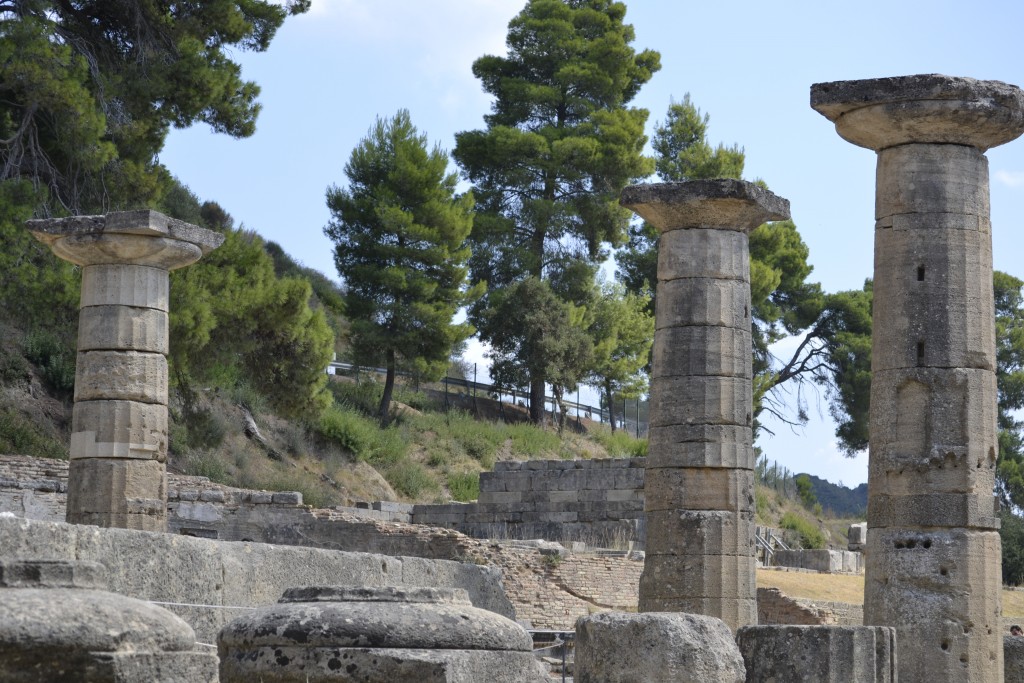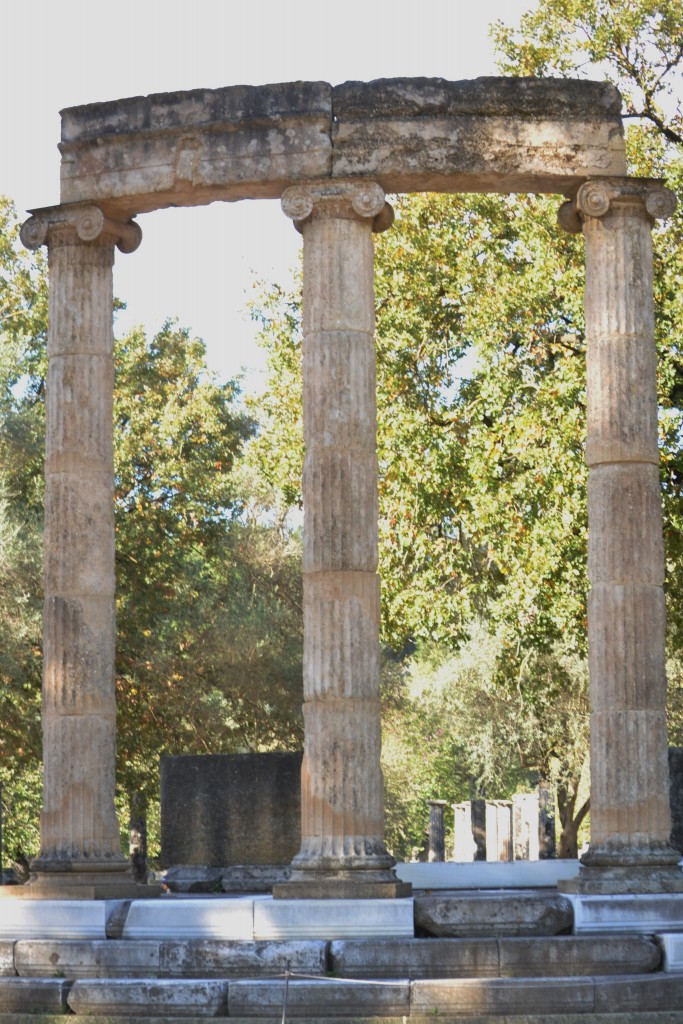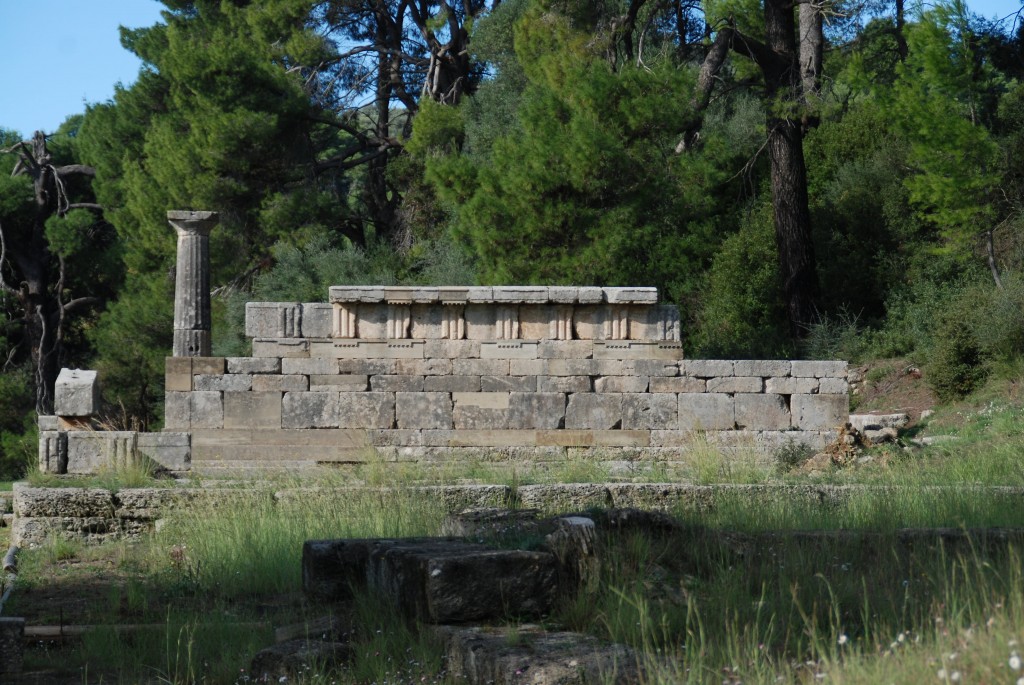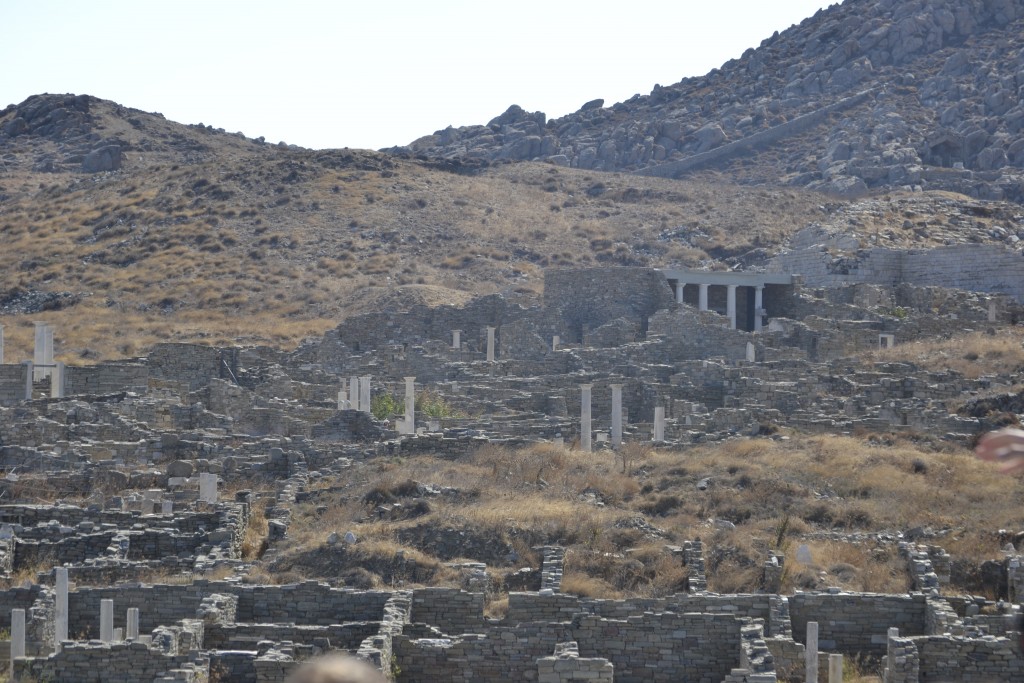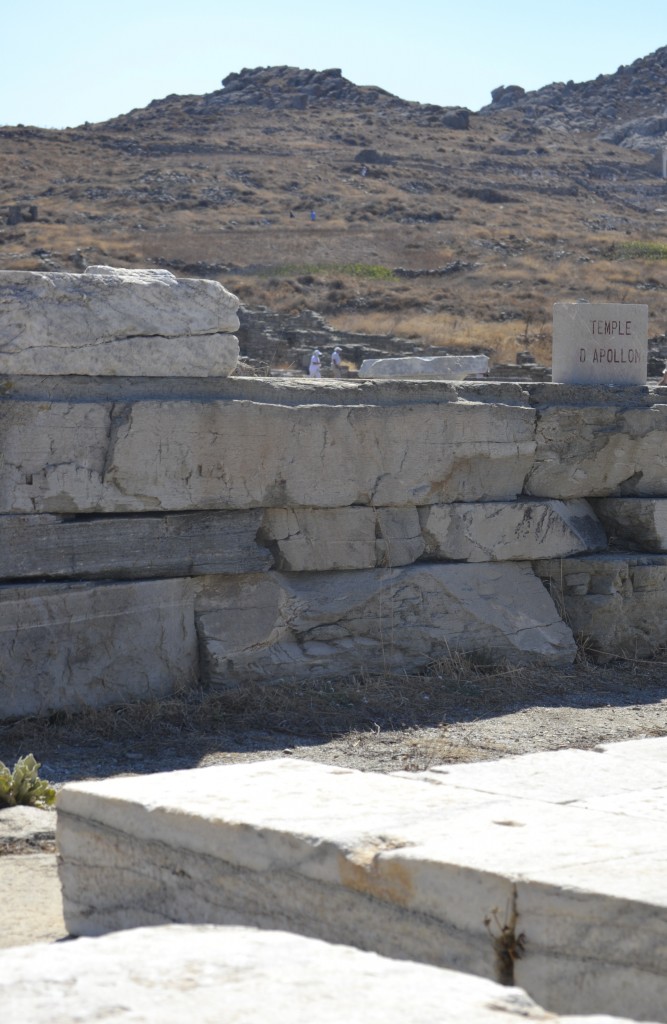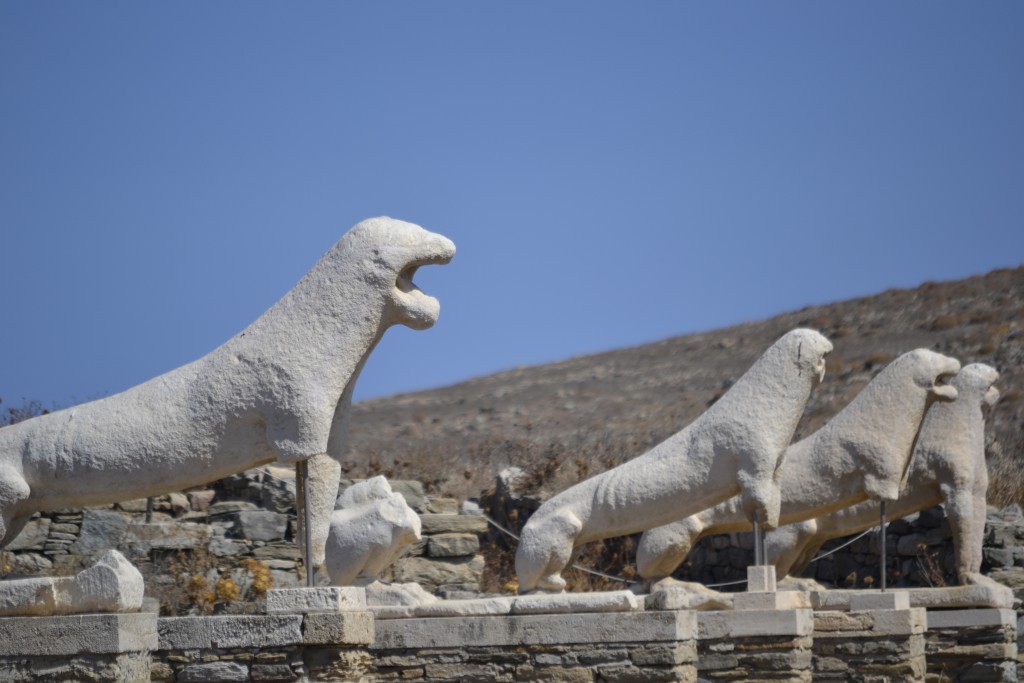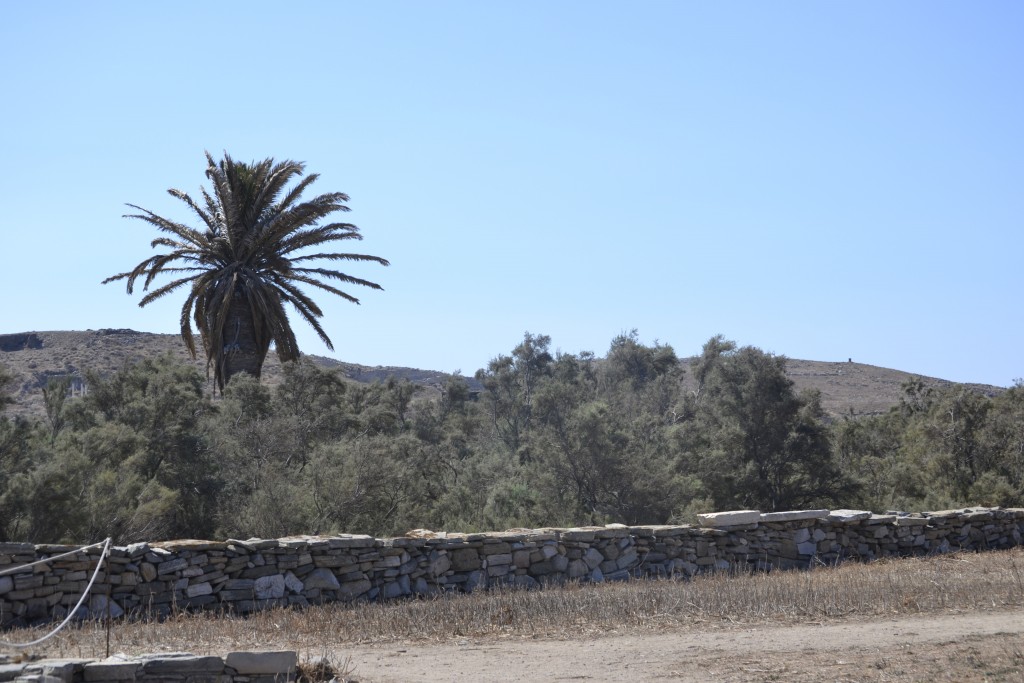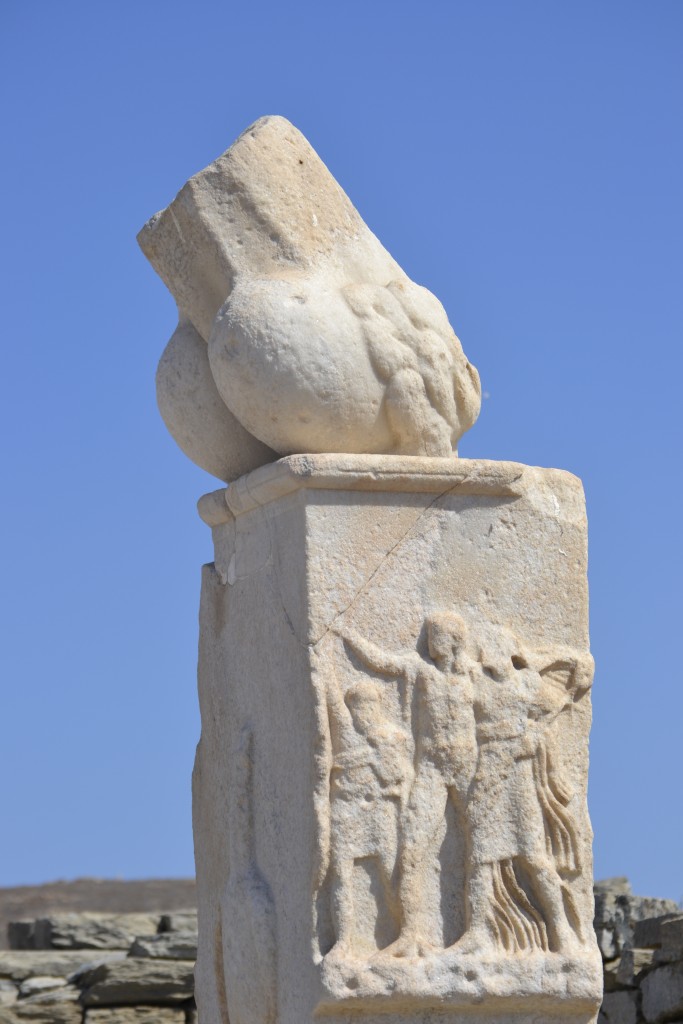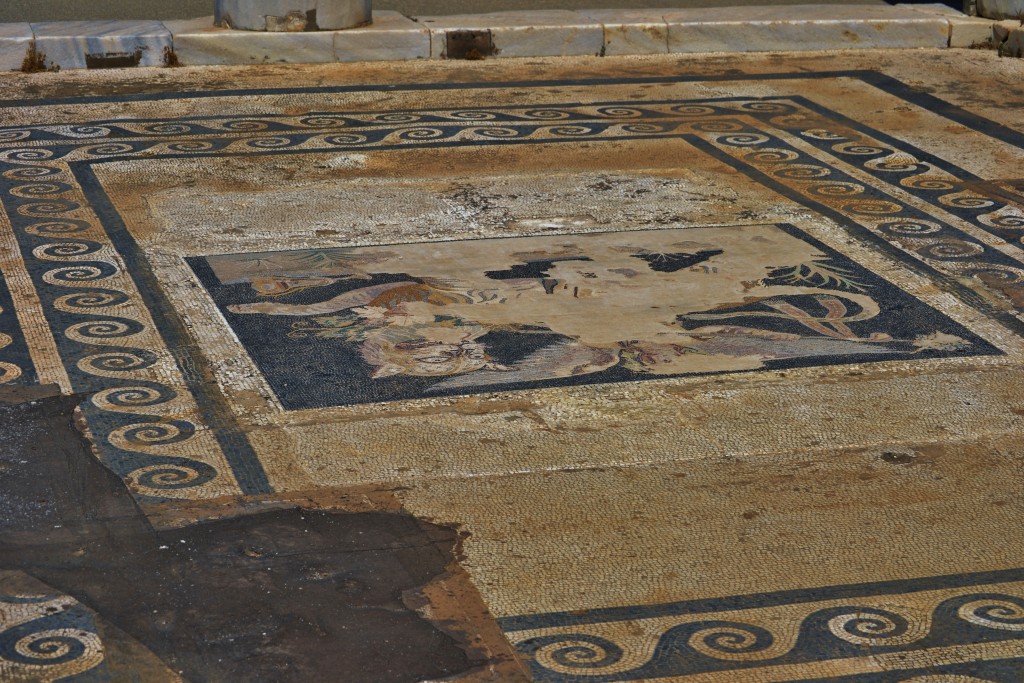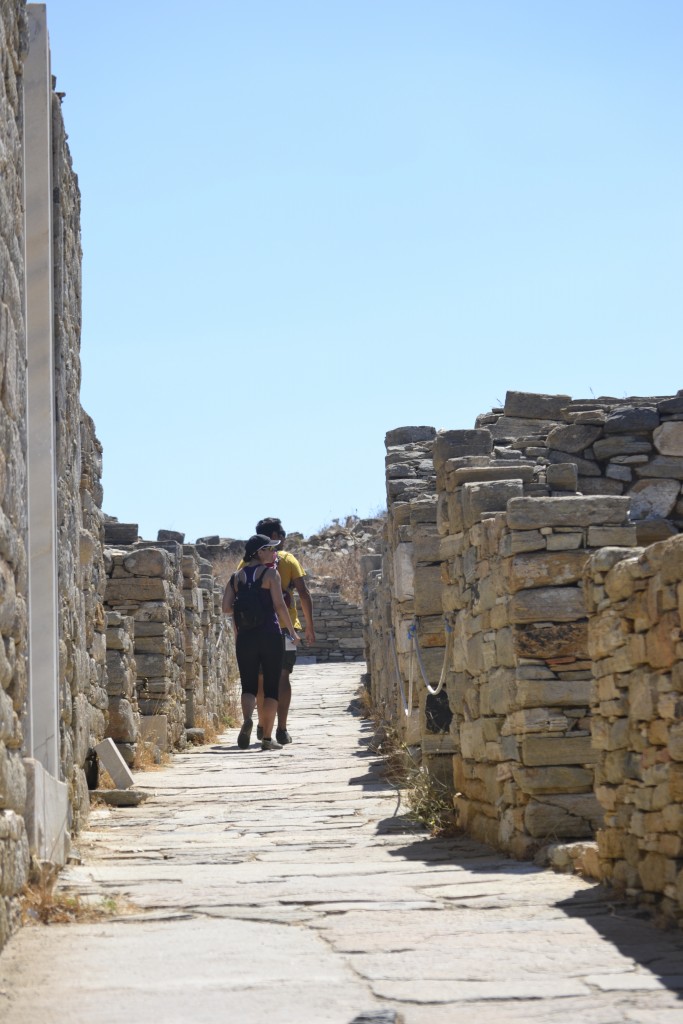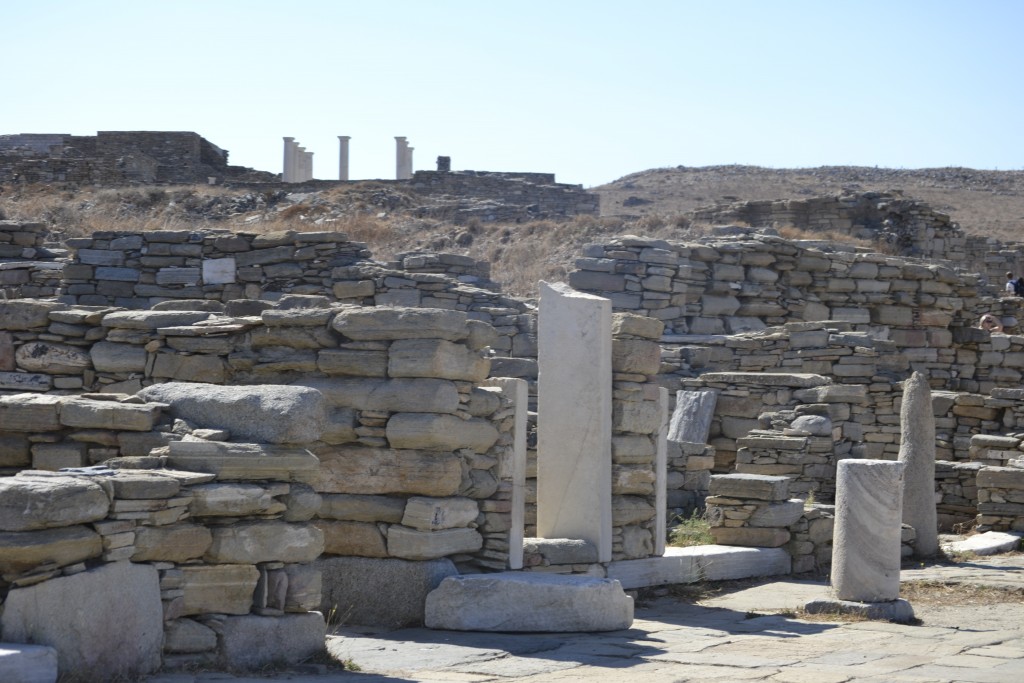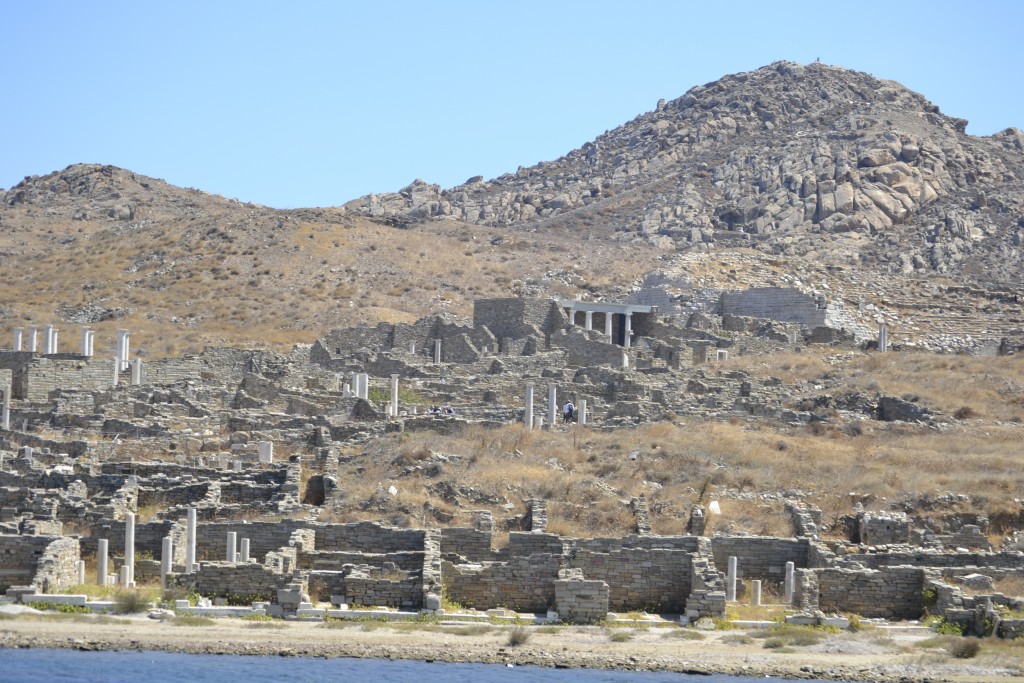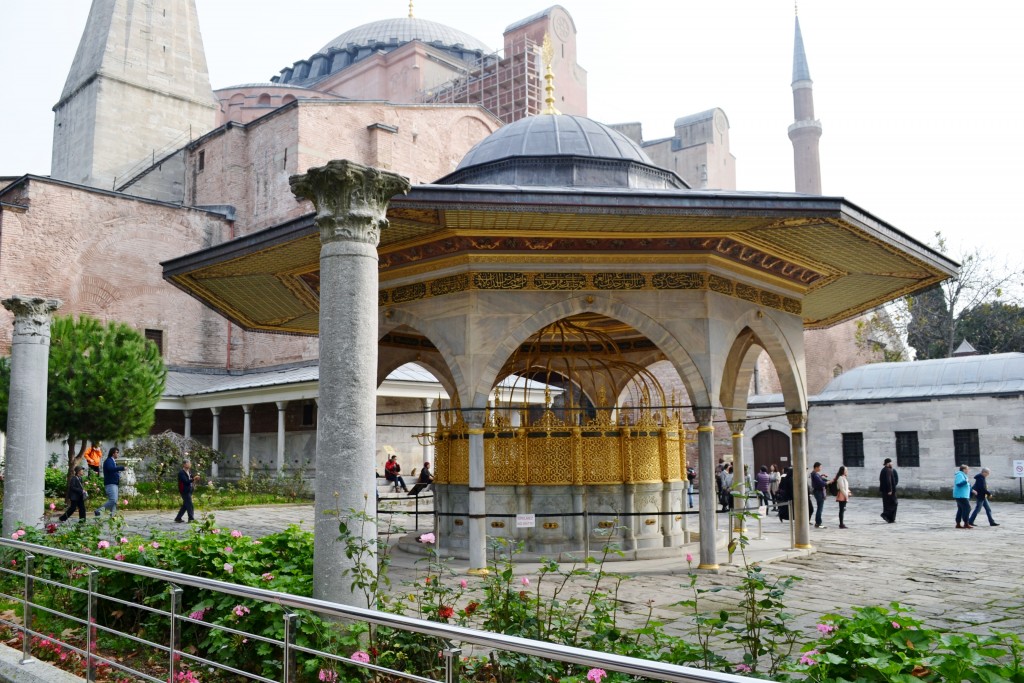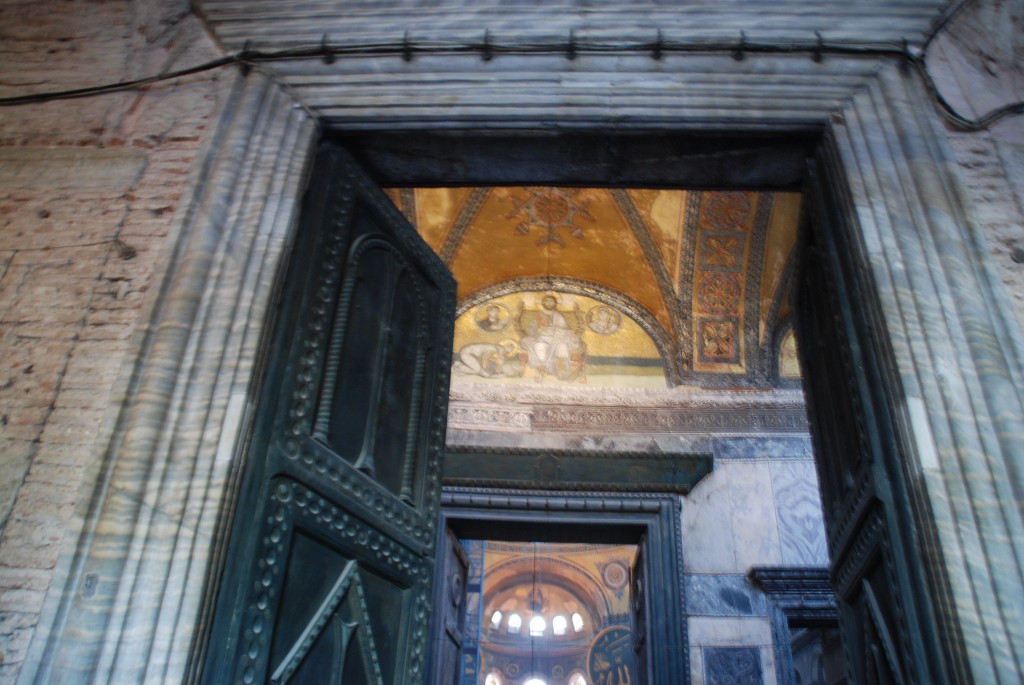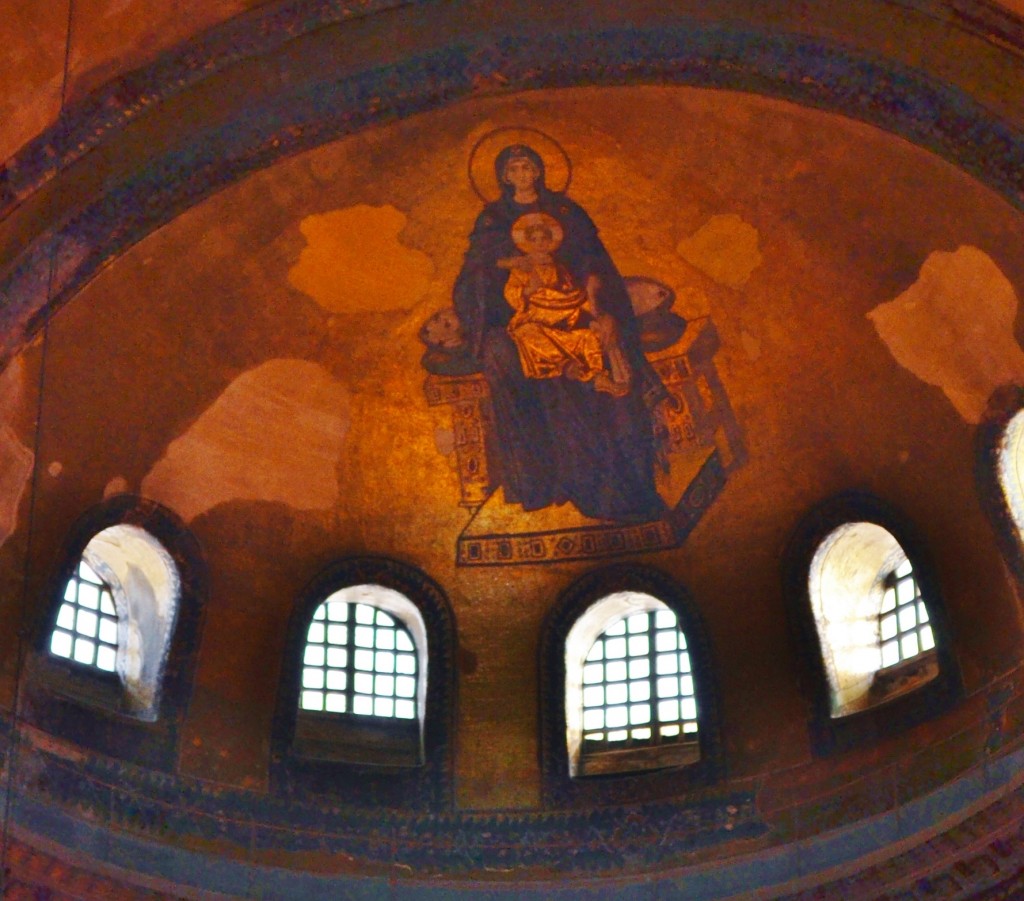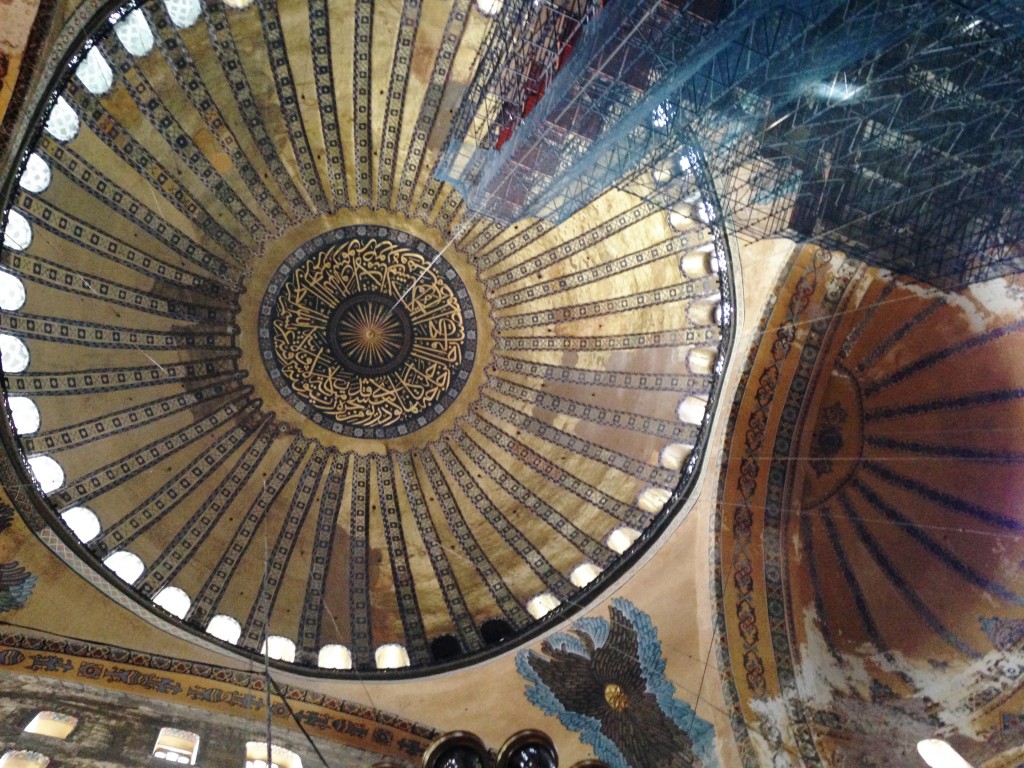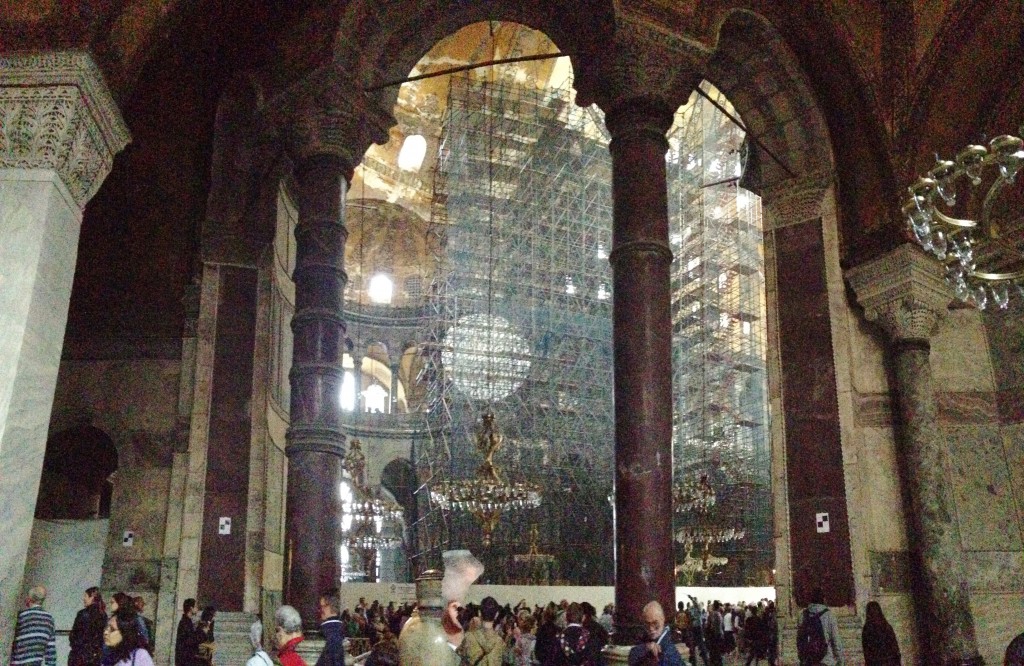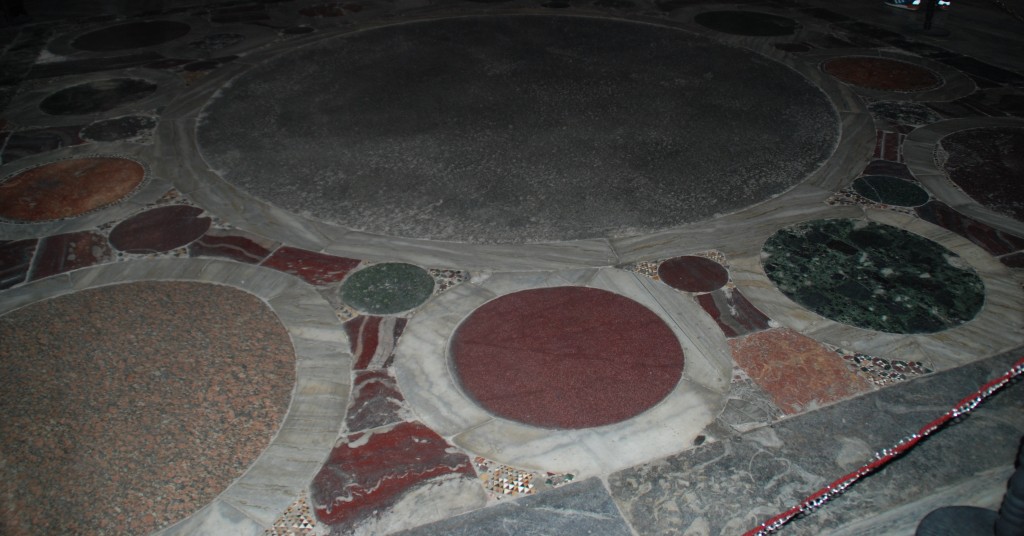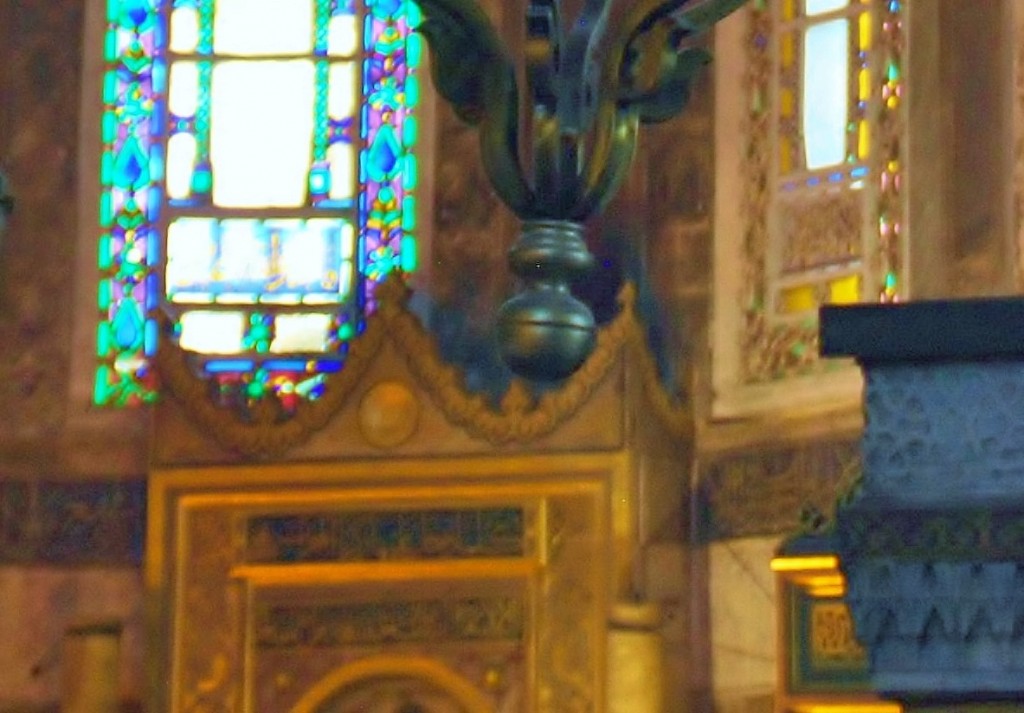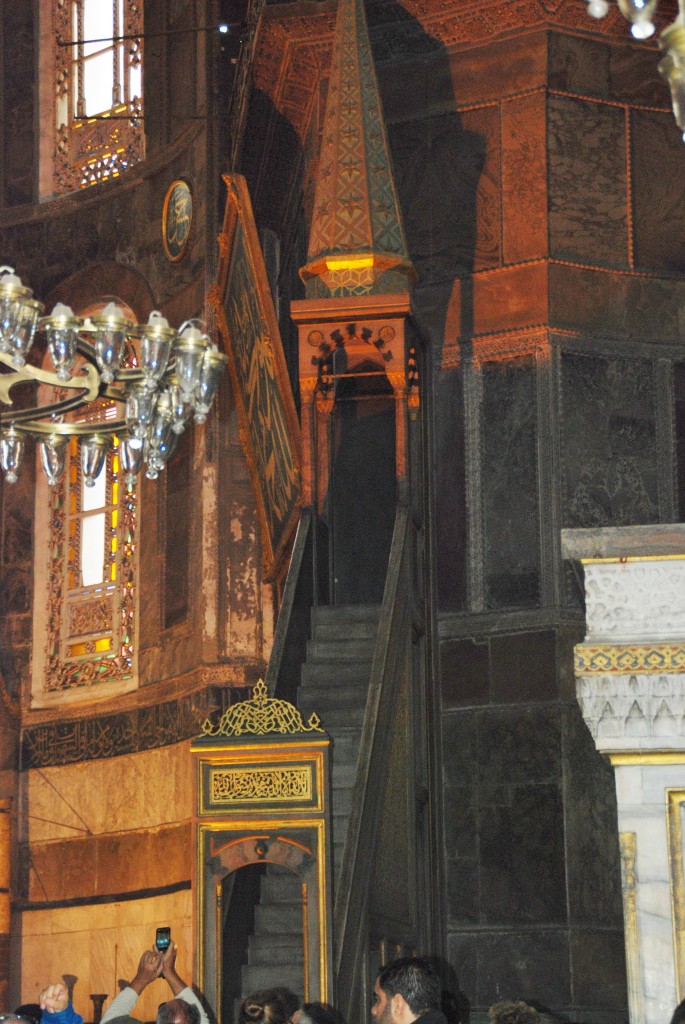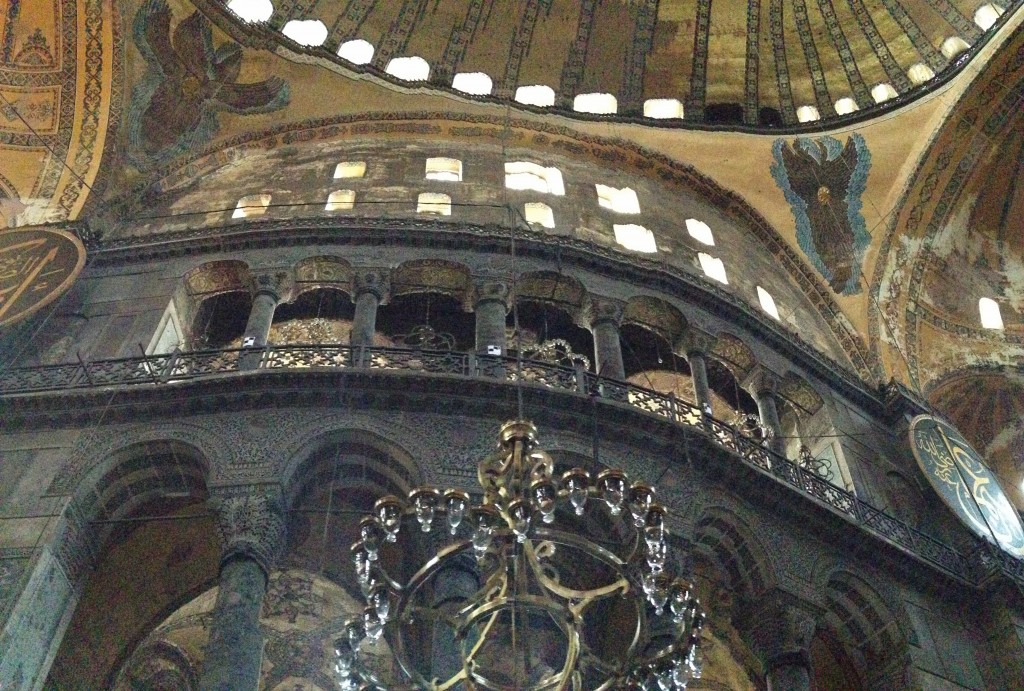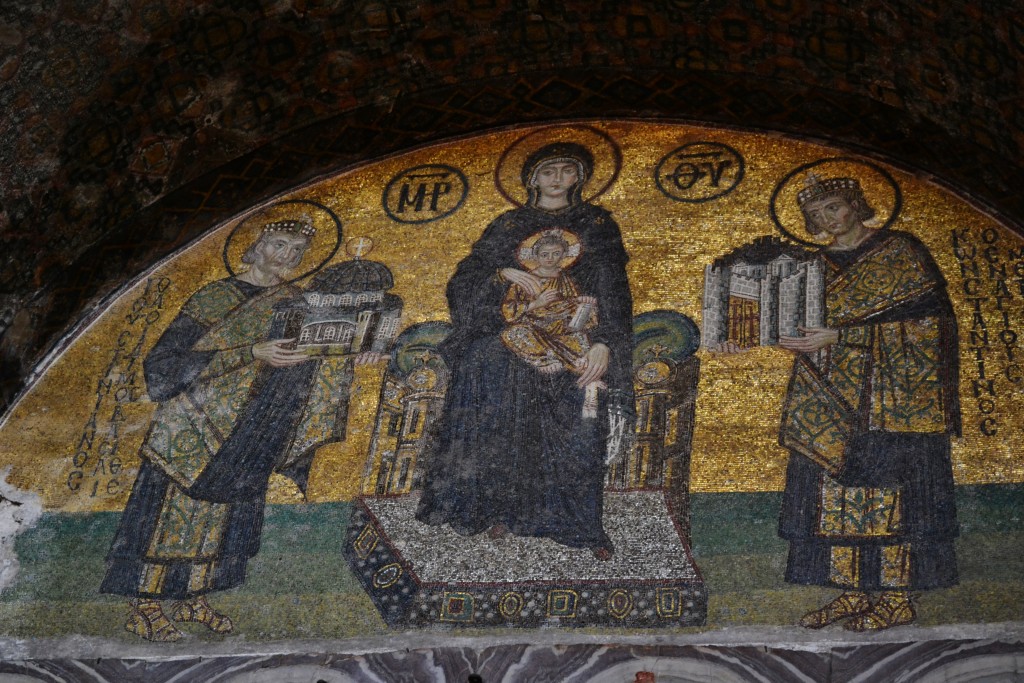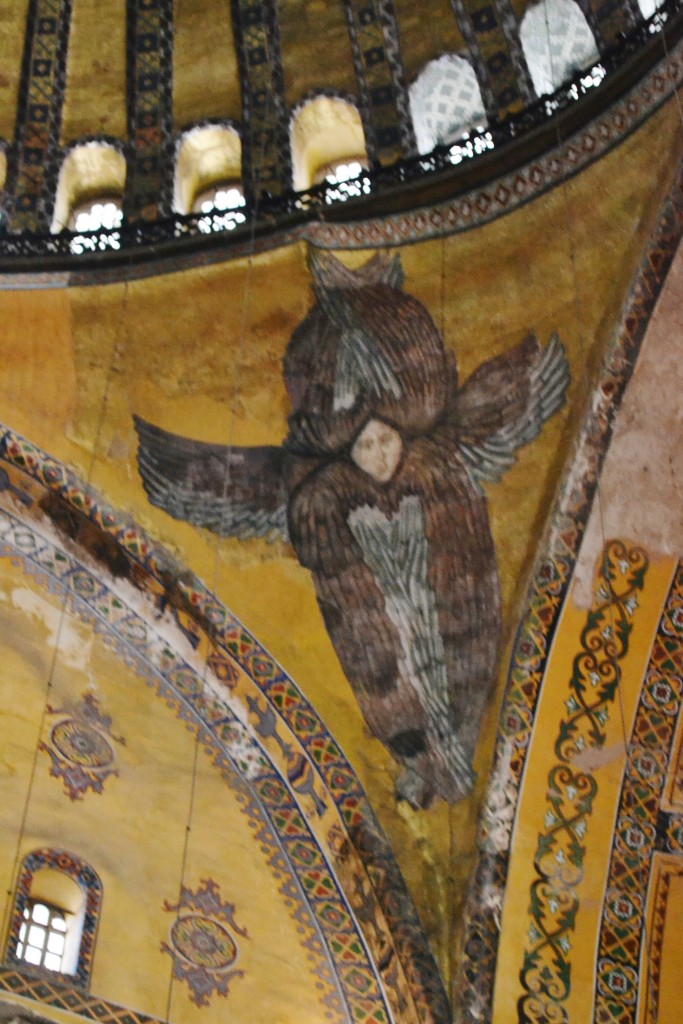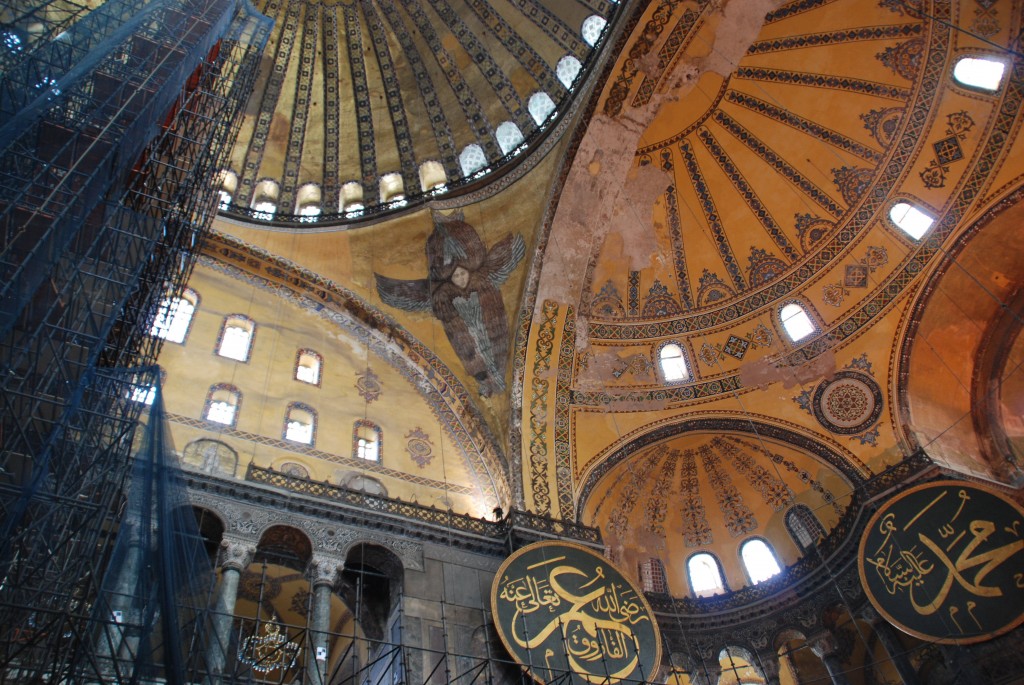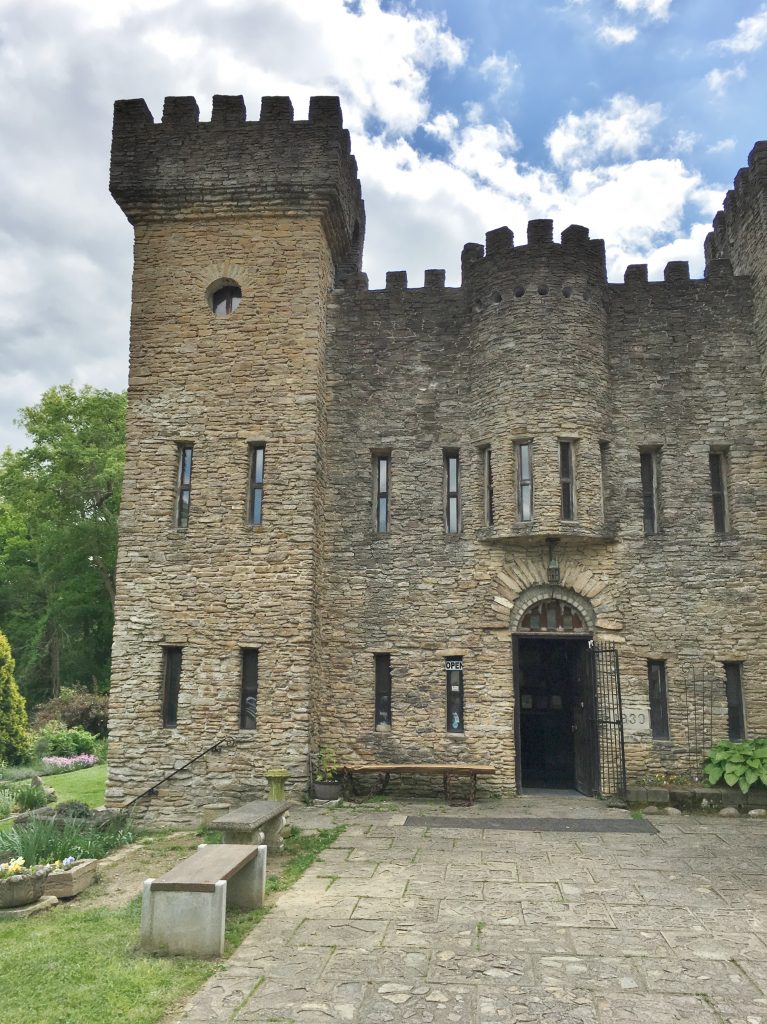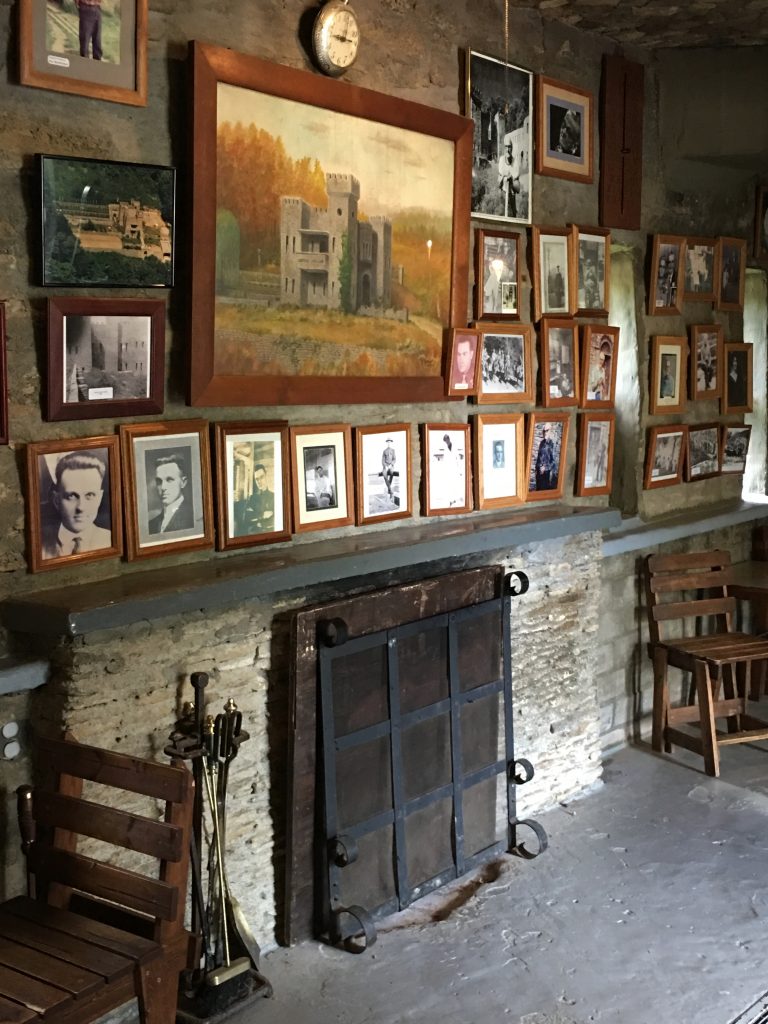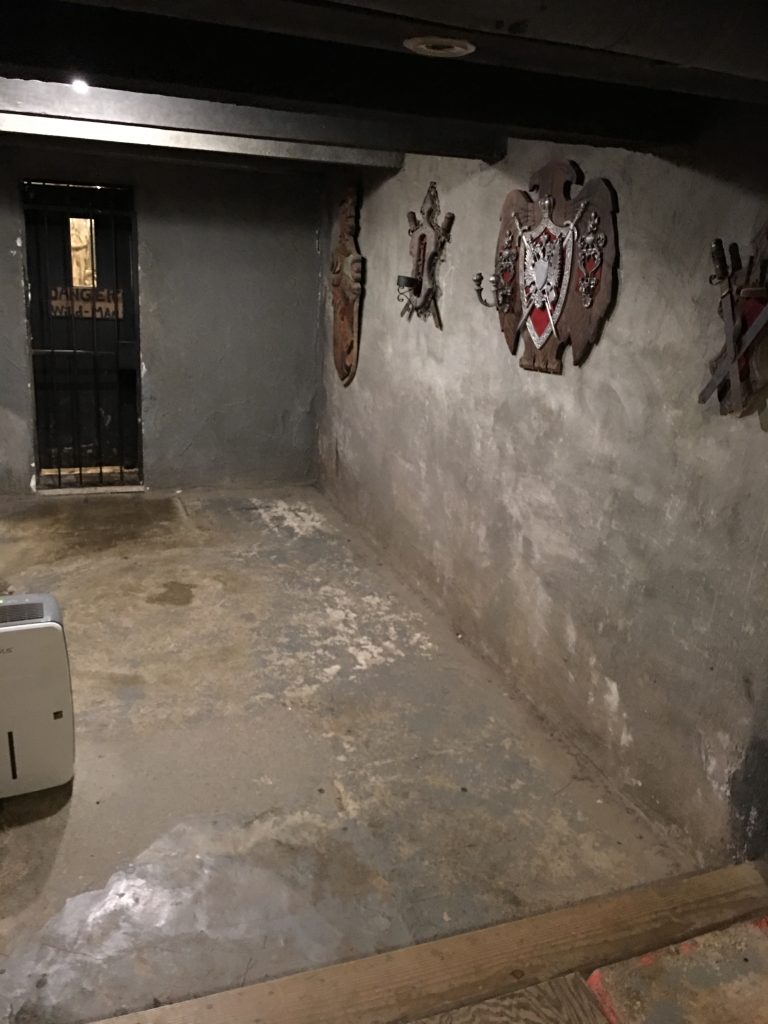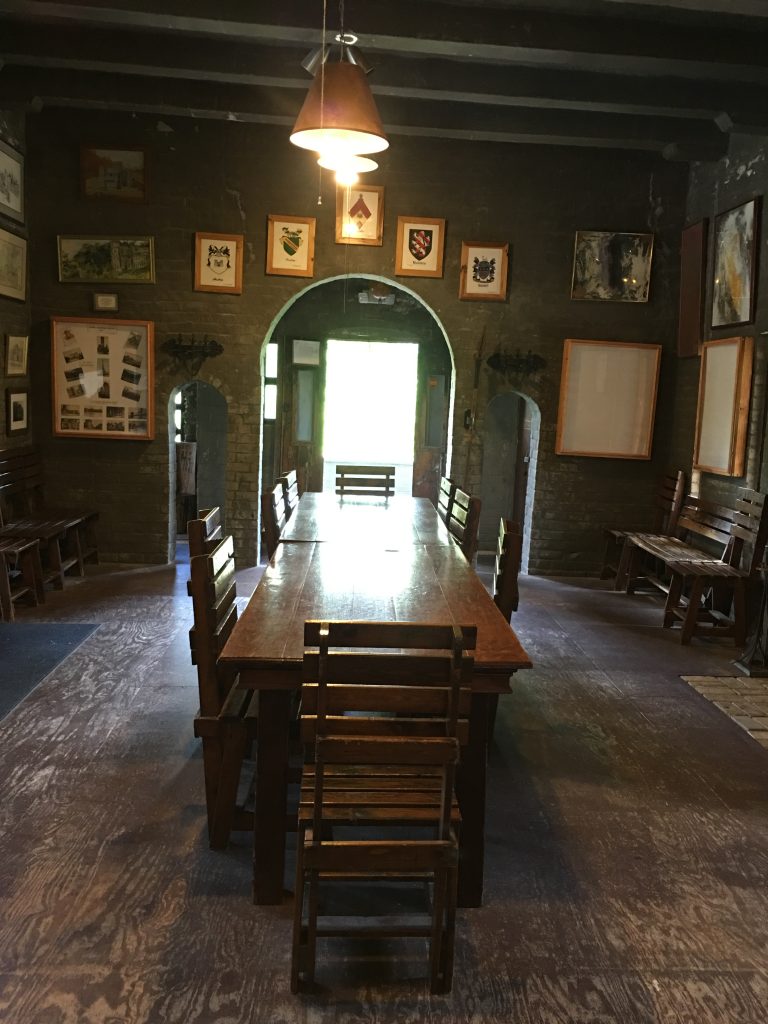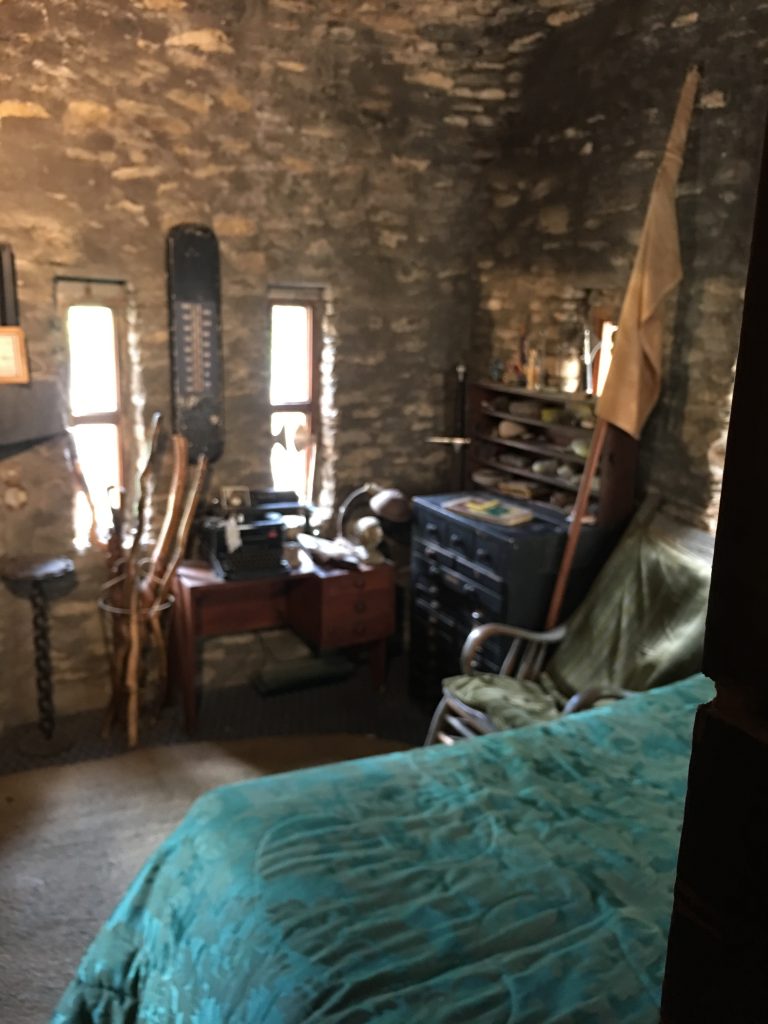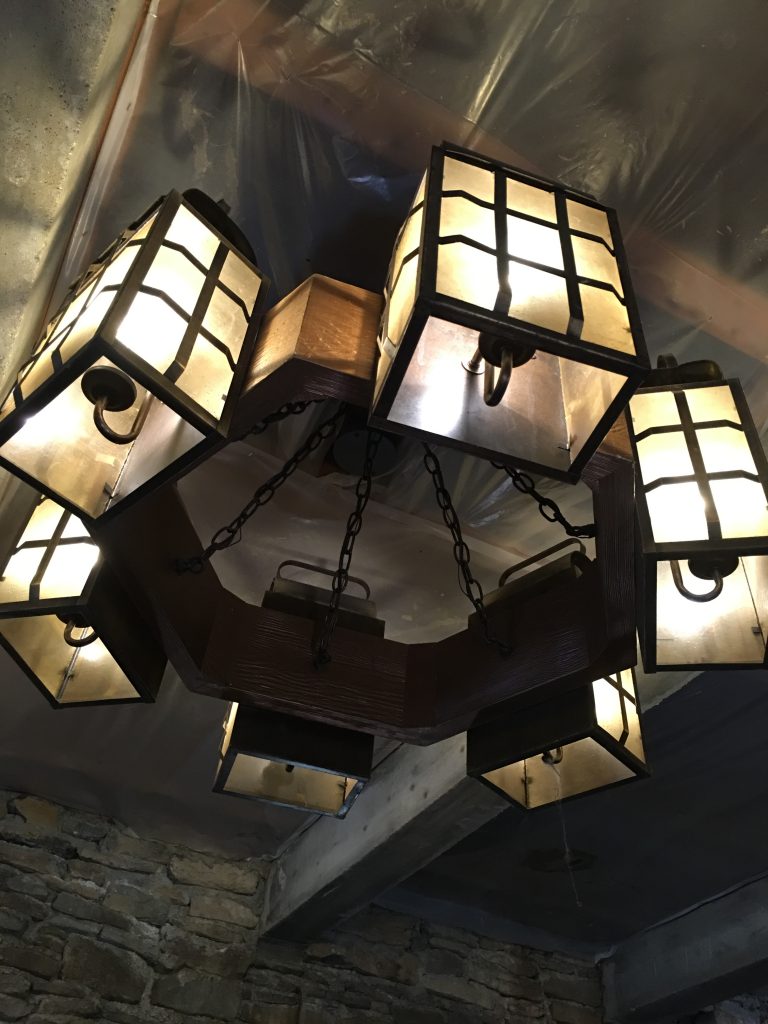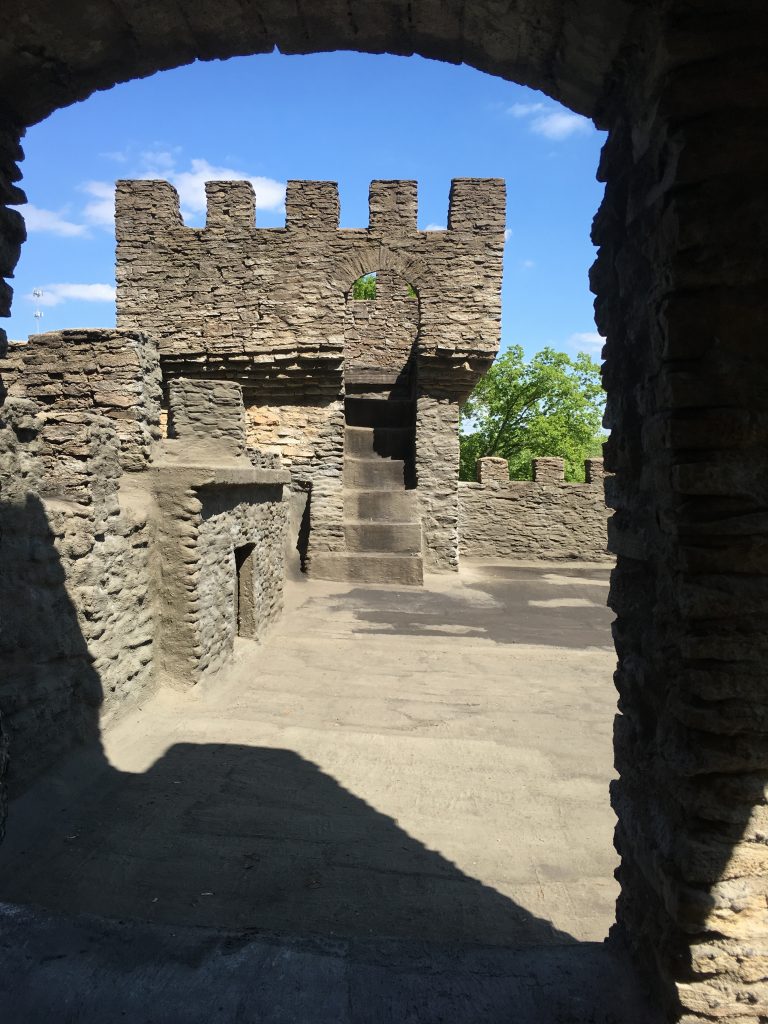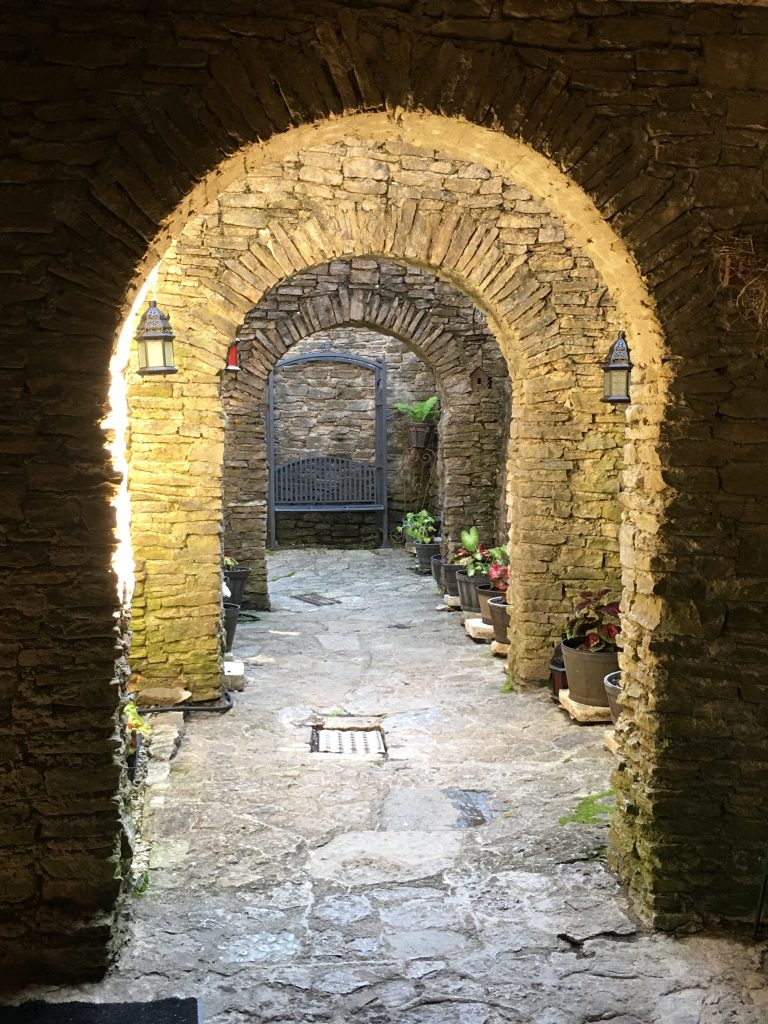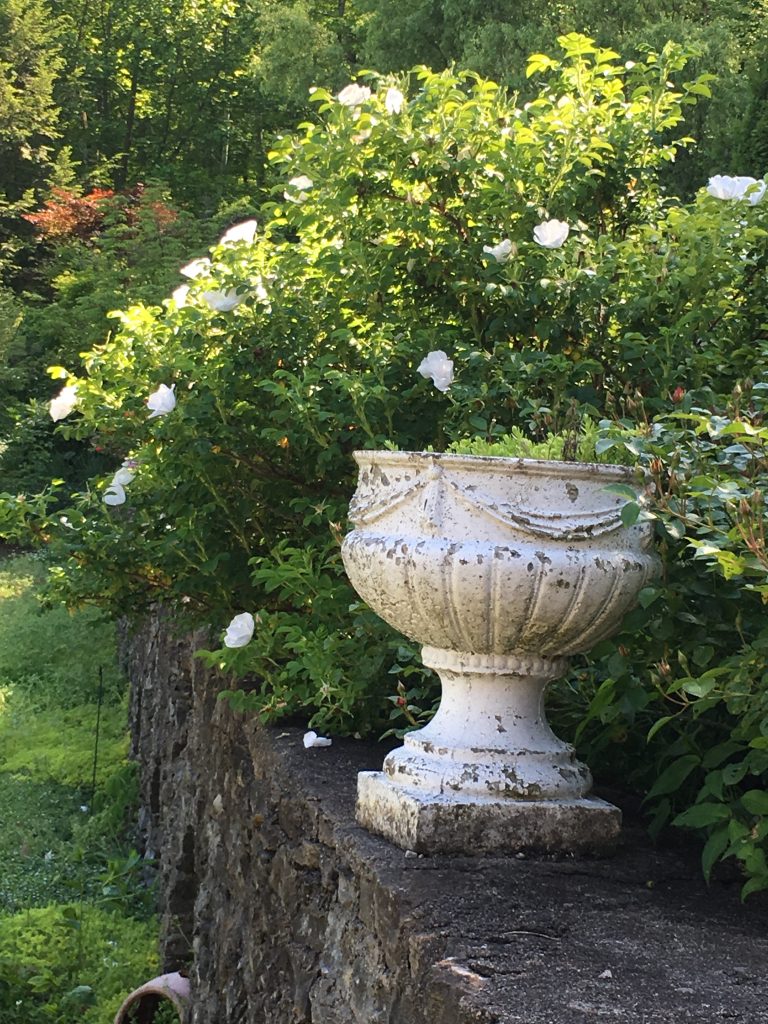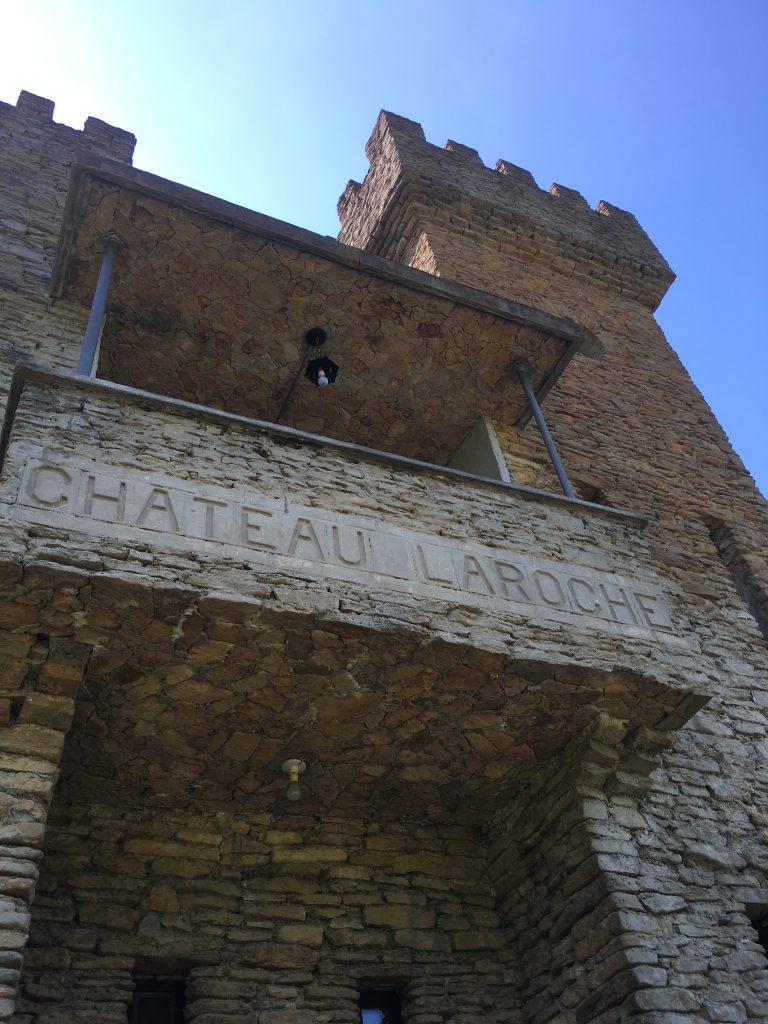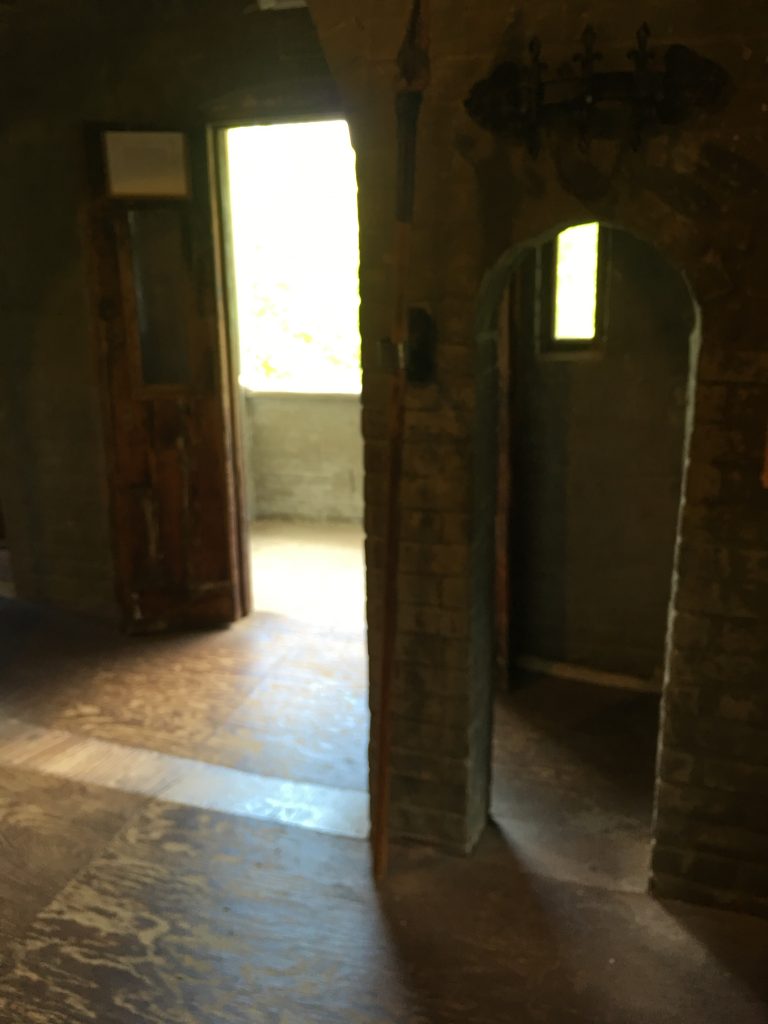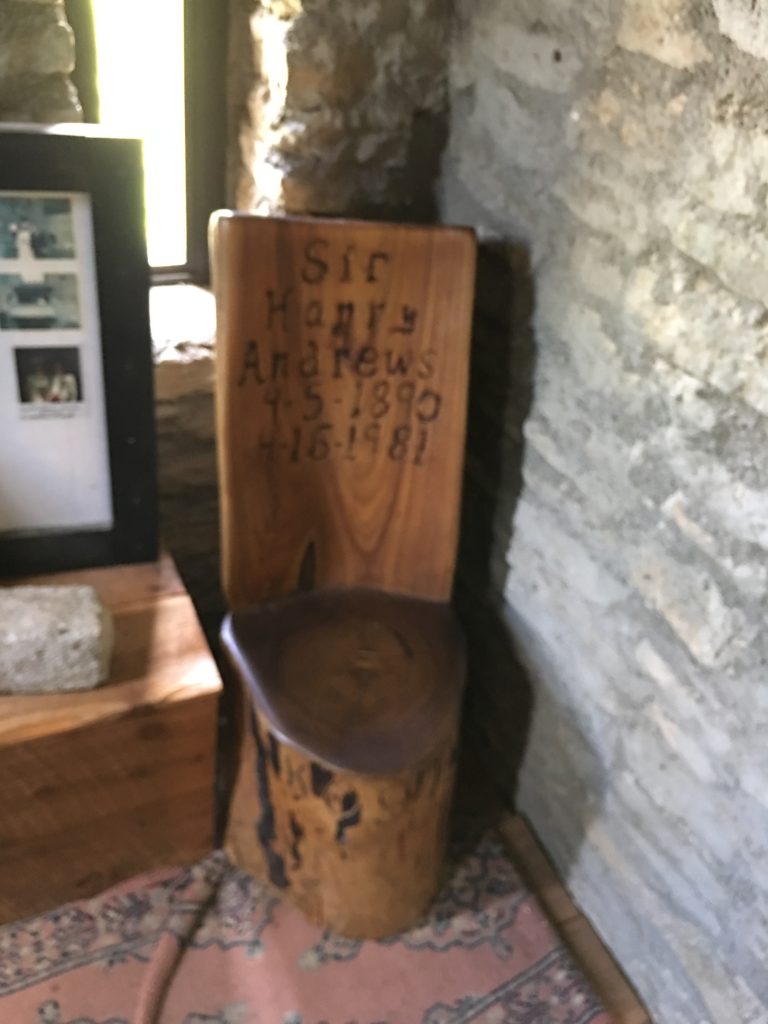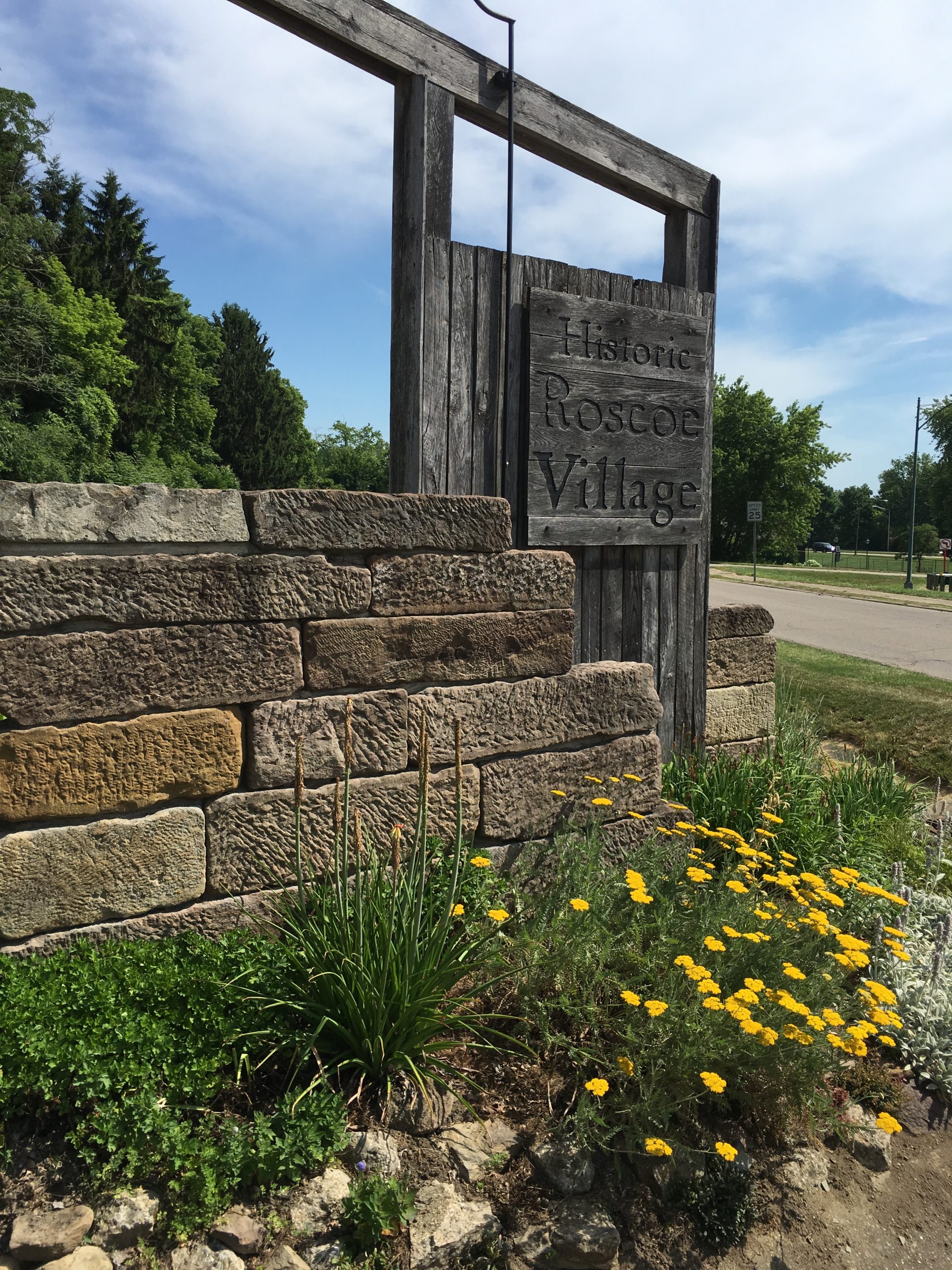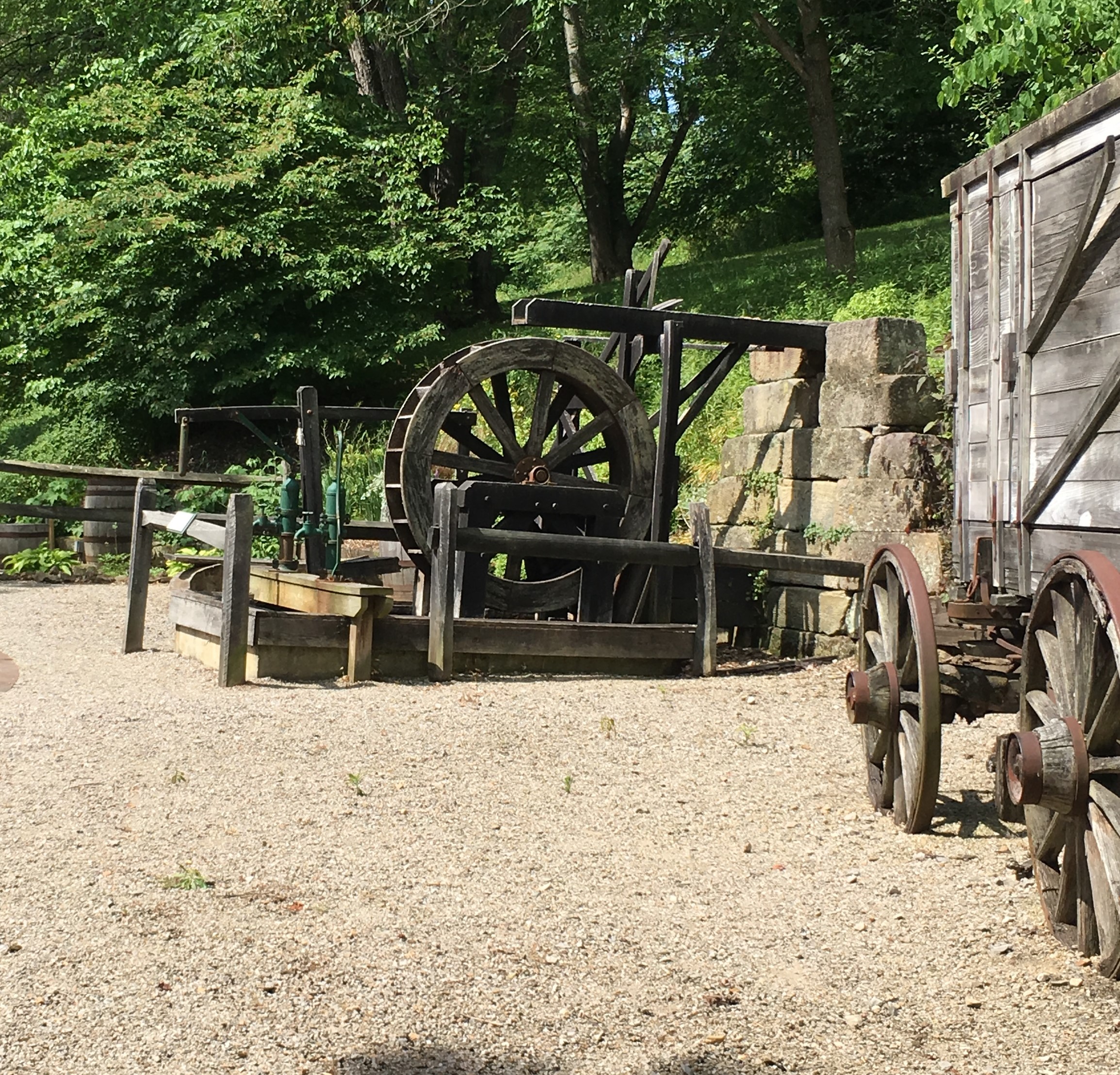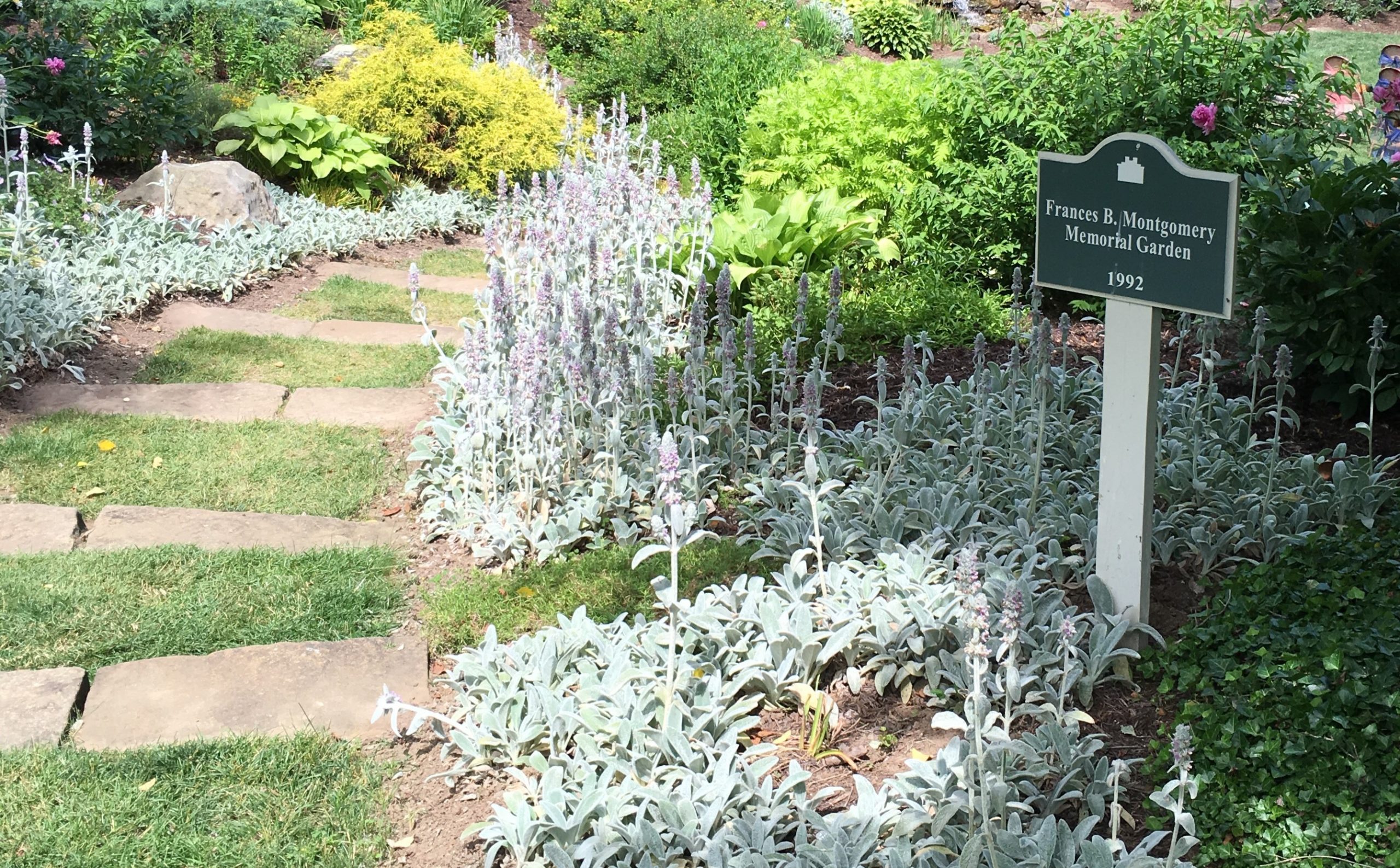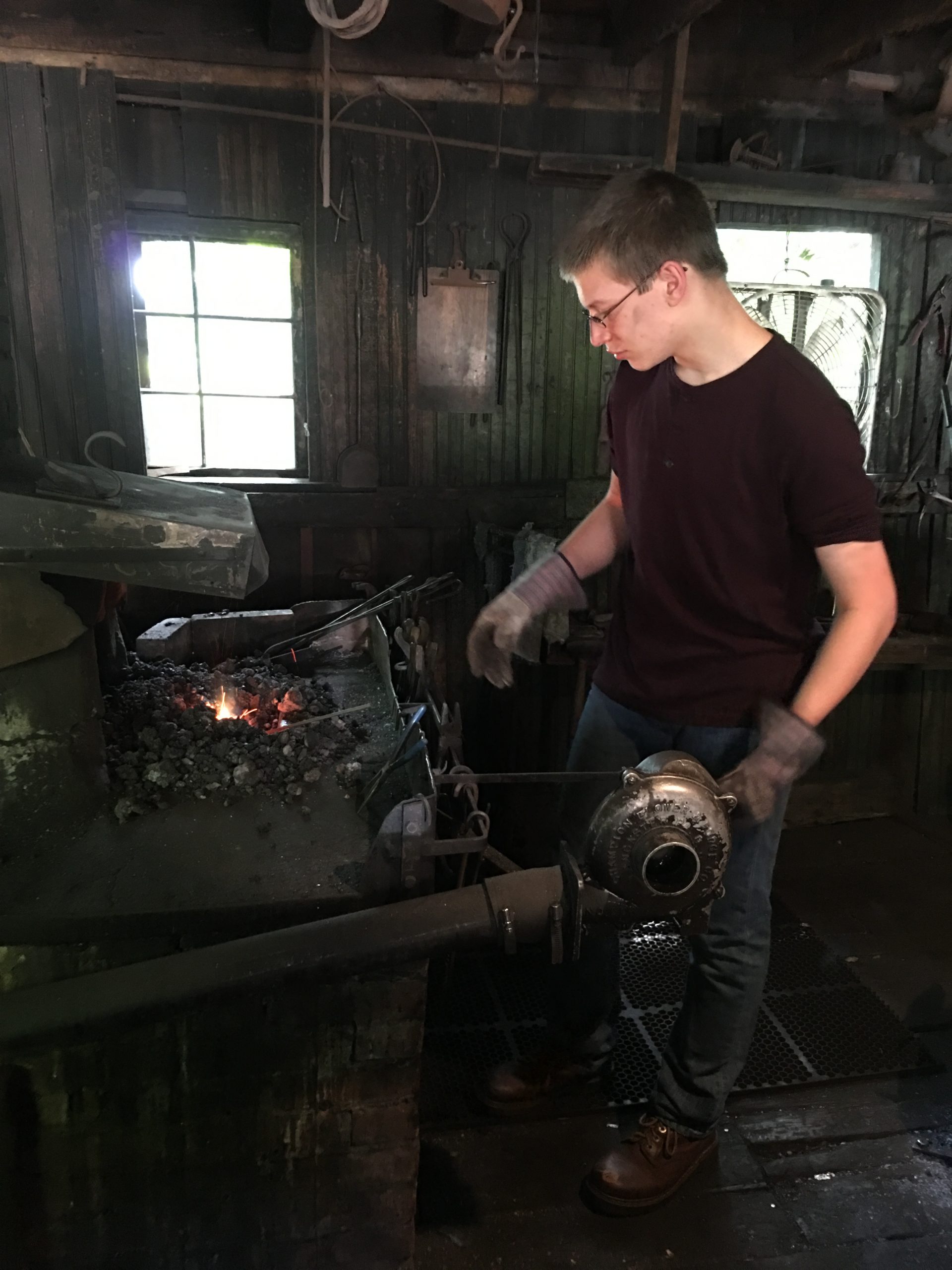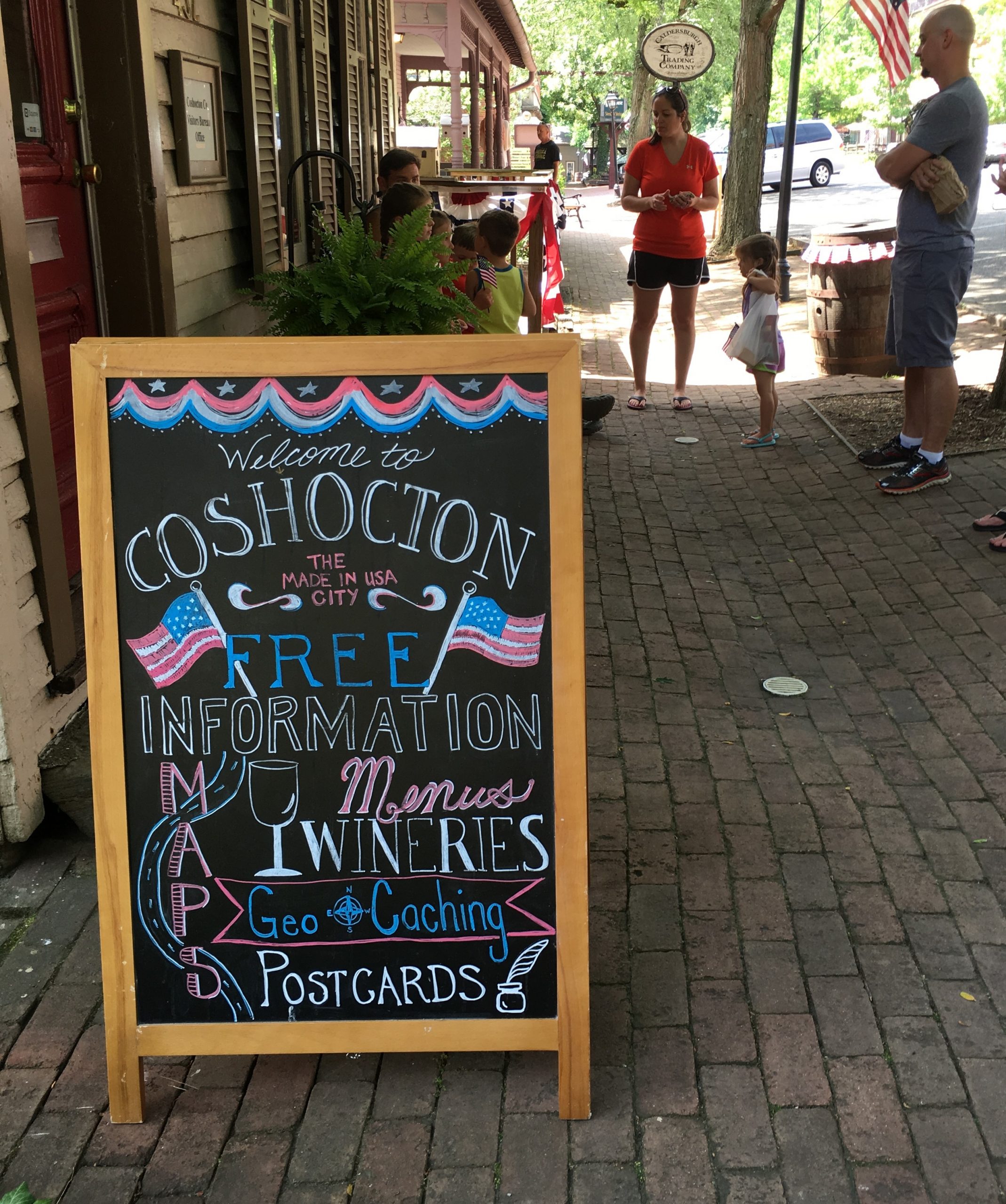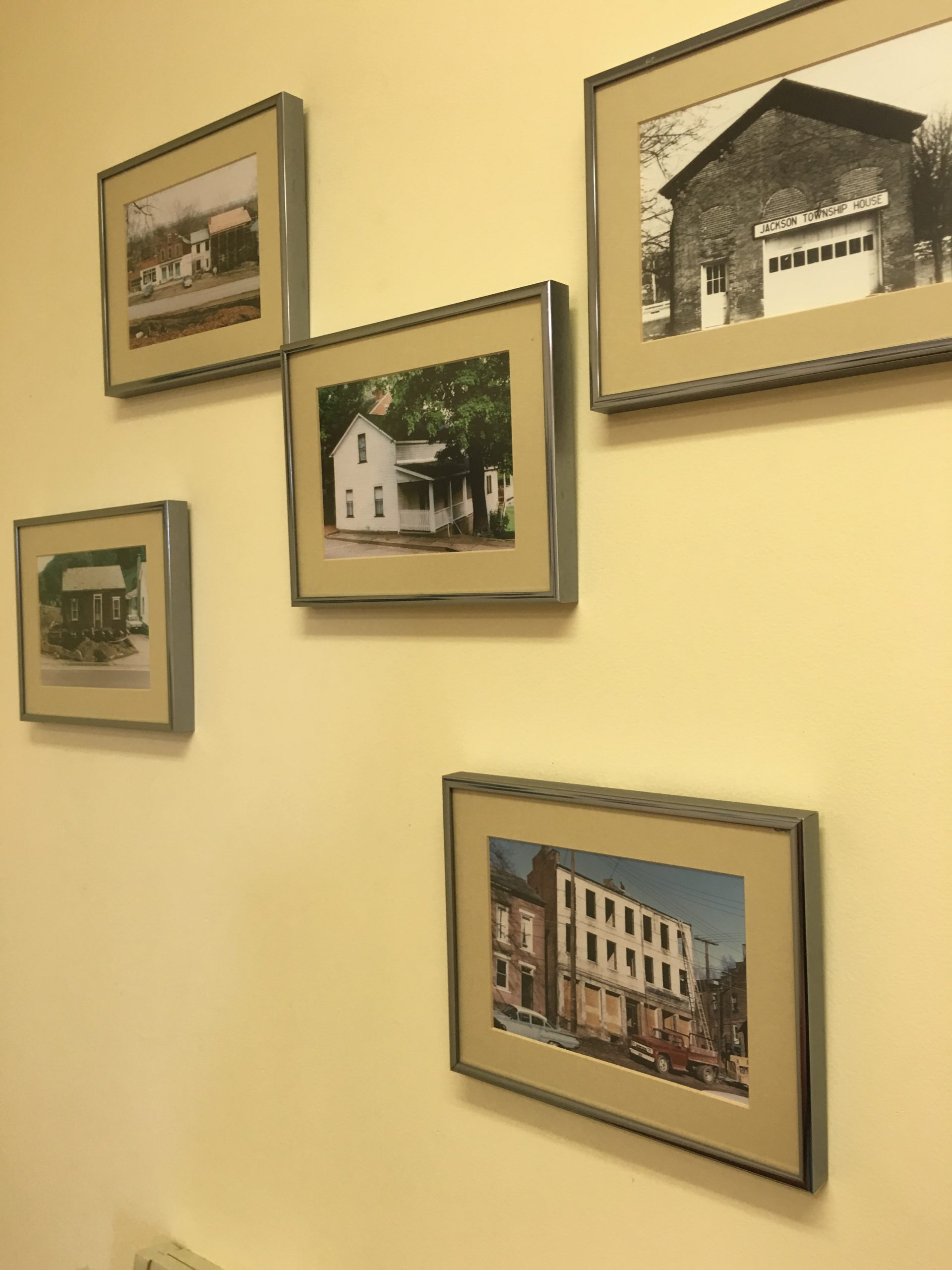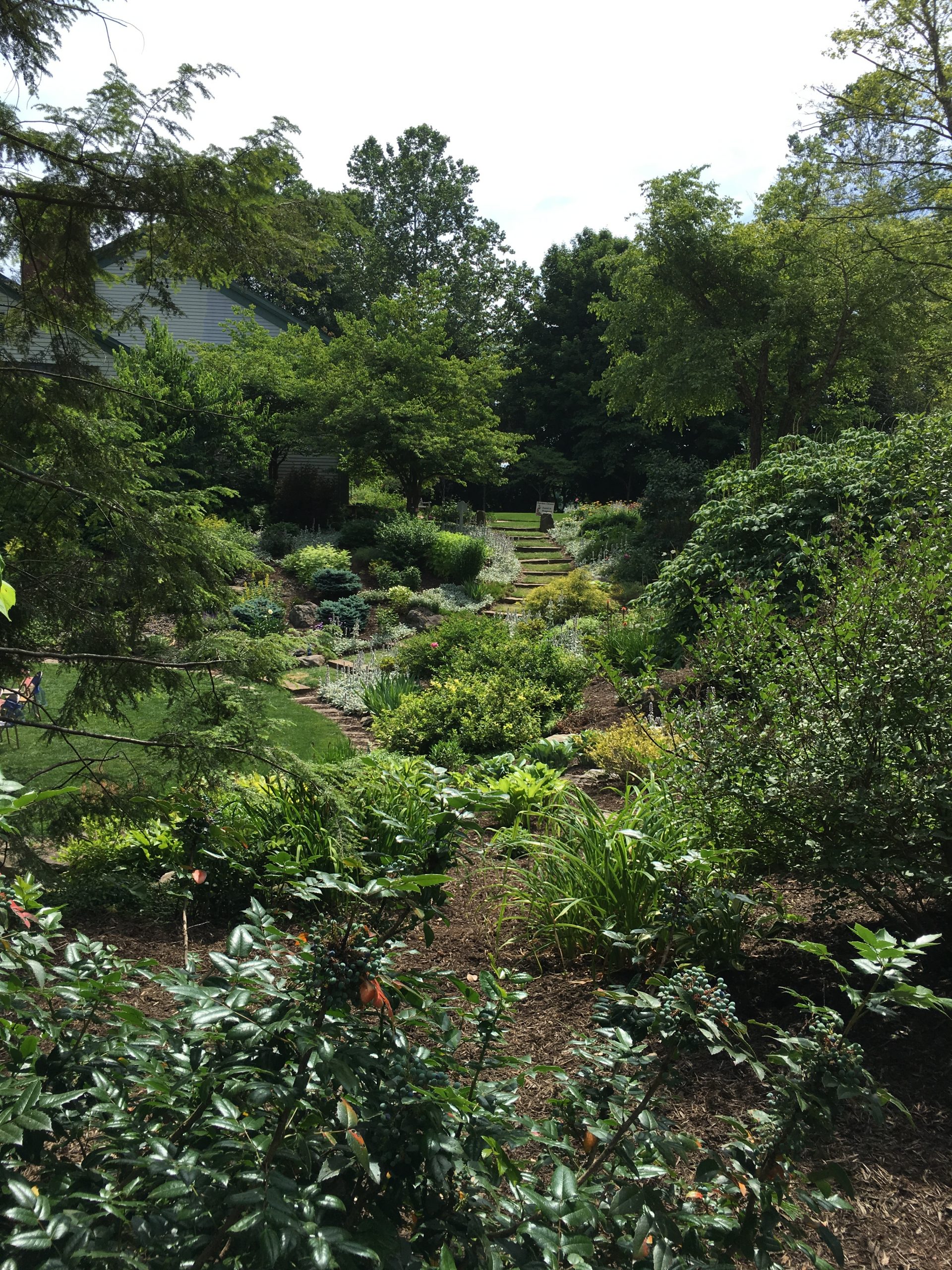What is more fun than boarding an overnight flight to Rome, only to find yourself waking up in La Citta Eterna? With a full day ahead and an unending list of sites to explore, I couldn’t wait to board the train for Roma St. Pietro. The Gemelli station was only a short walk from my hotel and within minutes, I had soon arrived. 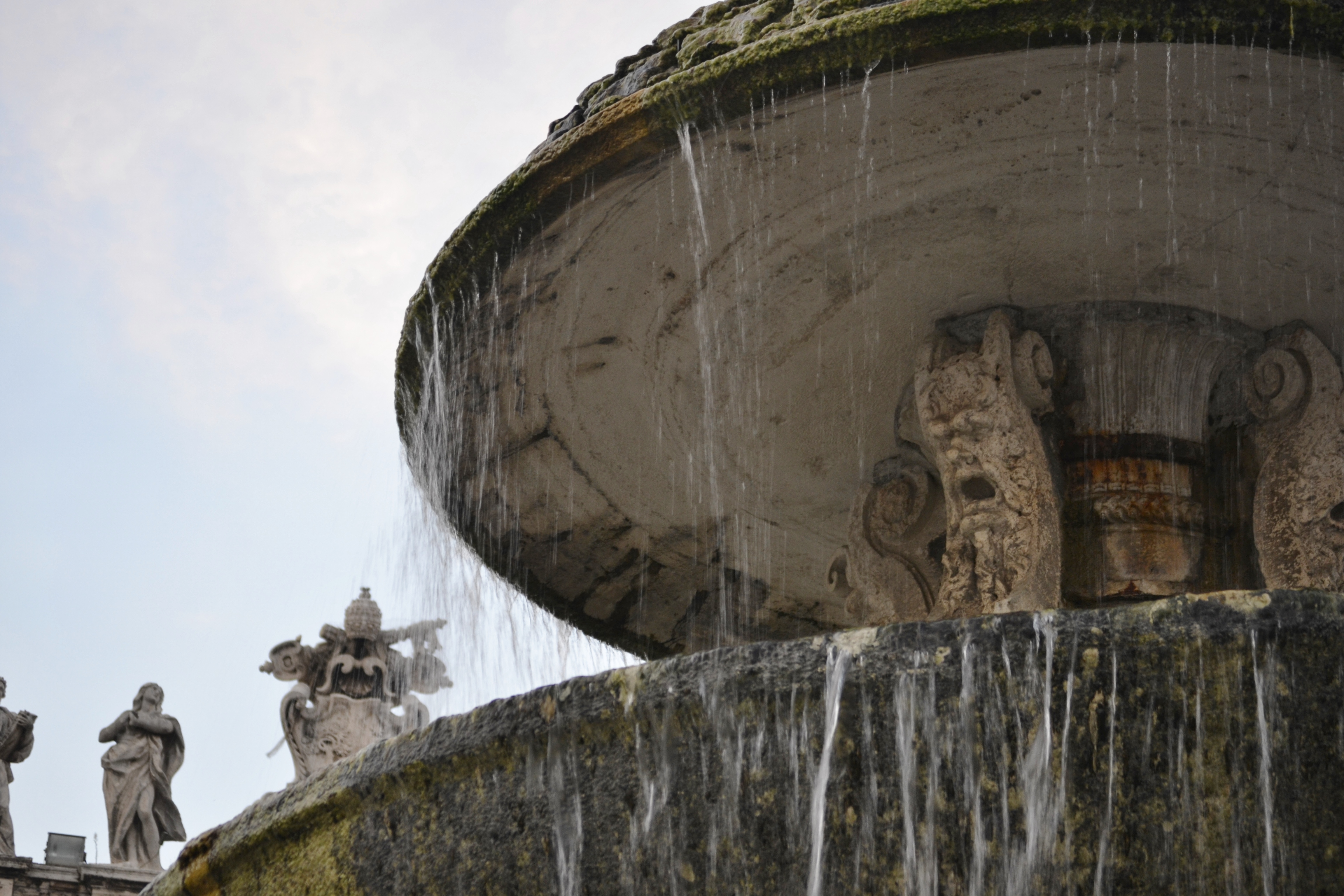
I followed the directional signs pointing me towards St. Peter’s Basilica. The ancient stone streets were lined with closed boutiques and bustling coffee shops and cafes, ready to open in about an hour. Before long, I found myself standing in the midst of St. Peter’s Square and stood in awe of the piazza.
Decorated with an Egyptian obelisk and exquisite fountains (look closely and you can see a face carved into the pedestal), the plaza was beginning to come alive with eager tourists, dedicated clergy and devoted nuns. I admired the fascinating façade of the basilica and its delicate architecture. The stoic saints, numbering 140, seemed as though they were placed overhead to protect this glorious place of worship and to stand watch over the tomb of St. Peter.
Over the next couple of days, I would become quite familiar with the Piazza San Pietro as the Hop On Hop Off bus was stationed across the street. Along the Piazza Pio XII was a lovely café with outdoor seating. Each morning I ordered cappuccinos while reviewing my full, daily schedule until it was time for me to board the bus.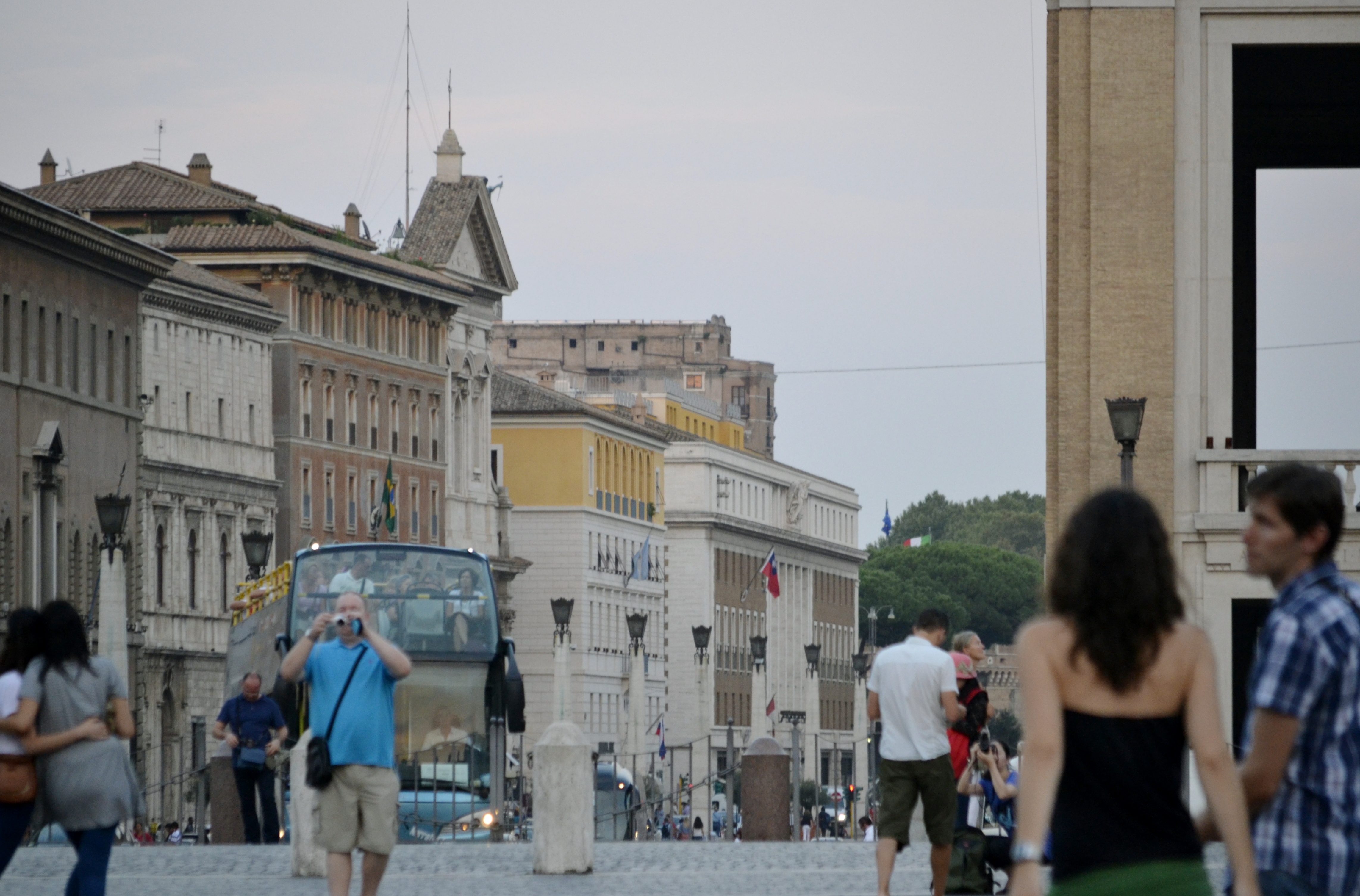
The double-decker, with its open air seating on the second level, was perfect for unobstructed views of Rome. I decided to make a complete round trip ride to become more acquainted with the city enjoying the comfort of the ride. Feeling the cool wind and listening to the commentary on the headset, I was soaking in the sun and sites and taking in the substantial history of this gorgeous metropolis.
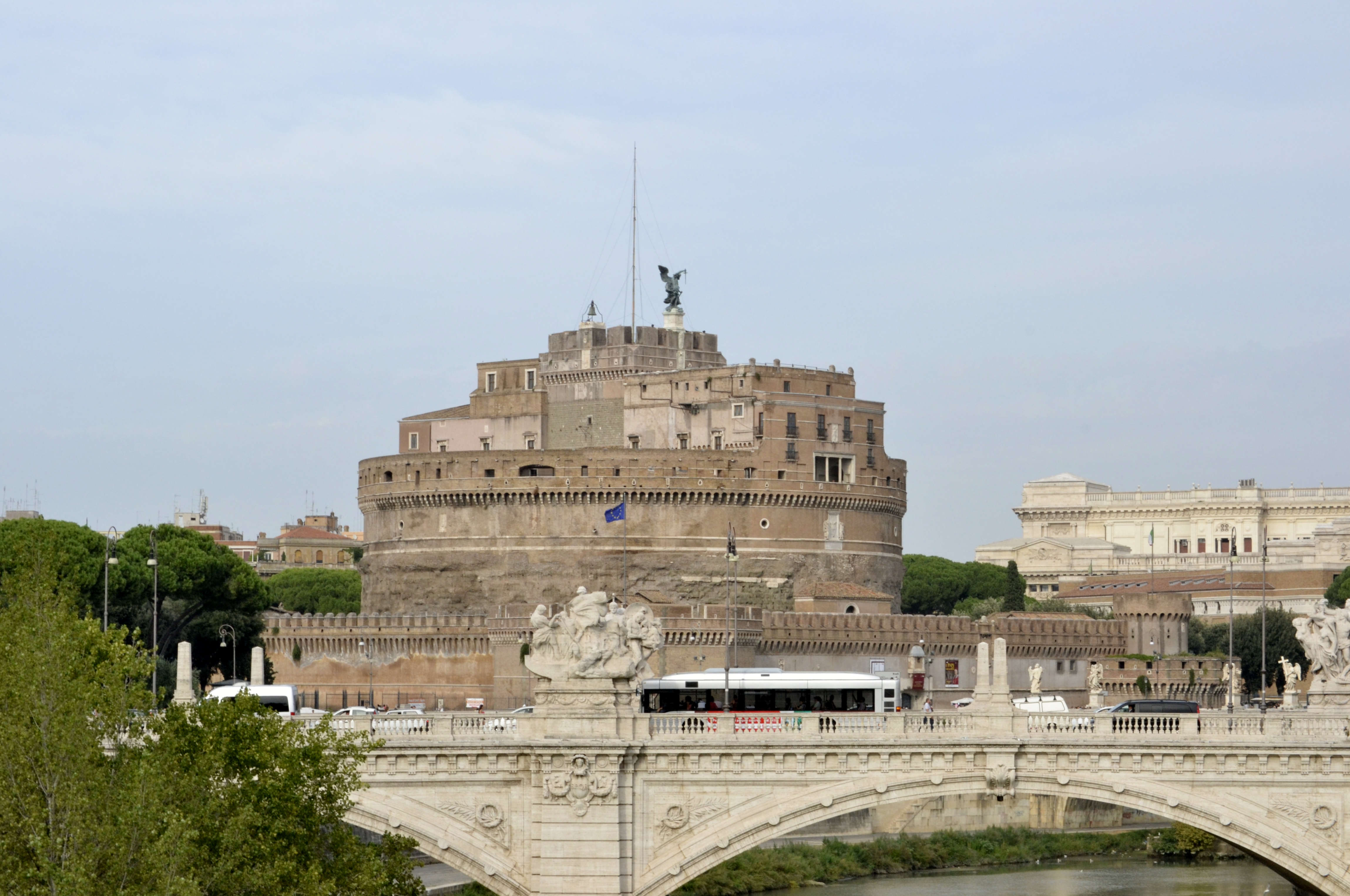 The day was full of archaeological surprises. While a great deal of ancient Rome has been unveiled, the city is built upon layers of civilization still yet to be discovered, I watched in awe and admiration as landmark after attraction passed me by on the bus.
The day was full of archaeological surprises. While a great deal of ancient Rome has been unveiled, the city is built upon layers of civilization still yet to be discovered, I watched in awe and admiration as landmark after attraction passed me by on the bus.
In the distance, the Castel Sant’Angelo appeared as a backdrop to the extravagant Ponte Sant’Angelo (Bridge of Angels). While it was first designed as a mausoleum for the Roman Emperor Hadrian, this fascinating, circular fortification is now a popular tourist museum. 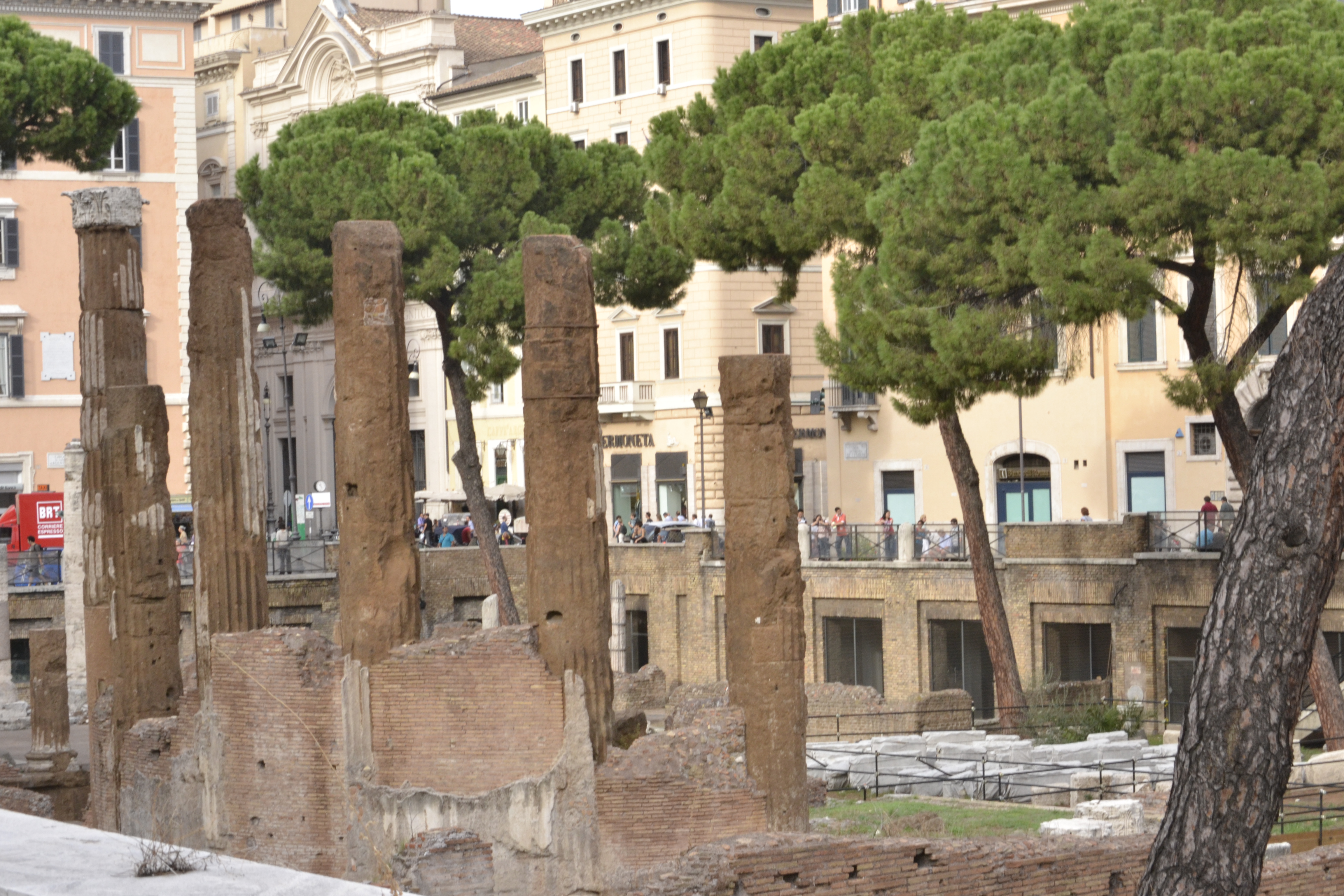
Cones filled with chocolate gelato melted down the hands of children strolling down the street. Vespas and smart cars edged their way between the bus and curb, hurried to reach their destination. Couples looked over menus at small tables outside of lovely cafes where waiters carried trays of pasta and fine desserts while the bus continued along its route. 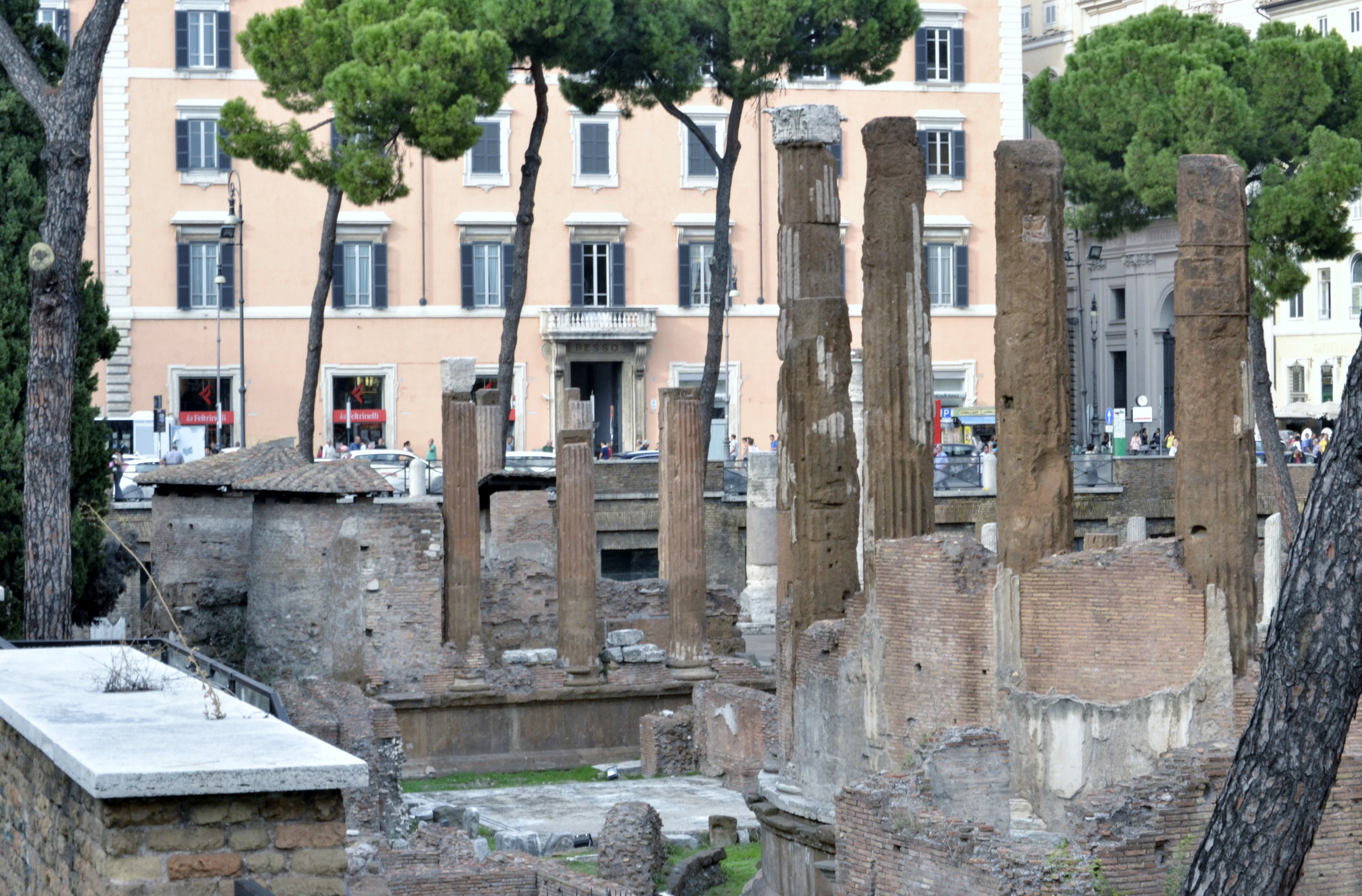
In the heart of the city, I couldn’t help but notice the interesting ruins dating back to the Roman Republic, The Area Sacra di Largo Argentina, protected by an outer brick wall, appeared 50 feet below street level. The archaeological remains were discovered during a recent excavation attempt and archaeologists dated the columns back to the reign of Caesar. After further research, they determined that this was the location where Julius Caesar had been murdered in 44 BC.
I had come full circle and continued on with the HOHO tour until we reached the Colosseum stop. I was so excited to explore one of the most significant symbols of the Roman Empire where gladiatorial fights and mock sea battles took place.
Entering the Flavian Amphitheatre, I imagined the crowded hustle and bustle of 80,000 spectators securing their seats in preparation for the spectacular show. As I climbed towards the nosebleed seats, I couldn’t help but wonder what it would have been like during the height of Roman rule to meet up with my friends in the segregated sections for “Women Only”. From this vantage point, arched windows framed picturesque scenes to include the Palatine Hill and the Arch of Titus guarding the entrance to the Roman Forum.
With my audioguide in tow, I made my way back to the starting point of the self-guided tour taking in the spectacular view. I explored every possible highlight of the arena with the exception of the Hypogeum (Underground), the Arena, the Third Tier and the Belvedere. The history of the Colosseum as well as its architecture is quite impressive and I found several amazing opportunities for capturing picturesque scenes. 
After spending three hours studying the unique features and history of the Colosseum Amphitheater, I caught the next bus, fascinated by the elaborate Roman fountains as I continued the tour. In addition to the Trevi Fountain, one of the largest founts in Rome is the Fontana delle Naiadi, located in the Piazza della Republicca.
The powerful resemblance of the sea god Glaucus rising up from the basin signifies the “dominion of man over the forces of nature”. Four naiads surround Glaucus representing the Nymph of the Lakes (the swan), Nymph of the Rivers (water snake), Nymph of the Oceans (the sea horse) and the Nymph of the Underground (mysterious dragon). The exquisite detail exhibits the incredible talent of sculptor Mario Rutelli. 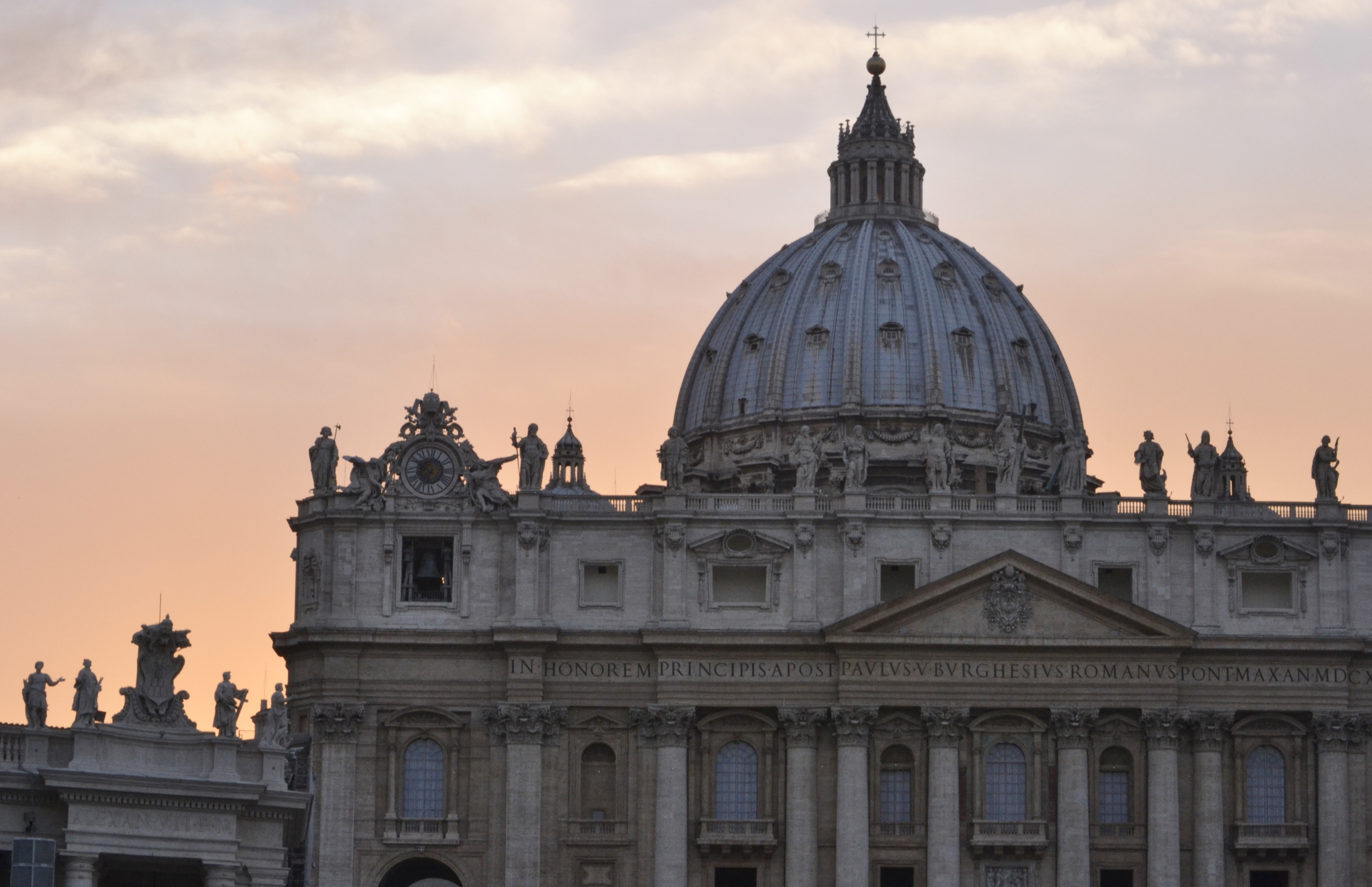
My day was drawing to a close as I exited the double decker. I took some time to admire the sun beginning to set behind the basilica with its famous dome dominating the skyline. The colorful hues of oranges and pinks provided a spectacular backdrop and this moment was forever imprinted on my mind.
Having experienced such an exhilarating day, I could not wait for another full day in Rome where I would once again board the train to await a new adventure of exploration.
Have you had the opportunity to explore Rome? What was your favorite attraction, restaurant or experience during your stay? I would love to hear about your visit if you would kindly leave a message in the comments section below and if you have any questions about this amazing city, please let me know…I would be happy to help. Many thanks for following my exhilarating Hop On/Hop Off bus ride through Rome and wishing you many Happy Travels!
What to See and What to Do:
Explore Rome Aboard the Hop On/Hop Off Bus with Omnia Ticket/Rome and Vatican Pass
St. Peter’s Basilica
Piazza San Pietro
00120 Città del Vaticano, Vatican City
Telephone: +39 06 698 83731
- Admission Fee: Free; Additional charge of 6 Euros to climb 551 stairs to the top of the dome or a charge of 8 Euros to the terrace and an additional 320 steps.
- Hours: Open daily from 7AM to 6:30PM (October to March); open daily from 7AM to 7PM (April – September) The dome opens at 8AM and closes one hour before the basilica closes.
- Amenities: audio headsets, tour guides (additional charge), cafeteria
- Audio Guides and Guided Tours: Audio guides are available for a nominal fee. Guided Tours are available through tour companies such as Viator, or contact the Basilica directly.
- Length of the Tour: 2 – 3 hours for the Basilica only
- Tips for Your Visit: Additional sites are available to tour within St. Peter’s Basilica. The Treasury (entrance from inside the basilica): Open 9AM to 6:15PM from April to September and from 9AM – 5:15 PM from October to March. Vatican Grottoes (entrance at the transcept of St. Peter’s Basilica): Open every day from 7AM to 6PM April to September and open from 7AM to 5PM, October to March. Visit to the Tomb of St. Peter and the Pre-Constantinian Necropolis by making arrangements through the Ufficio Scavi by phone: +39 06 69 88 53 18 or email at scavi@fsp.va. Wear comfortable shoes, especially if you are visiting the dome. If you have plans to visit the Vatican Museum, start here and then the Basilica. Do a little research before you go or purchase a tour book, which will explain all of the artwork and fascinating hidden treasures within the cathedral.
- Additional Suggestion: Don’t miss the Vatican Gardens (guided tour only, dress code) and the Vatican Museum for an additional charge. Vatican Gardens contact information: +39 06 69884676 or by email at visiteguidate.musei@scv.va. Vatican Museum: through tour operator (i.e., Viator), or contact the museum directly: +39 06 698 84676 (for individual tickets); +39 06 698 83145 (groups) or by email: visiteguidate.musei@scv.va.
Castel Sant’Angelo
Lungotevere Castello, 50
00193 Roma RM, Italy
Telephone: +39 06 681 9111
- Admission Fee: 14 Euros per person; Free for visitors 18 and under; Free on the first Sunday of the month; Castel de Angelo is included in the Roma Pass.
- Hours: Open daily from 9AM to 7:30PM (Closed New Year’s Day, May 1st and Christmas). The Castel may be closed for special events, so check the website before arriving: http://castelsantangelo.beniculturali.it/ (translate the page)
- Amenities: Audio guides, bookshop, outdoor cafeteria, elevator (available on request), free app available through local wifi, library and documentation service
- Guided Tours and Audio Guides: Guided tours for the “Secret Castle” are available for groups of 15 visitors or more. (English at 10AM and 4PM)
- Scenic View: Gorgeous view Vatican City and Rome from the Terrace of the Angel on Level 7. Great place to watch the sunset.
- Length of the Tour: 2 to 3 hours, an additional hour for lunch
- Tips for Your Visit: Wear comfortable shoes, download the app before your visit as there have been complaints on connecting to wi-fi,
Area Sacra di Largo Argentina
Largo di Torre Argentina
00186 Roma RM, Italy
Updated February 23, 2018: This site is undergoing restoration and is closed at this time.
Colosseum/Flavian Amphitheater
Piazza del Colosseo, 1
00184 Roma RM, Italy
- Admission Fee: 12 Euros per adult, children under the age of 17 are free; The Admission Fee includes entrance into Palatine Hill and the Roman Forum. Additional fee for a guided tour of the underground. All guests are FREE the first Sunday of the month.
- Hours: Open daily from 8:30AM to 3:30PM (closed January 1st and December 25th) The ticket counter closes one hour before closing time. Confirm with the Colosseum’s website: www.the-colosseum.net/around/visit.htm
- Amenities: audio headsets, tour guides (additional charge), bookstore
- Audio Guides and Guided Tours: Audio guides are available for a nominal fee.
- Length of the Tour: 2 – 3 hours total (another hour for the underground tour)
- Tips for Your Visit: The Colosseum is the most visited attraction in Rome. While the ticket line may be long, you may want to consider purchasing your ticket at the Palatine Hill as your ticket also includes entrance into the Roman Forum and the Palatine Hill, located next door. For security reasons, it is strictly forbidden to enter the attraction with backpacks, camping equipment, bulky bags, luggage or trolley. Medium and small-sized backpacks are permitted, but must be screened by metal detectors. Bags will be opened and visually inspected by security. Due to new security measures it is necessary to arrive at least 30 minutes before collecting your reservation at the ticket counter. Wear comfortable shoes and bring your water bottle where you can fill it with water.
Palatine Hill
Via di San Gregorio, 30
00184, Roma, RM, Italy
- Admission Fee: 12 Euros per adult, children under the age of 17 are free; The Admission Fee includes entrance into the Roman Forum and the Colosseum.
- Hours: Open daily from 8:30AM to 3:30PM (closed January 1st and December 25th) The ticket counter closes one hour before closing time. Confirm with the Colosseum’s website: https://www.romaexperience.com/palatine-hill/
- Amenities: audio headsets, tour guides (additional charge), bookstore
- Audio Guides and Guided Tours: Audio guides are available for a nominal fee.
- Length of the Tour: 2 – 3 hours total
- Tips for Your Visit: The Colosseum is the most visited attraction in Rome. Your ticket also includes entrance into the Palatine Hill, located next door. For security reasons, it is strictly forbidden to enter the attraction with backpacks, camping equipment, bulky bags, luggage or trolley. Medium and small-sized backpacks are permitted, but must be screened by metal detectors. Bags will be opened and visually inspected by security. Wear comfortable shoes and bring your water bottle to refill at the drinking fountains and think about bringing a picnic to enjoy on the grounds.
Roman Forum
Via della Salara Vecchia, 5/6
00186 Roma RM, Italy
Telephone; +39 06 0608
- Admission Fee: 12 Euros per adult, children under the age of 17 are free; The Admission Fee includes entrance into the Palatine Hill and the Colosseum.
- Hours: Open daily from 8:30AM to 3:30PM (closed January 1st and December 25th) The ticket counter closes one hour before closing time. Confirm with the Roman Forum’s website: https://turisimoroma.it/cosa-fare/fori
- Amenities: audio headsets, tour guides (additional charge)
- Audio Guides and Guided Tours: Audio guides are available for a nominal fee.
- Length of the Tour: 2 – 3 hours total
- Tips for Your Visit: Your ticket to the Roman Forum includes The Colosseum and Palatine Hill. For security reasons, it is strictly forbidden to enter the attraction with backpacks, camping equipment, bulky bags, luggage or trolley. Medium and small-sized backpacks are permitted, but may be screened by metal detectors. Bags may also be opened and visually inspected by security. Wear comfortable shoes and bring your water bottle to refill at the drinking fountains.
Where to Stay:
Courtyard Rome Central Park
Via Giuseppe Mosacti 7
Rome 01168 Italy
Telephone: +39 06 355741
Where to Eat:
Food Stall near St. Peter’s Cathedral for a hot dog panini! Yum!
What to Eat:
- Artichokes: steamed or fried
- Cacio e Pepe: Cacio is a type of cheese from Rome’s countryside made from sheep’s milk. The dish is served over pasta and seasoned by black pepper.
- Carbonara: creamy white pasta served with pancetta and noodles
- Gelato: You have not had gelato until you have had it in Rome!
- Maritozzi is a popular breakfast pastry with chocolate chips served with espresso. Some maritozzi are filled with cream as well.
- Pecorino Romano cheese
- Pizza al Taglio is Rome’s answer to pizza with red sauce, meats, vegetables and cheeses. I also love the Italian margarita pizza with red sauce, mozzarella cheese and topped with basil.
- Porcetta: Pork wrapped around herbs and roasted on a spit
- Saltimbocca is a dish made with veal and sage wrapped in prosciutto, cooked in white wine and butter.
- Suppli is considered an Italian snack made of rice and meat with tomato sauce and filled with mozzarella cheese and then deep-fried. It reminds me of arancini in the US.
Where to Drink:
Il Goccetto (for wine)
Via dei Banchi Vecchi, 14
00186, Roma RM, Italy
Telephone: +39 06 9944 8583
Terrazza Borromini
Via di Santa Maria dell’Anima, 30A
00186 Roma RM, Italy
Telephone: +39 06 6821 5459
While the drinks are pricey, it will be worth the cost for the fabulous views.
What to Read:
- Imperium, by Robert Harris
- Roma, by Steven Saylor
- SPQR, by Mary Beard
- The Twelve Caesars, by Robert Grave
Photo Guide for Rome:
- Campo de’ Fiori for photos of the market
- The Colosseum
- Monti for upscale boutiques, restaurants and vintage stores
- The Pincio Terrace overlooking Piazza del Popolo in northern Rome
- The top of St. Peter’s Basilica
- Trastevere neighborhood for scenic alleyways, artisan workshops, the piazza at sunset, and tiny boutiques. Find the corner of Vicolo delle Torro off of Via della Lungaretta for photo-worthy pics.
- Trevi Fountain
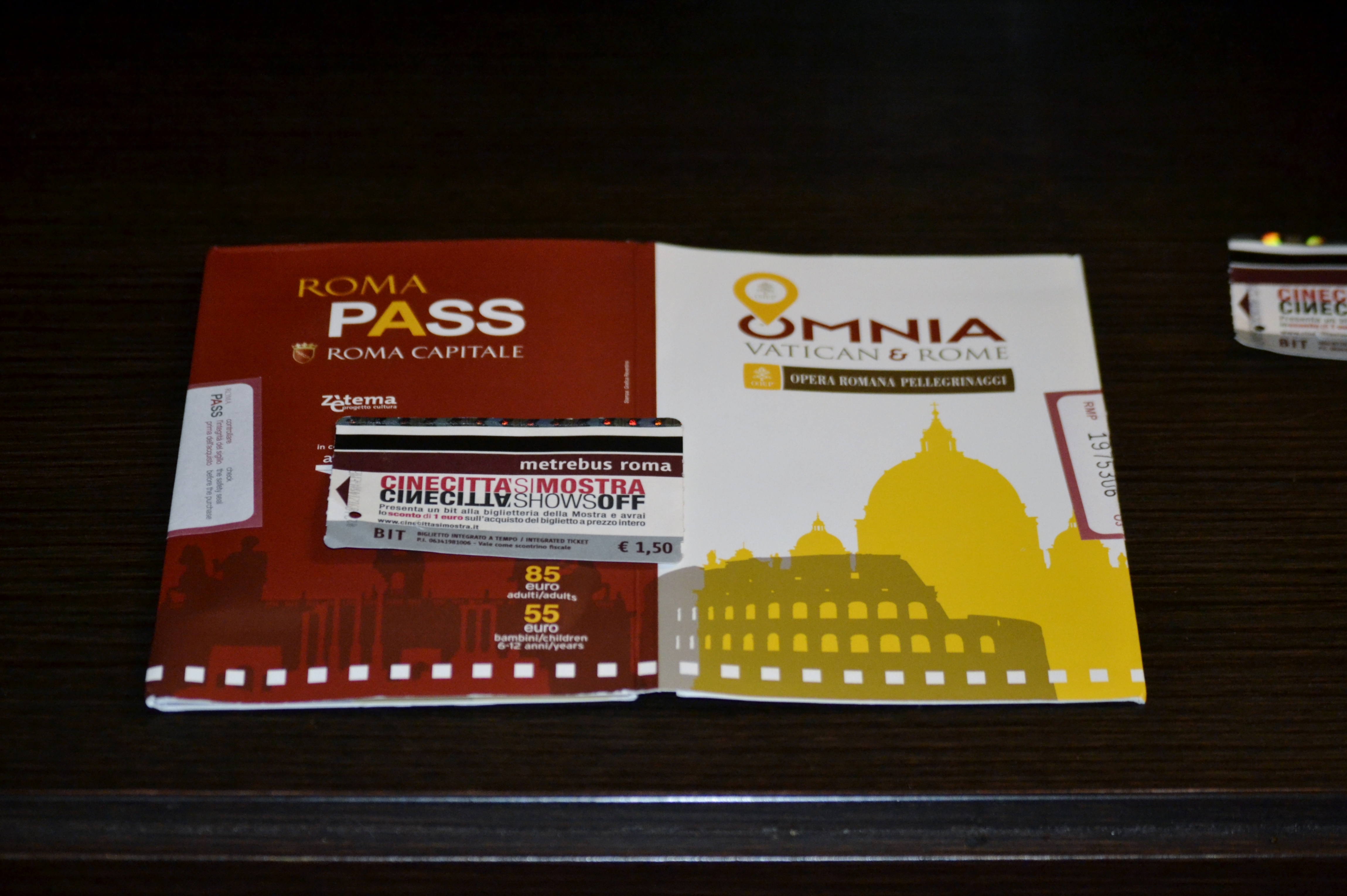
The Omnia Ticket/Rome and Vatican Pass

The Pont Sant Angelo Sculpture is located on the bridge over the Tiber River.
